第27回日本緑内障学会・招待講演
パシフィコ横浜 501+502・2016年9月18日(日) 13:35-14:25
「錯視と視機能」
立命館大学総合心理学部 北岡 明佳 email HP
2016/9/14 より 配布物(消失錯視ときらめき格子錯視)
< 消失錯視 >
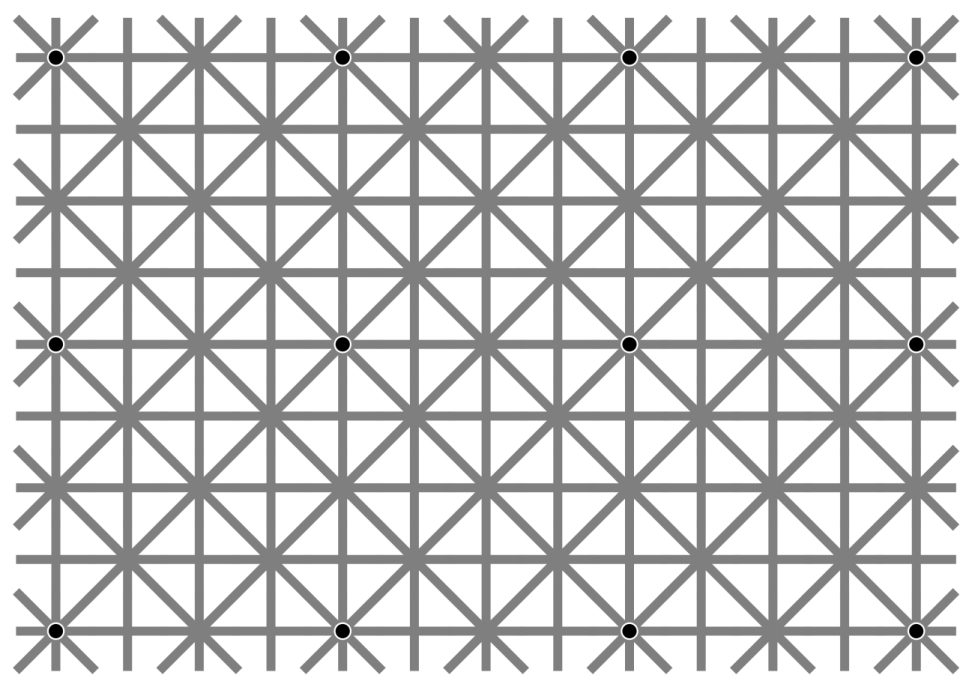
ニニオの消失錯視
12個あるドットを同時に知覚することは困難である。
2009/7/16
Ninio, J. & Stevens, K. A. (2000). Variations on the Hermann grid: an extnction illusion. Perception, 29, 1209-1217.
2016年9月11日から13日にかけてインターネット上で人気が盛り上がりました。
![]()
消える錯視クイズ
下の図に![]() はいくつあるでしょうか。
はいくつあるでしょうか。
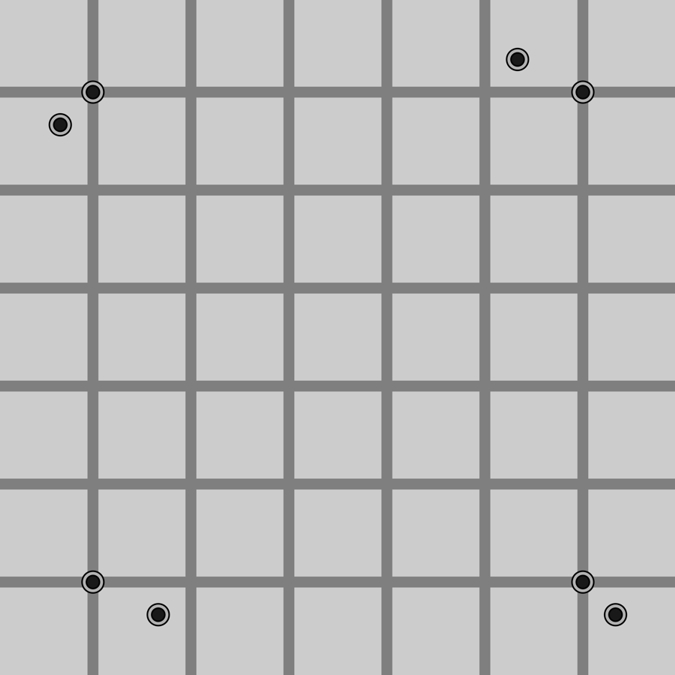
2012/12/10
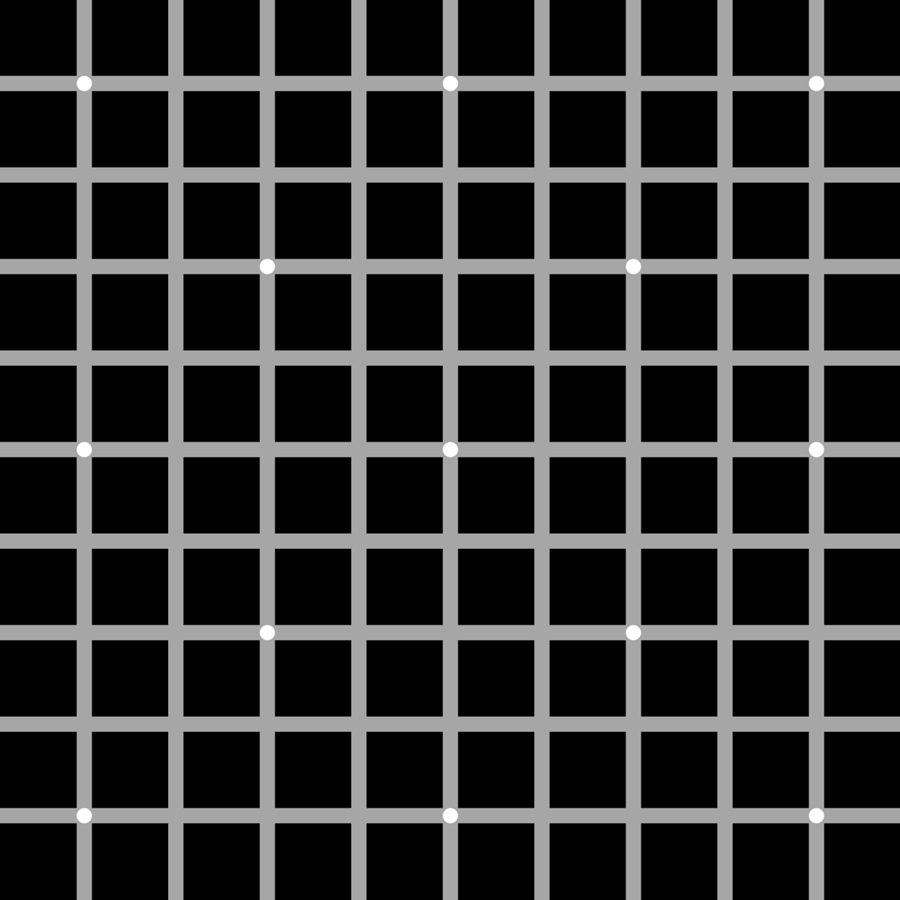
マッカナニー型の消失錯視
同時に13個の白いドットを知覚することができない。
McAnany, J. J., & Levine, M. W. (2002). The vanishing disk; a revealing quirk of the scintillating grid illusion [Abstract]. Journal of Vision, 2(7), 204a, http://journalofvision.org/2/7/204/, DOI 10.1167/2.7.204
2016/9/14
注: この図と同等の図形を、佐々木恭志郎氏(九州大学)が数か月先行して作成していたことが判明した。 <October 3, 2016>
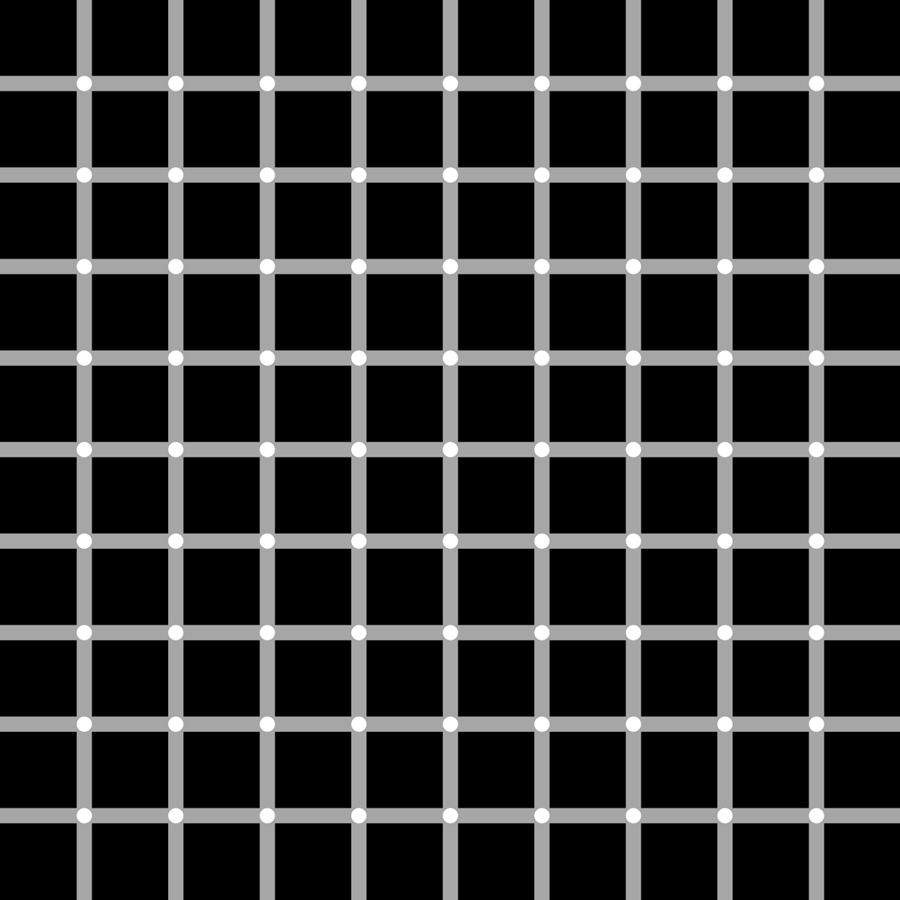
きらめき格子錯視
(効果は弱め)
白いドットの中に黒いものが「光って」見える。
Schrauf, M., Lingelbach, B., Wist, E.R. (1997) The scintillating grid illusion. Vision Research, 37, 1033-1038.
2016/9/14
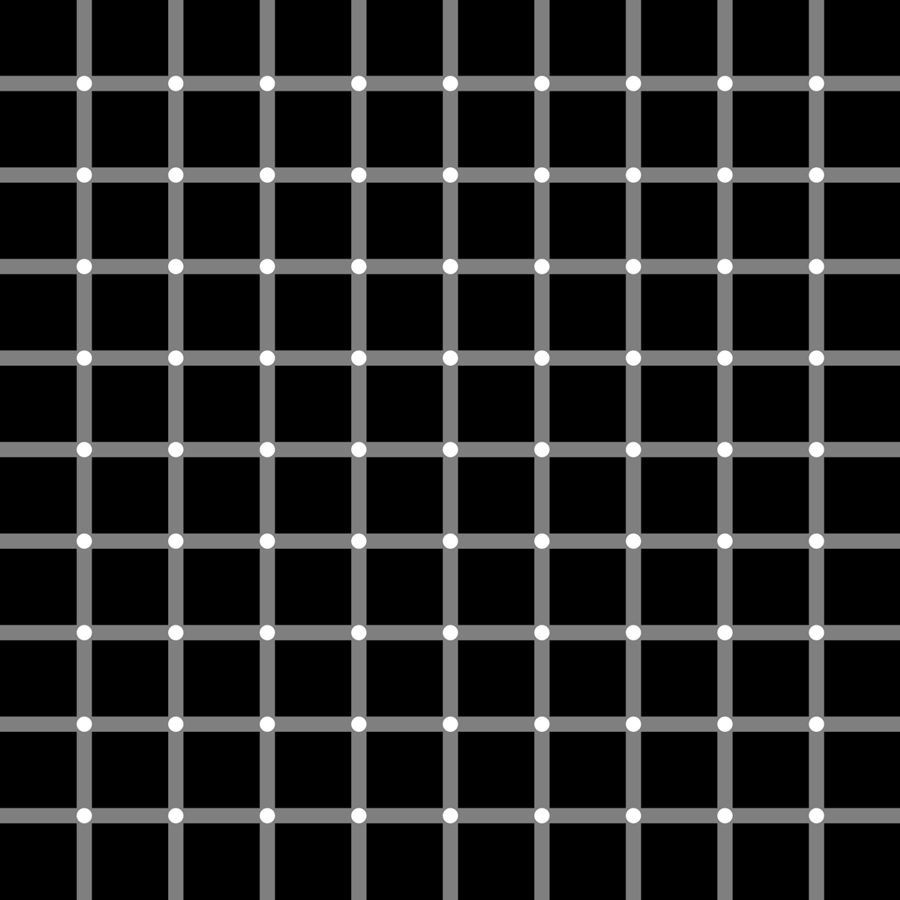
きらめき格子錯視
白いドットの中に黒いものが「光って」見える。
2016/9/14
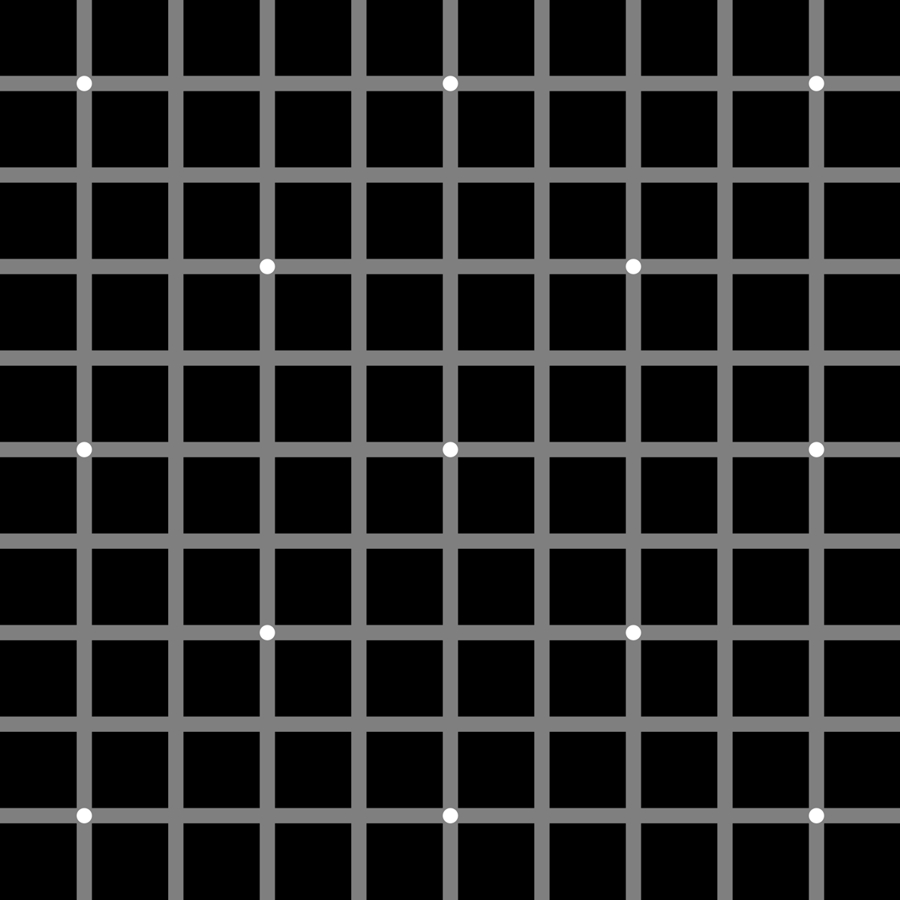
マッカナニー型の消失錯視
同時に13個の白いドットを知覚することが難しい。
注: この図と同等の図形を、佐々木恭志郎氏(九州大学)が数か月先行して作成していたことが判明した。 <October 3, 2016>
「曲線付近でのドット消失錯視」
5つの角丸長方形にはそれぞれ4つの灰色のドットが入っているが、あるドット入りの角丸長方形を見ていると、他のドット入りの角丸長方形のドットが知覚しにくくなる。
Copyright Akiyoshi Kitaoka 2016 (September 11)
「直線付近でのドット消失錯視」
5つの角丸長方形にはそれぞれ4つの灰色のドットが入っているが、あるドット入りの角丸長方形を見ていると、他のドット入りの角丸長方形のドットが知覚しにくくなる。
Copyright Akiyoshi Kitaoka 2016 (September 11)
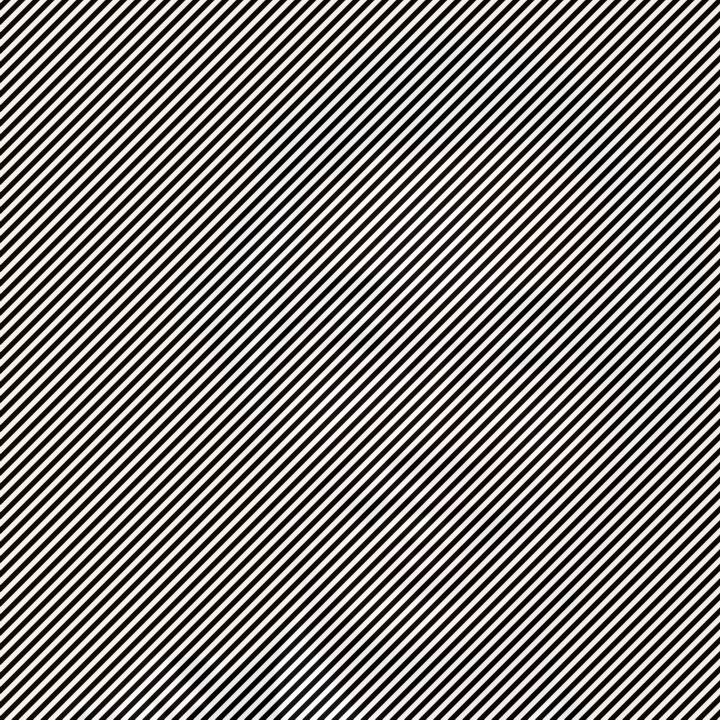
「なかなかわからない北岡」
北岡が見えるかも。
Copyright Akiyoshi Kitaoka 2015 (October 7)
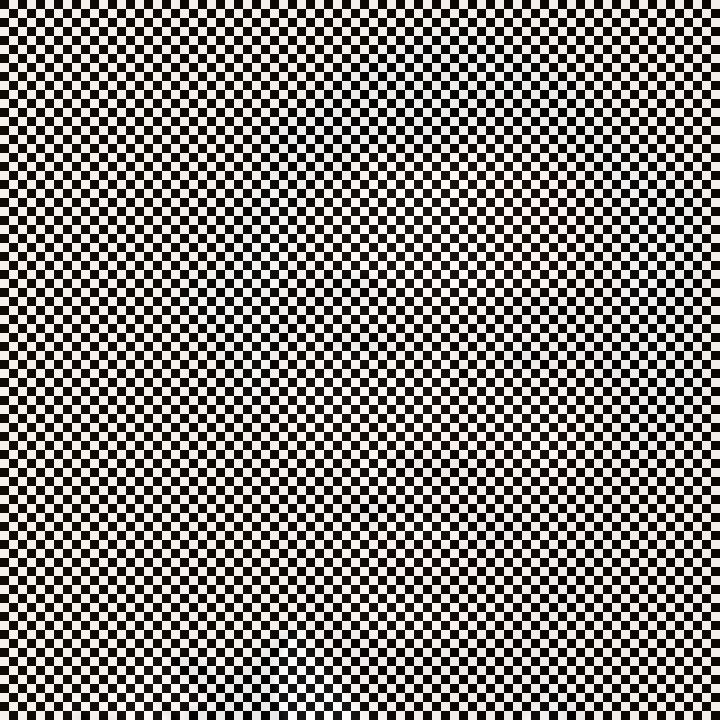
Copyright Akiyoshi Kitaoka 2016 (September 13)
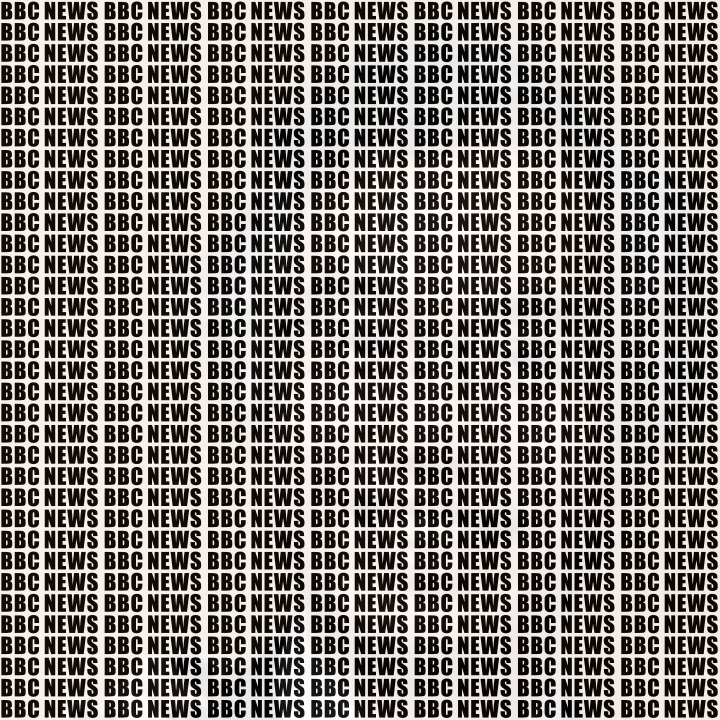
How many spots can you see in this optical illusion?
BBC News: Science & Environment, 12 September
Copyright Akiyoshi Kitaoka 2016 (September 13)

白の側にはこれだけの信号あり。結構わかる。

黒の側にはこれだけの信号あり。あまりよくわからない。ディスプレーの特性によっては真っ黒に見える。
暗点と視覚的補完
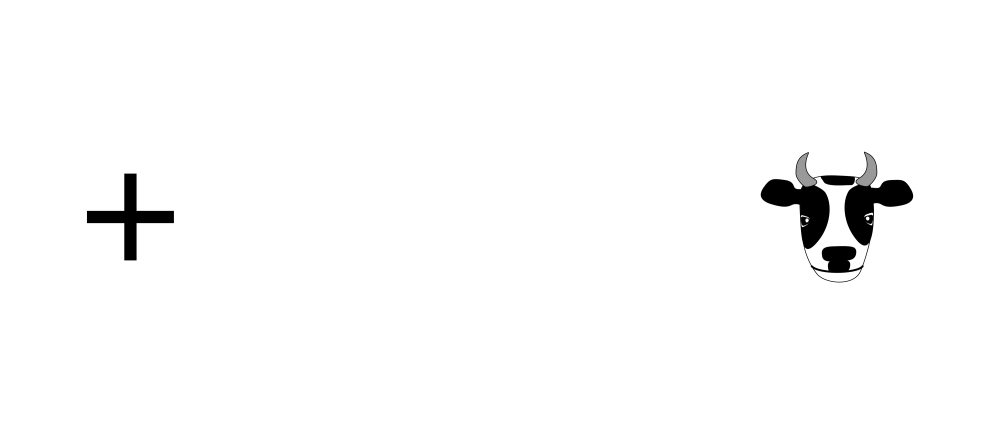
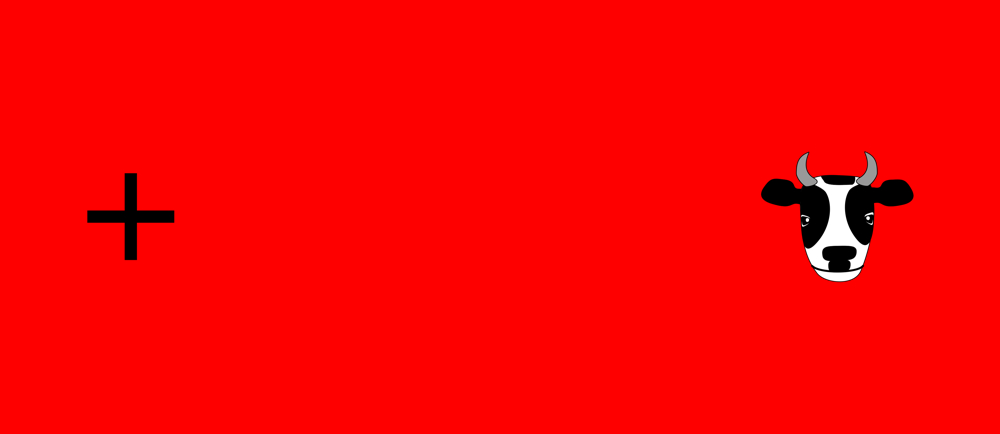
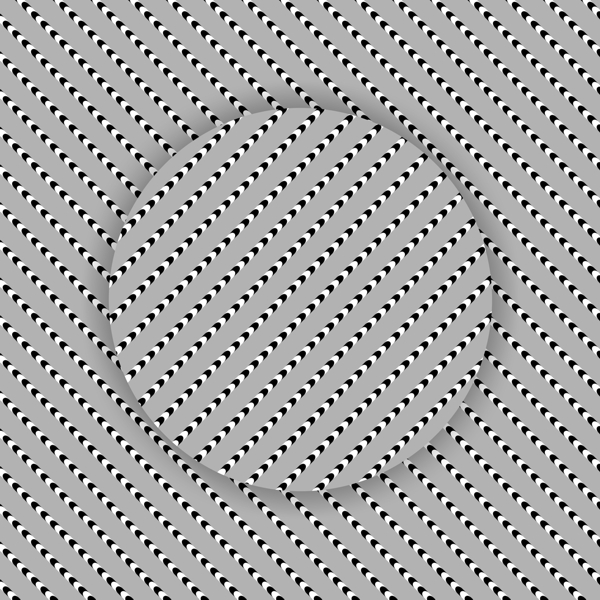
シマシマガクガク錯視
北岡の暗点が自覚できる図形
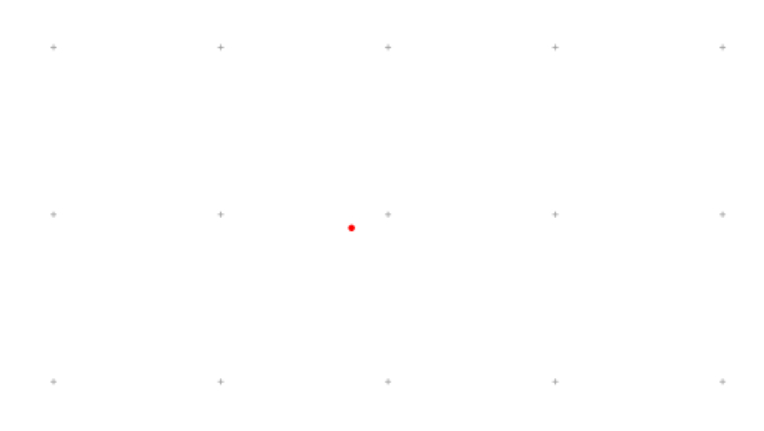
北岡の暗点(両眼性): 中心より 左方に 0.49°、下方に 0.17°、直径 0.086°程度の円形。閃輝暗点の原発部位?
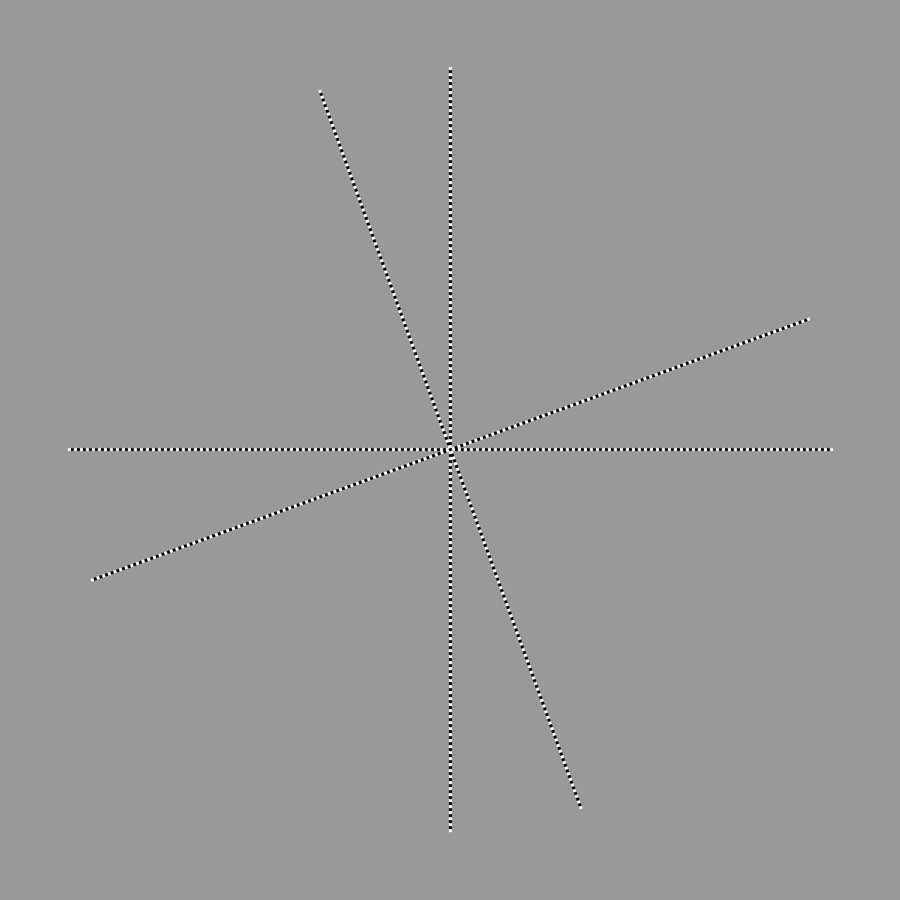
北岡用の暗点検出刺激図形
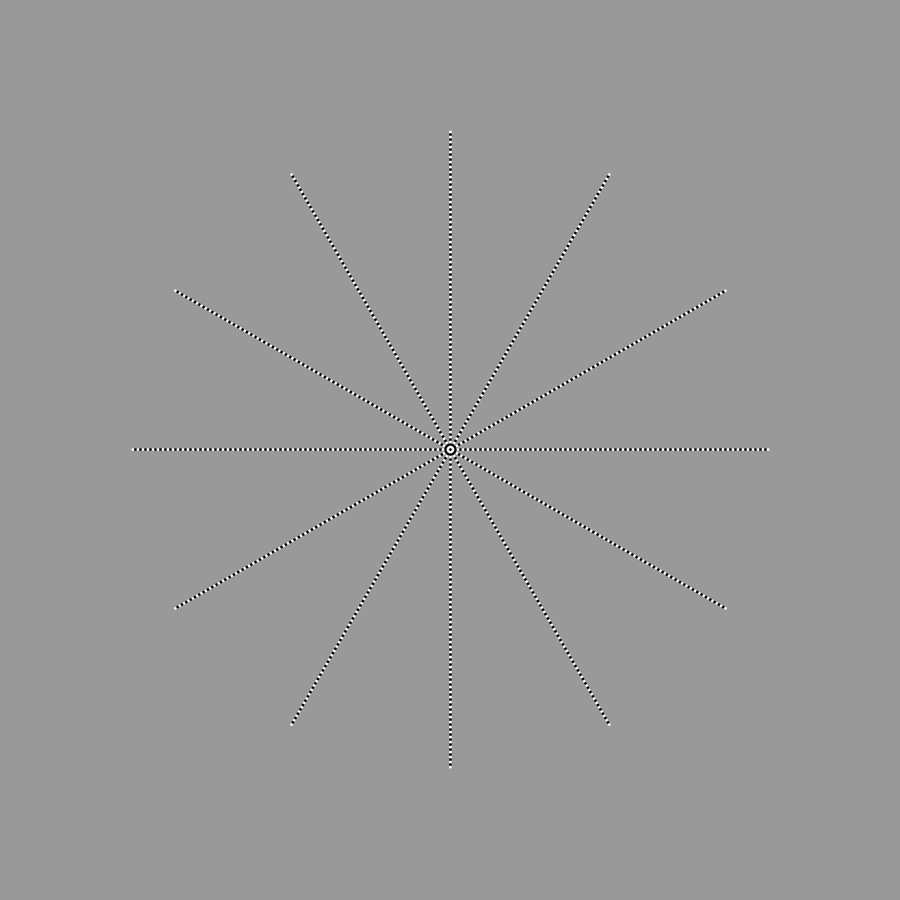
提案する暗点検出刺激図形・・・単眼あるいは両眼で見てもらい、長さが異なる線があるかどうかを尋ねる。
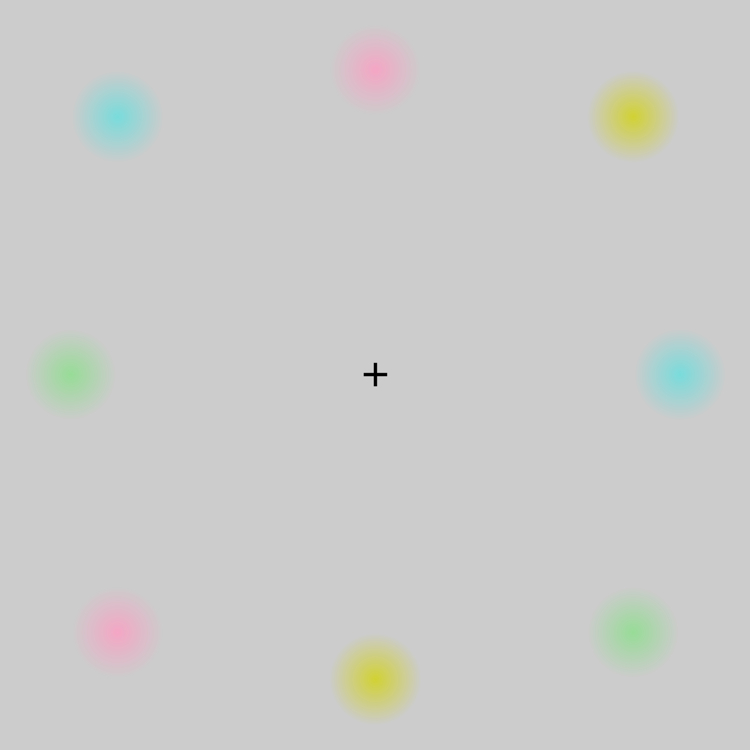
「トロクスラー効果・四色盛」
中央の固視点を見ていると、色パッチが消えていくように見える。
Copyright Akiyoshi Kitaoka 2010 (April 24)
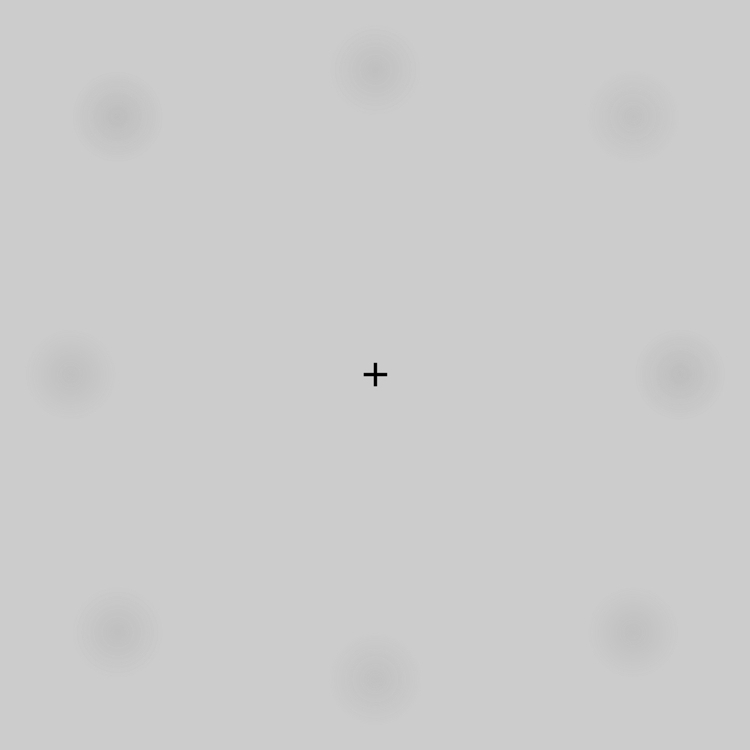
< 特定のパターンの方向に静止画が動いて見える錯視 >
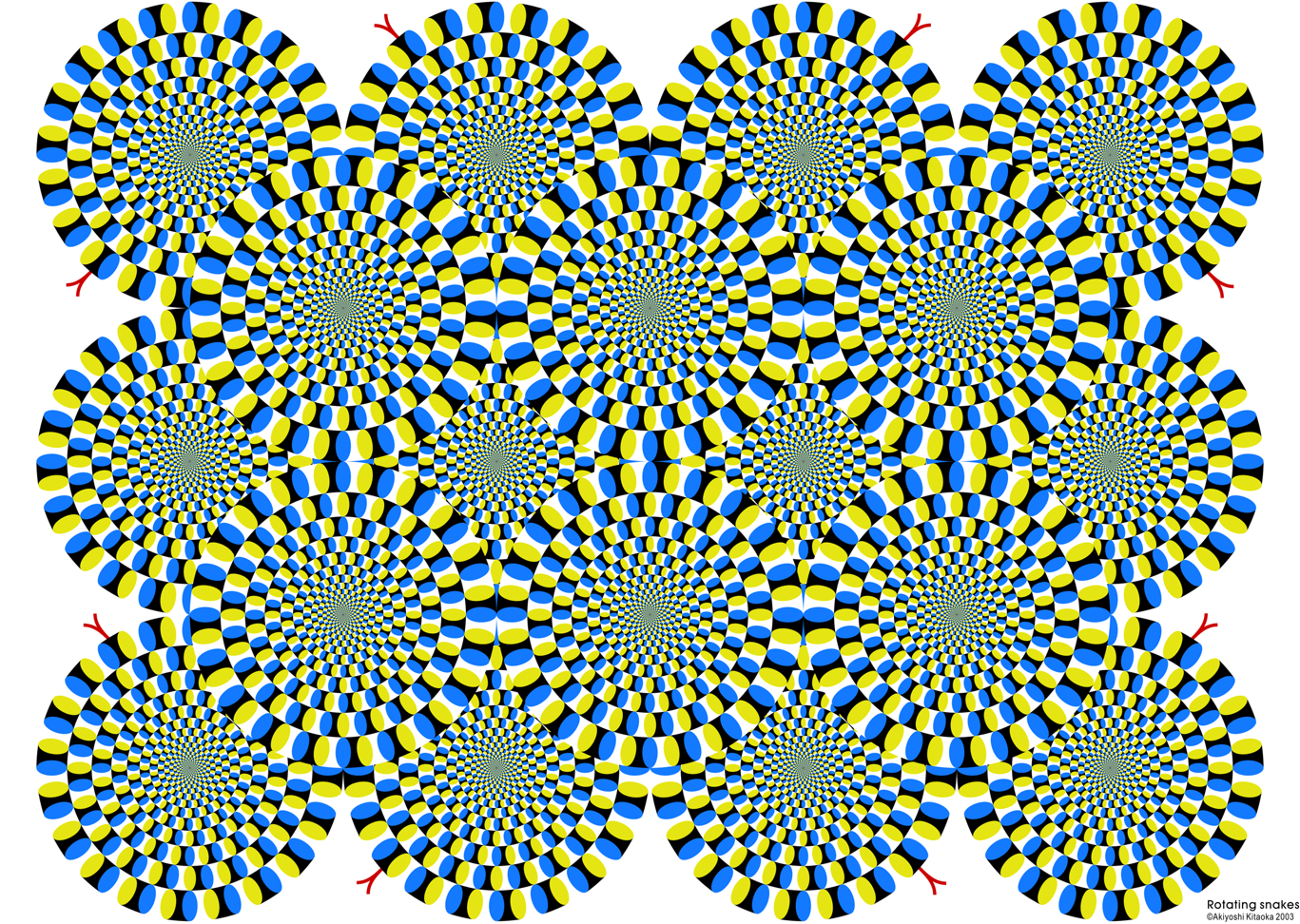
「蛇の回転」
円盤が回転して見える。
Copyright Akiyoshi Kitaoka 2003
2015年版
中心視では錯視がないか弱い。
「蛇の回転」はどのように見えるのか。年齢との関係。(Kitaoka, in press)
Table 1. The effect of age on the “Rotating snakes” illusion
-------------------------------------------------------------------
Age n Score 0 1 2 3
-------------------------------------------------------------------
0-9 169 0% 6% 17% 78%
10-19 710 1% 6% 19% 74%
20-29 219 1% 6% 27% 65%
30-39 219 1% 7% 21% 70%
40-49 221 2% 9% 29% 60%
50-59 138 8% 19% 30% 43%
60-69 98 5% 28% 38% 30%
70-79 61 15% 25% 33% 28%
80-92 28 21% 7% 39% 32%
-------------------------------------------------------------------
Total 1863 3% 9% 24% 64%
-------------------------------------------------------------------
Rating scores 0, 1, 2, 3 mean that observers reported no illusion, a slight illusion, an illusion, a strong illusion, respectively. Percentages indicate proportions in each age.
黒→濃い灰色→白→薄い灰色→黒 の方向に動いて見える。
Direction: black → dark-gray → white → light-gray → black
「蛇の回転」の作り方

この錯視のわかりやすい説明のある本
北岡明佳著 人はなぜ錯視にだまされるのか? トリック・アイズ メカニズム カンゼン刊
(定価:1,600円(税別) ISBN 978-4-86255-020-0) アマゾンのページ
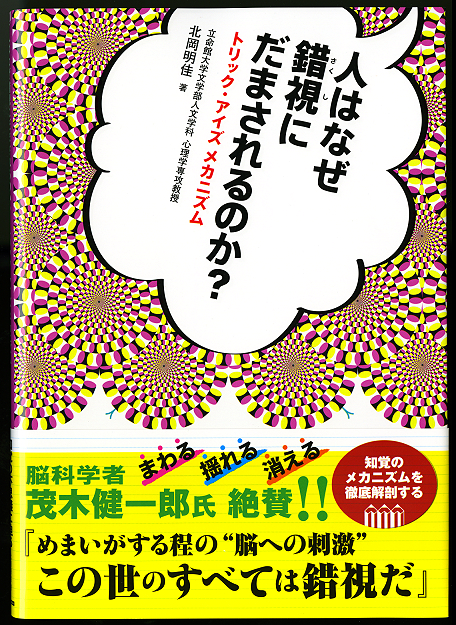
錯視のメカニズムの解説多し!
新刊!
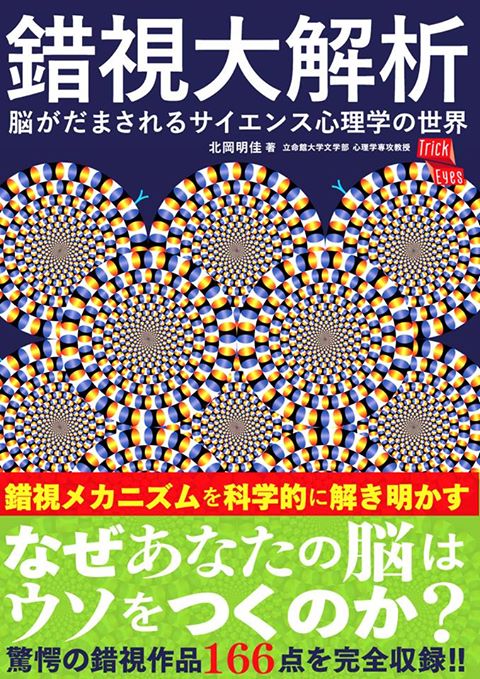
北岡明佳著 錯視入門 朝倉書店 (2010年7月) ![]() new!
new!
北岡明佳(監修) ニュートン別冊 脳はなぜだまされるのか? 錯視
完全図解 (2007年10月刊行) ![]()
A brief history of phenomenal aspects of the Fraser-Wilcox illusion group
<Kitaoka, A. (forthcoming). The Fraser-Wilcox illusion and its extension. In Shapiro, A. and Todorovic, D. (Eds.), Oxford Compendium of Visual Illusions. Oxford University Press.>
1. Fraser and Wilcox (1979)
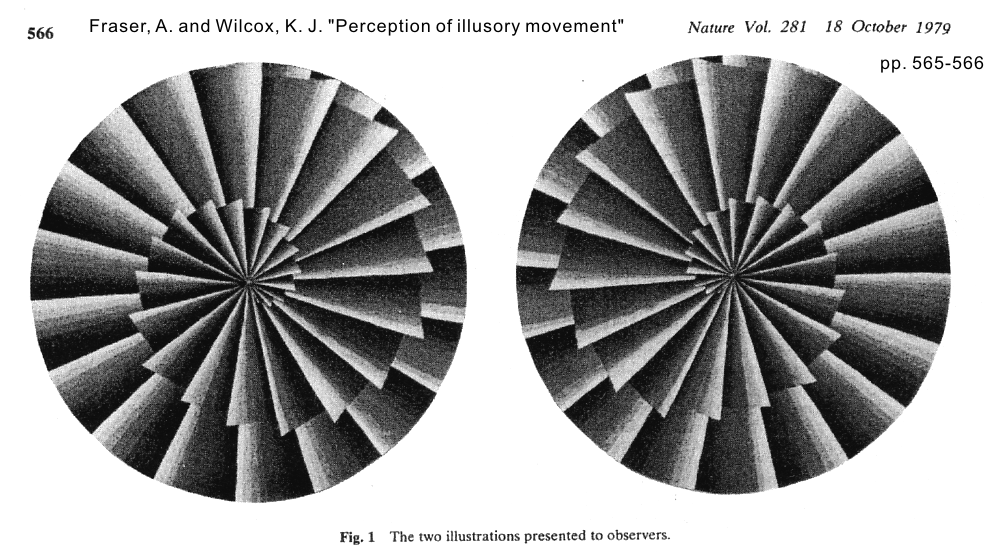
References
Fraser, A. and Wilcox, K. J. (1979). Perception of illusory movement. Nature, 281, 565-566.
Observers saw illusory motion in a stationary image which consists of repeated luminnace gradient in a saw-tooth wave form. Some reported illusory motion from dark to light along a luminance gradient, while others saw the reversal. The illusion is strong in the peripheral viewing. Fraser and Wilcox (1979) claimed that this individual difference depends on some genetic properties.
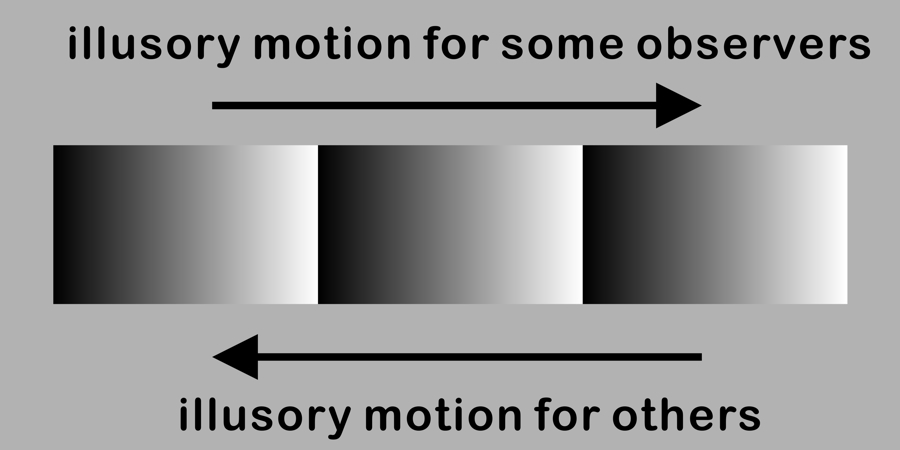
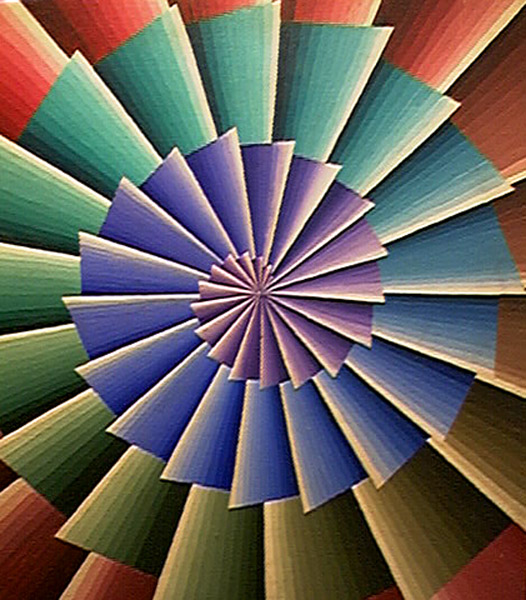
Adopted from “Alex Fraser, Geneticist and Painter”
(http://doctoralexfraser.blogspot.jp/p/spirals.html) <access August 25, 2012> (with permission from Alan Fraser)
Alex Fraser (1923-2002) was a geneticist and a painter.
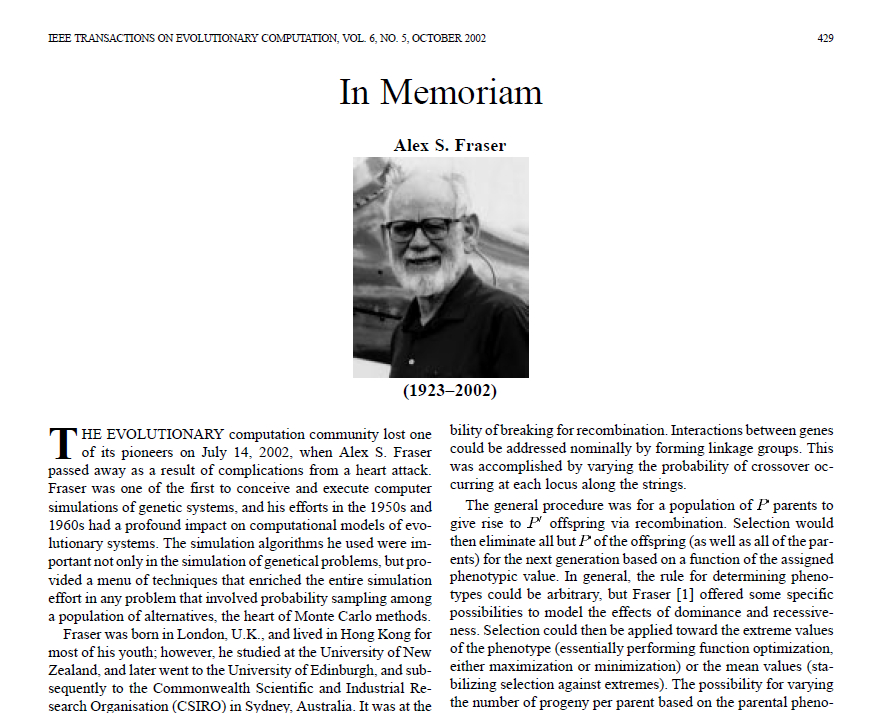
Fogel, D. B. (2002). In Memoriam: Alex S. Fraser (1923–2002). IEEE Transactions on Evolutionary Computation, 6(5), 429-430.
2. Faubert and Herbert (1999)
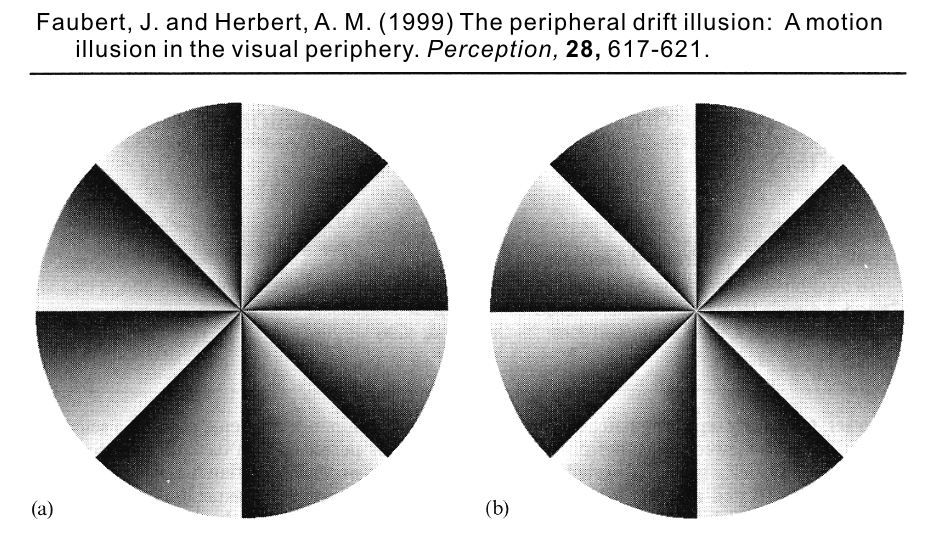
The left disk appears to rotate clockwise while the right one counterclockwise. Faubert and Herbert (1999) reported only illusory motion from dark to light along a luminance gradient. They attributed the illusory motion to the assumed time difference between responses to black and white.
References
Faubert, J. and Herbert, A. M. (1999). The peripheral drift illusion: A motion illusion in the visual periphery. Perception, 28, 617-621.
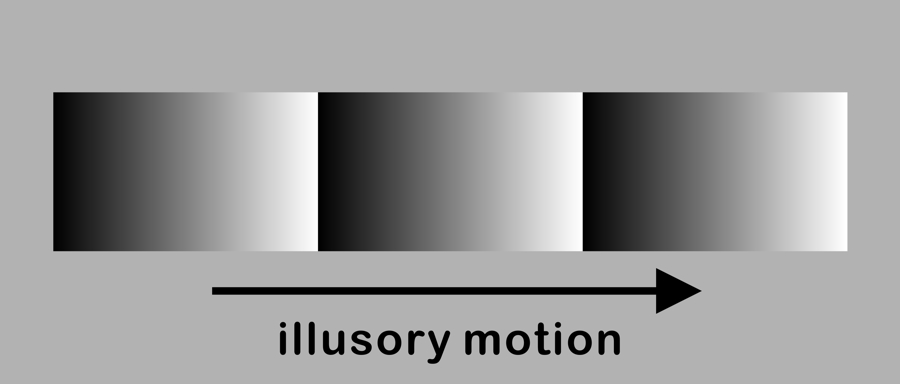
3. Naor-Raz and Sekuler (2000)
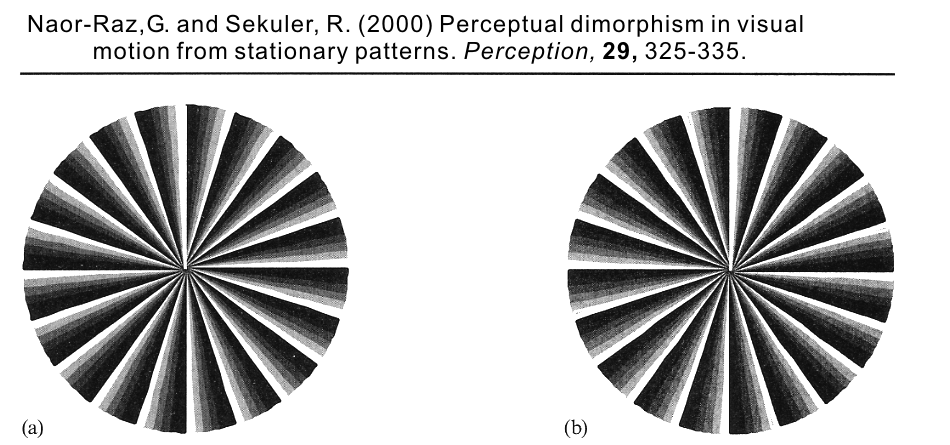
The left disk appears to rotate clockwise while the right one counterclockwise. Naor-Raz and Sekuler (2000), too, reported only illusory motion from dark to light along a luminance gradient. They revealed that the illusion magnitude is a positive, nearly linear function of contrast.
References
Naor-Raz, G. and Sekuler, R. (2000). Perceptual dimorphism in visual motion from stationary patterns. Perception, 29, 325-335.
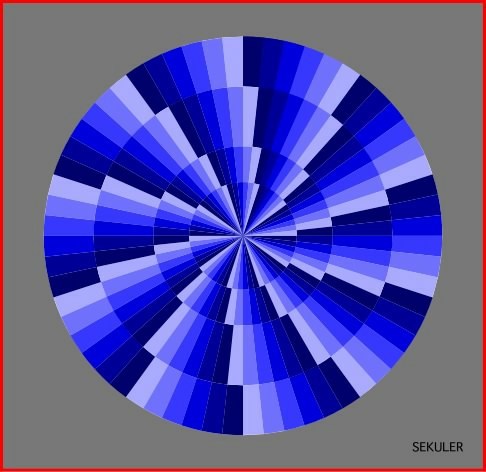
This disk appears to rotate clockwise.
This color illusion image presented by Naor-Raz and Sekuler (2000) (shown
below) might be attributable to this type.
http://www.perceptionweb.com/perception/perc0300/sekuler.jpg <access August 26, 2012>
<with permission from Robert Sekuler>

4. Kitaoka and Ashida (2003)
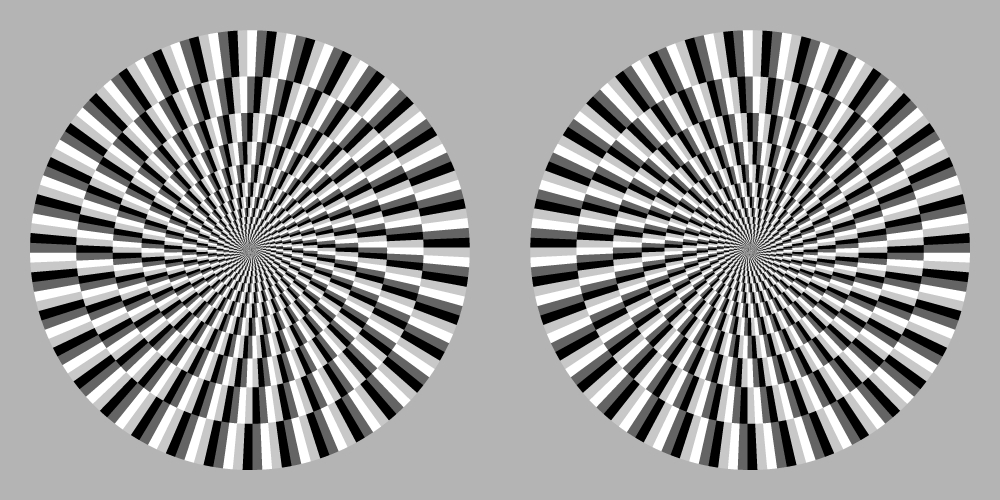
The left disk appears to rotate counterclockwise while the right one clockwise. Kitaoka and Ashida (2003) proposed that the illusory motion is strong when patterns are arranged in the following luminance order: from black, dark-gray, white, light-gray, and back to black.
References
Kitaoka, A. and Ashida, H. (2003). Phenomenal characteristics of the peripheral drift illusion. VISION (Journal of the Vision Society of Japan), 15, 261-262. PDF
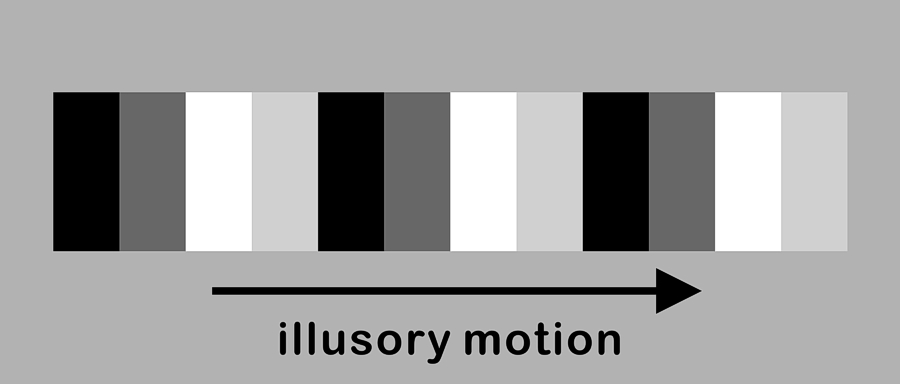
5. Kitaoka (2007)
Kitaoka (2007) classified the Fraser-Wilcox illusion into Type I, IIa, IIb and III, in each of which the dark-to-light type was distinguished from the light-to-dark one.
References
Kitaoka, A. (2007) Phenomenal classification of the “optimized” Fraser-Wilcox illusion and the effect of color. Poster presentation in DemoNight, VSS2007, GWiz, Sarasota, Florida, USA, May 14, 2007.
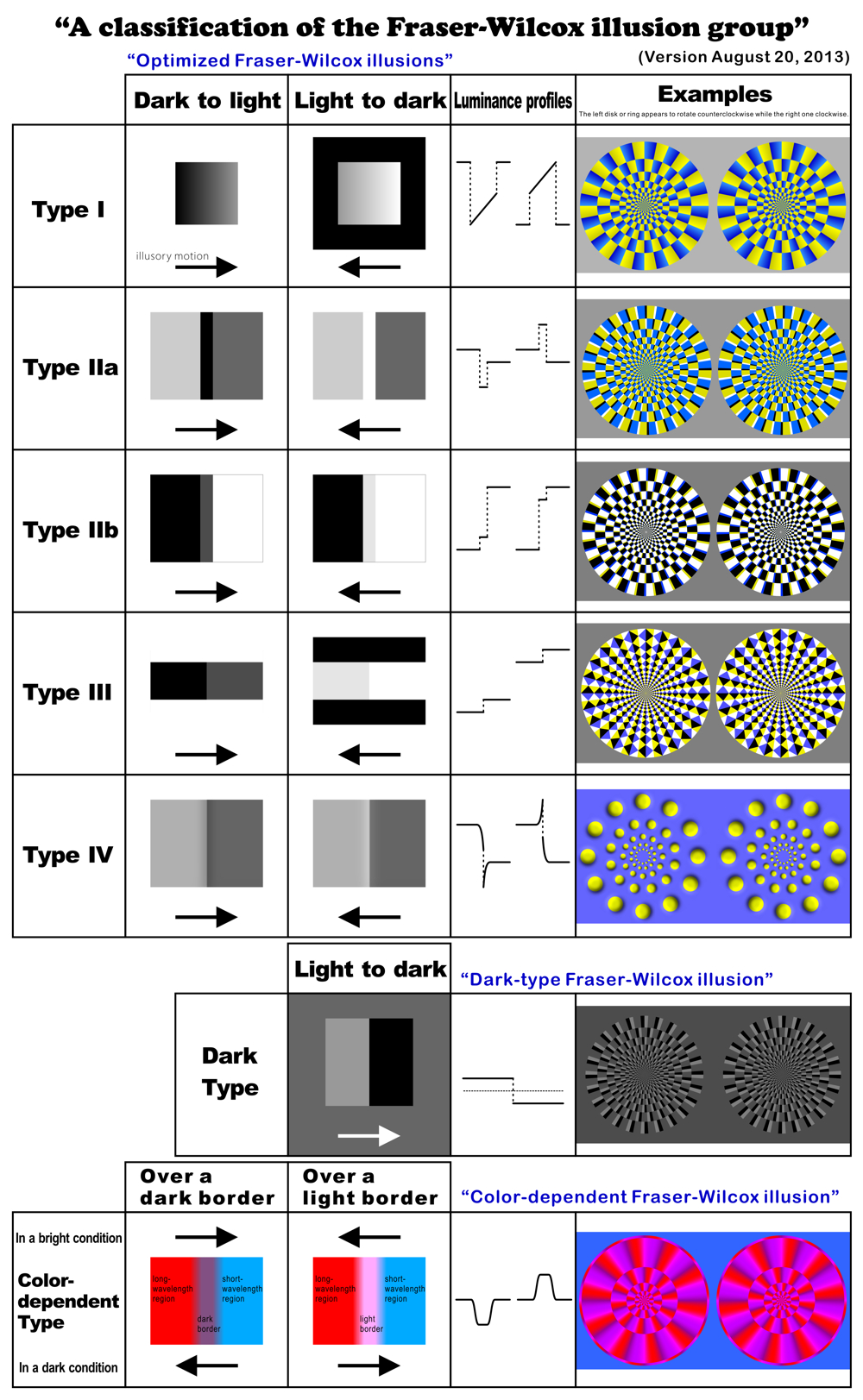
Type I

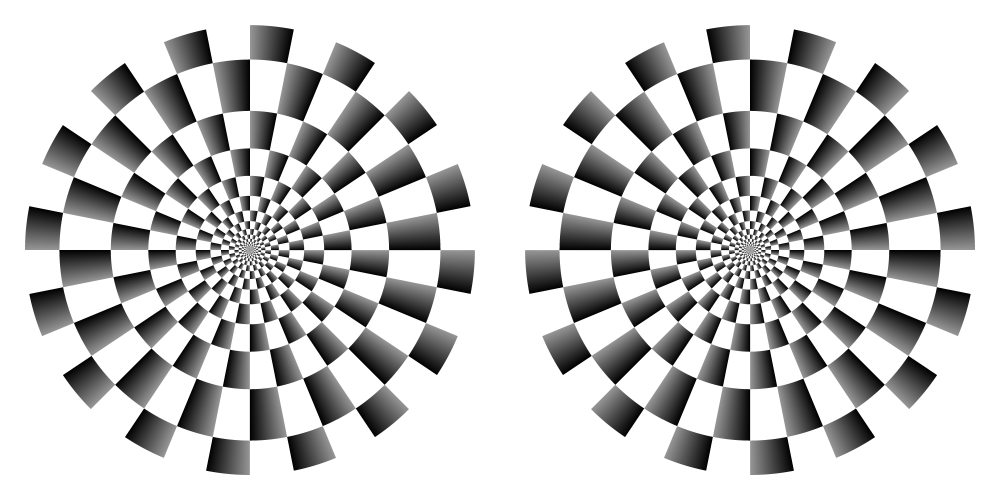
"Dark to light"
The left disk appears to rotate counterclockwise while the right one clockwise.
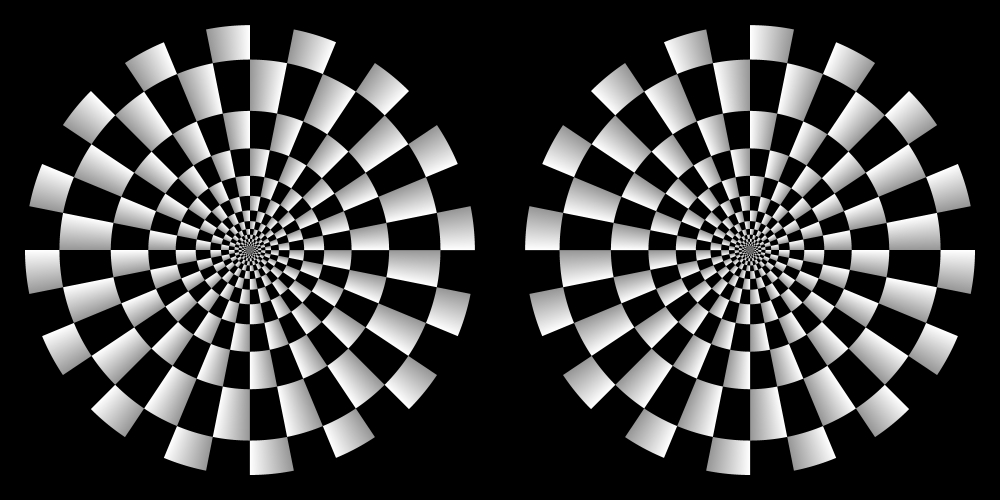
"Light to dark"
The left disk appears to rotate counterclockwise while the right one clockwise.
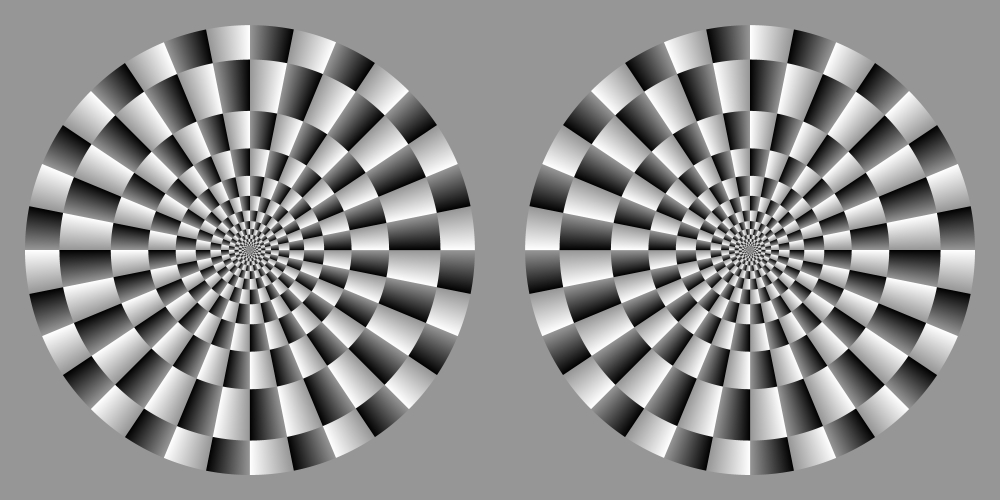
"Dark to light" and "light to dark" combined
The left disk appears to rotate counterclockwise while the right one clockwise.
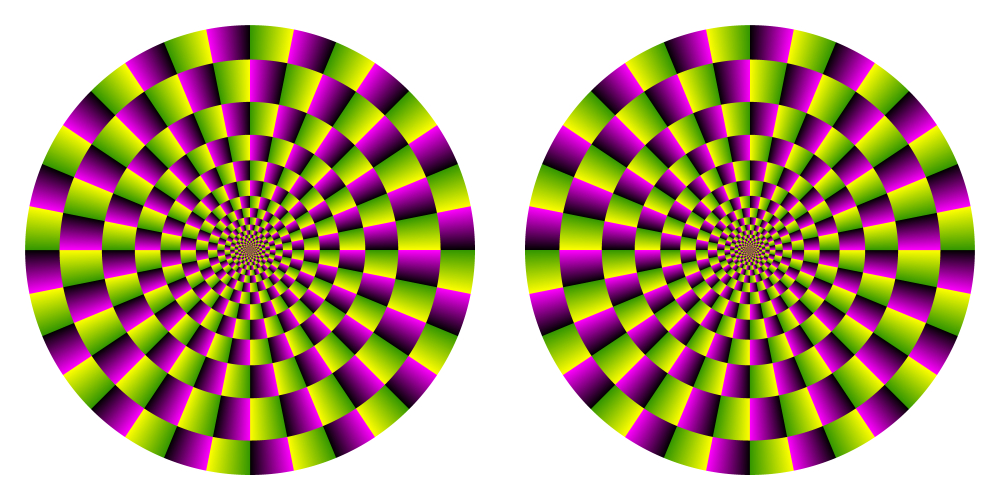
"Dark to light" and "light to dark" combined, with
color enhancement
The left disk appears to rotate counterclockwise while the right one clockwise.
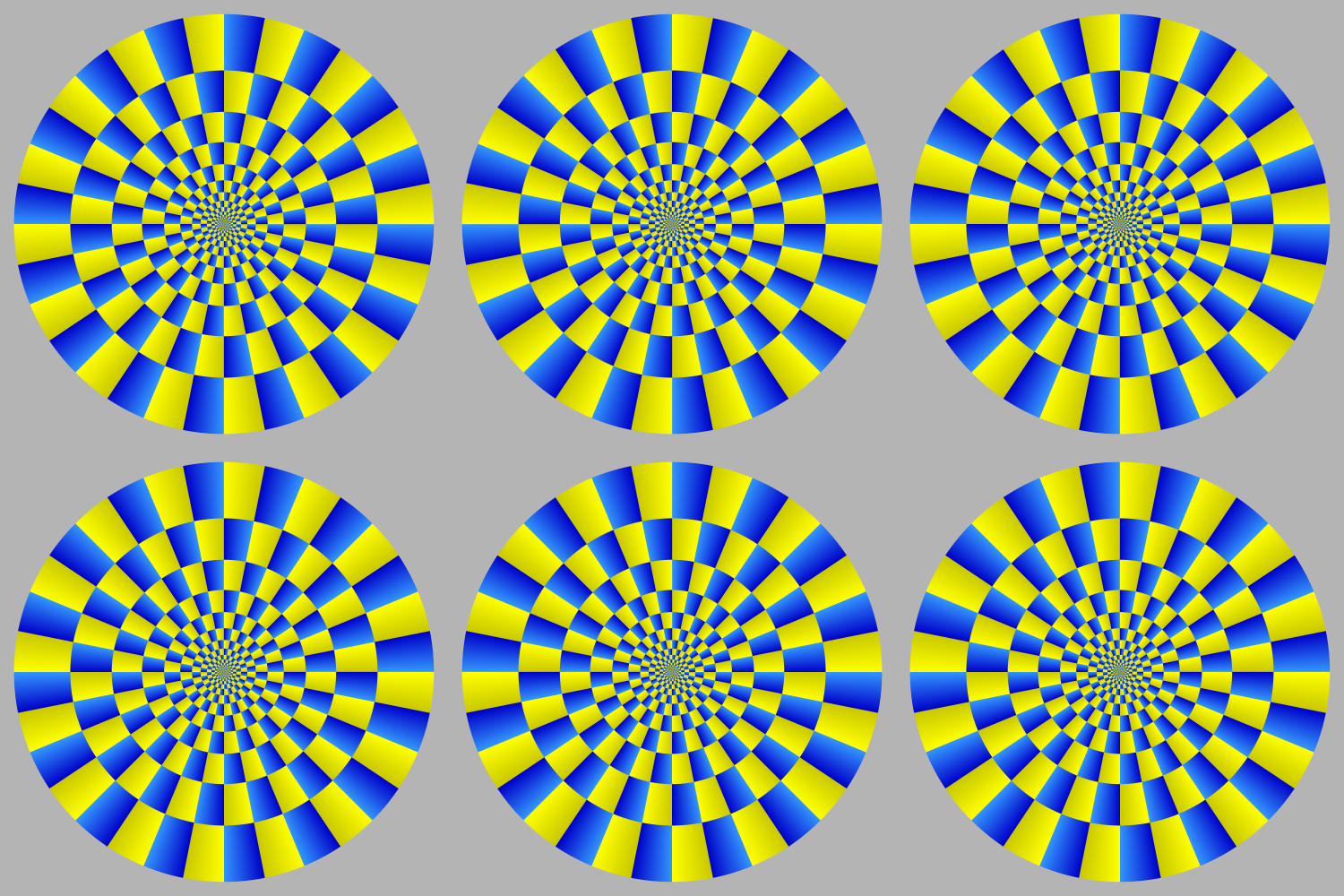
The upper-left, upper-right, and lower-middle disks appear to rotate counterclockwise
while the rest clockwise.
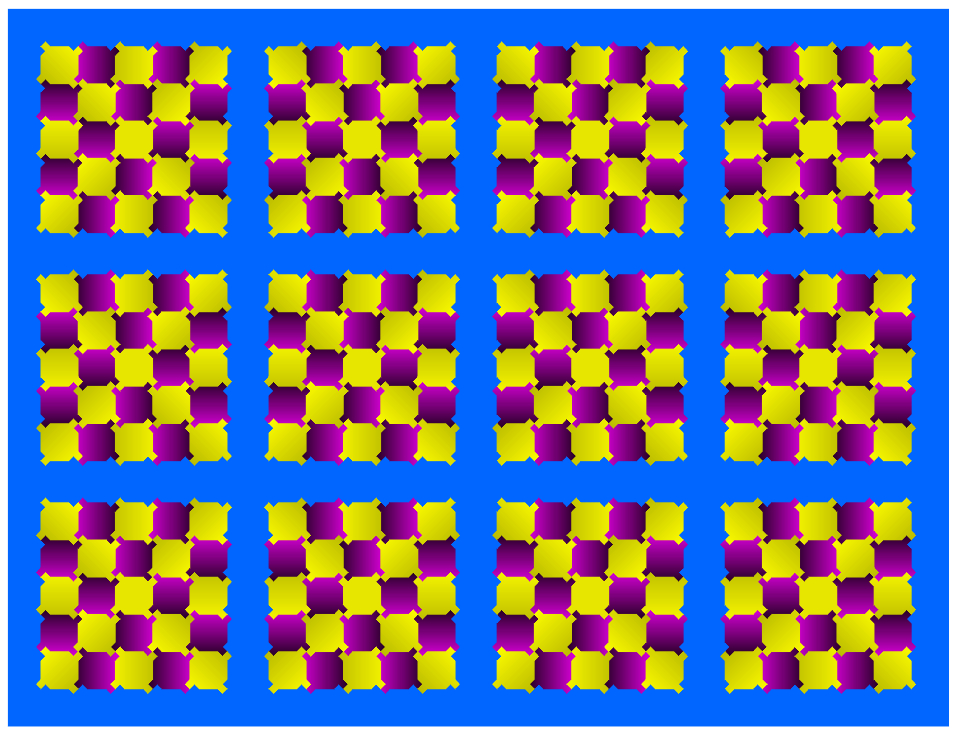
「カメの回転」
カメの集団が回転して見える。そのほか、左右に動いて見える錯視や、垂直・水平に並んだエッジが傾いて見える錯視もある。
Copyright Akiyoshi .Kitaoka 2006 (June 19)
Type II
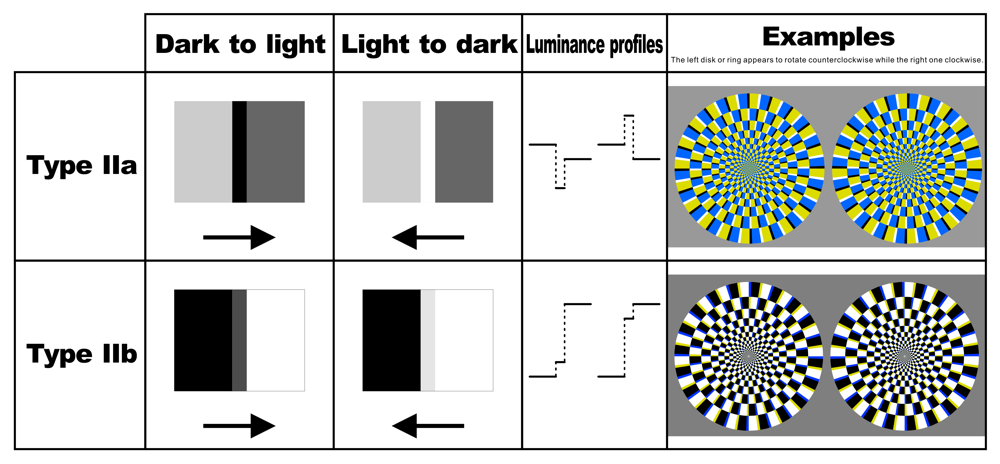
Type IIa
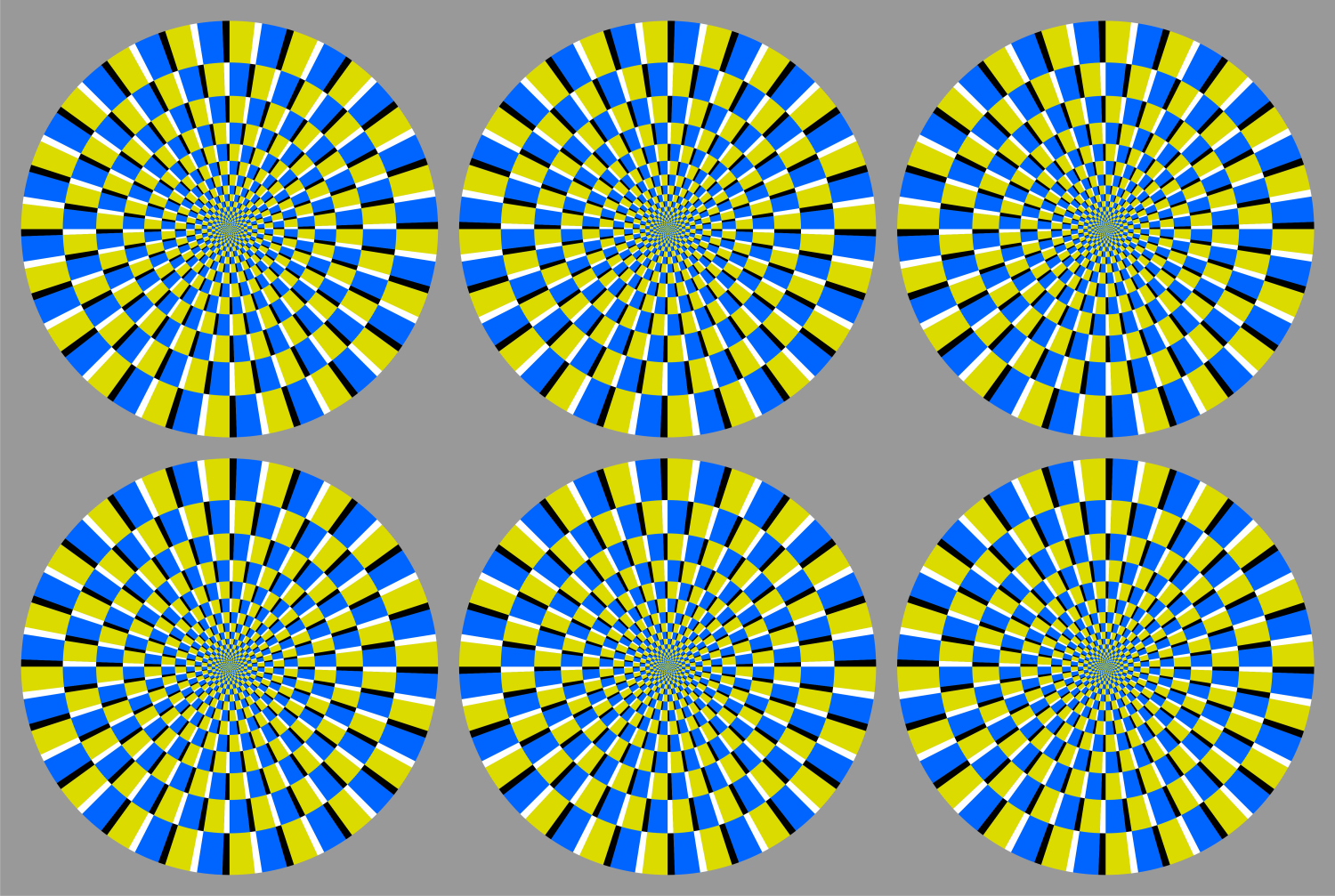
The upper-left, upper-right, and lower-middle disks appear to rotate counterclockwise
while the rest clockwise.
Type IIb
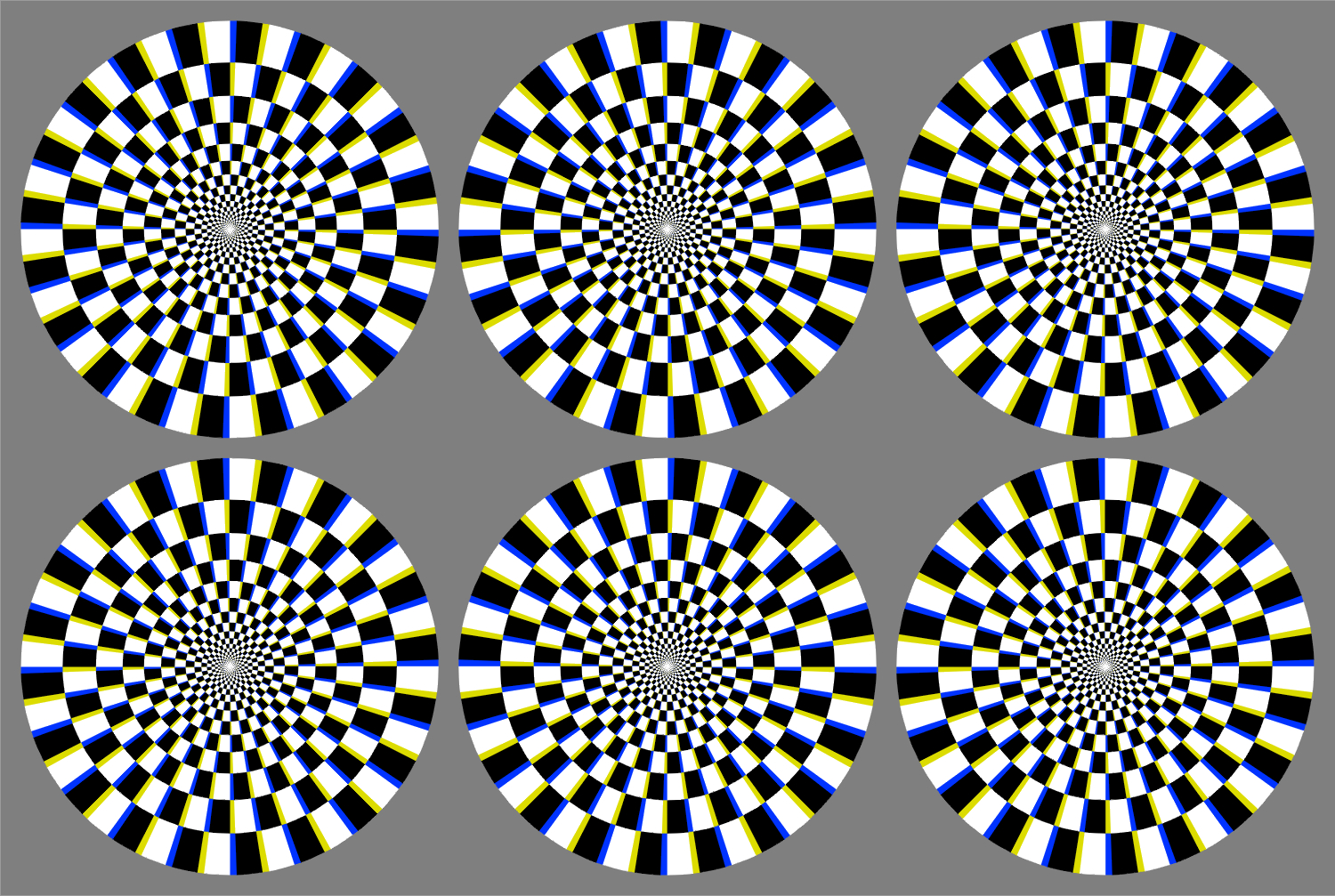
The upper-left, upper-right, and lower-middle disks appear to rotate counterclockwise while the rest clockwise.
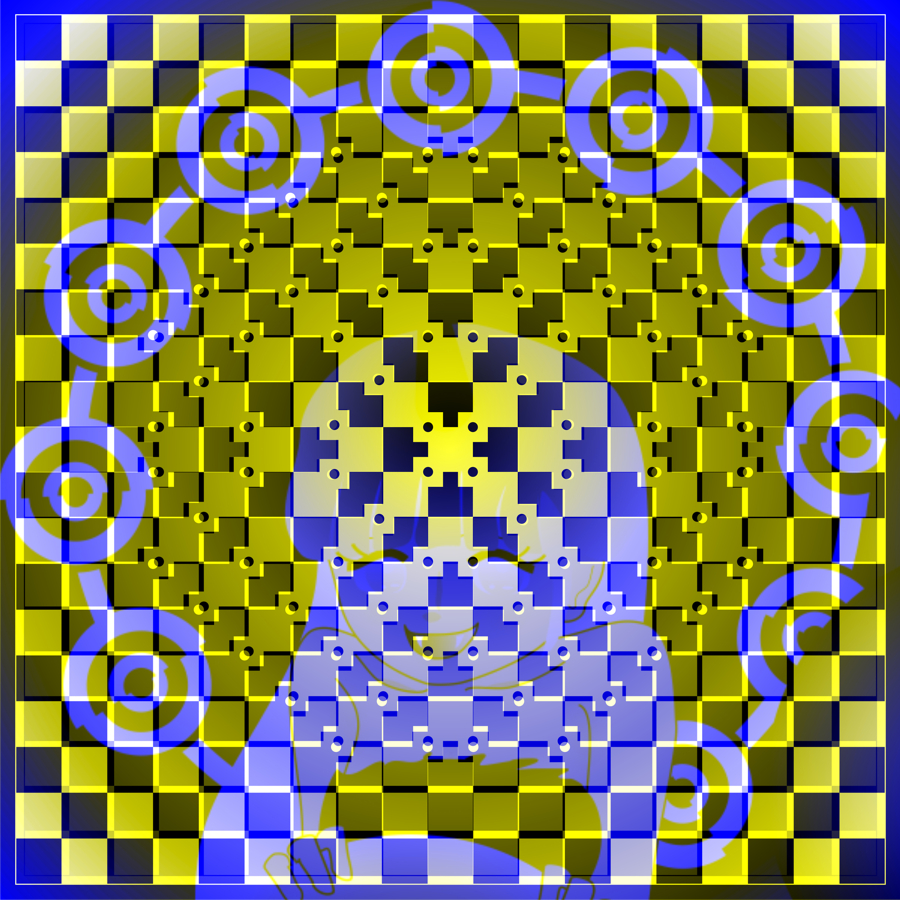
「雷さんの打ち上げ」
中央部が盛り上がってくるように見える。
Copyright Akiyoshi Kitaoka 2008 (August 12)
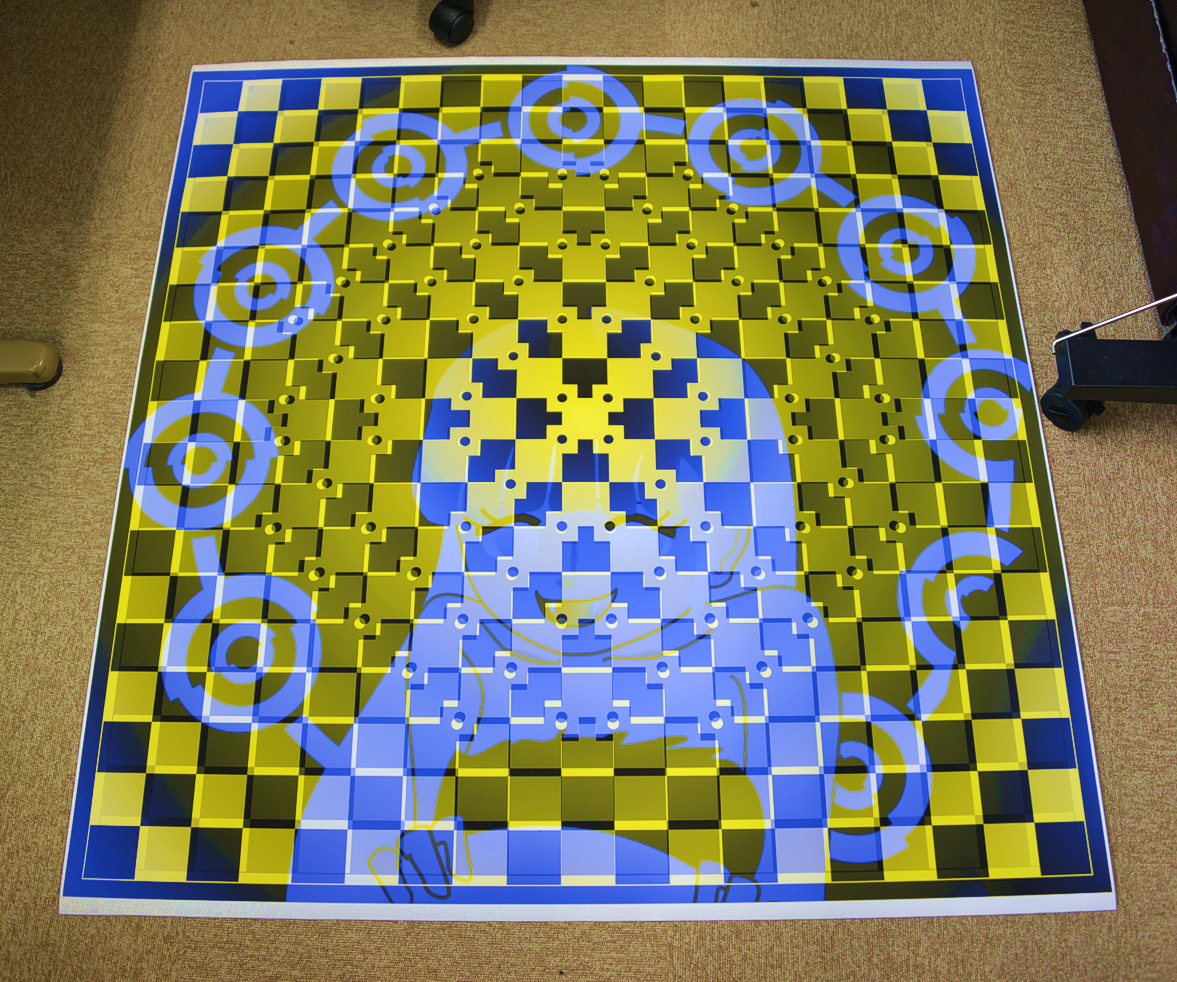
修学館・錯視プロジェクト研究室にて撮影
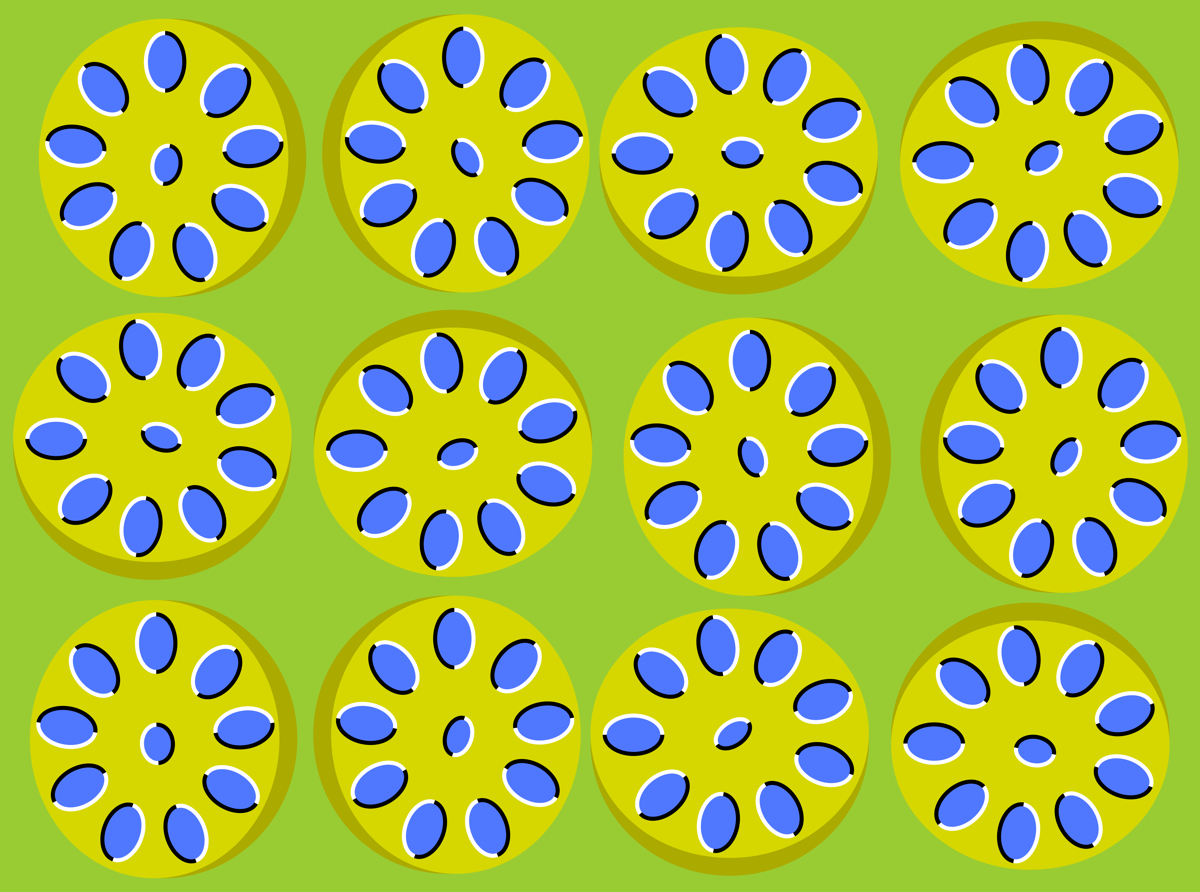
「れんこんの回転」
れんこんが回転して見える。
Copyright Akiyoshi Kitaoka 2012 (November 23)
岩国名物だとか。
「れんこんの回転」(最適化型フレーザー・ウィルコックス錯視・タイプIIa)の作り方
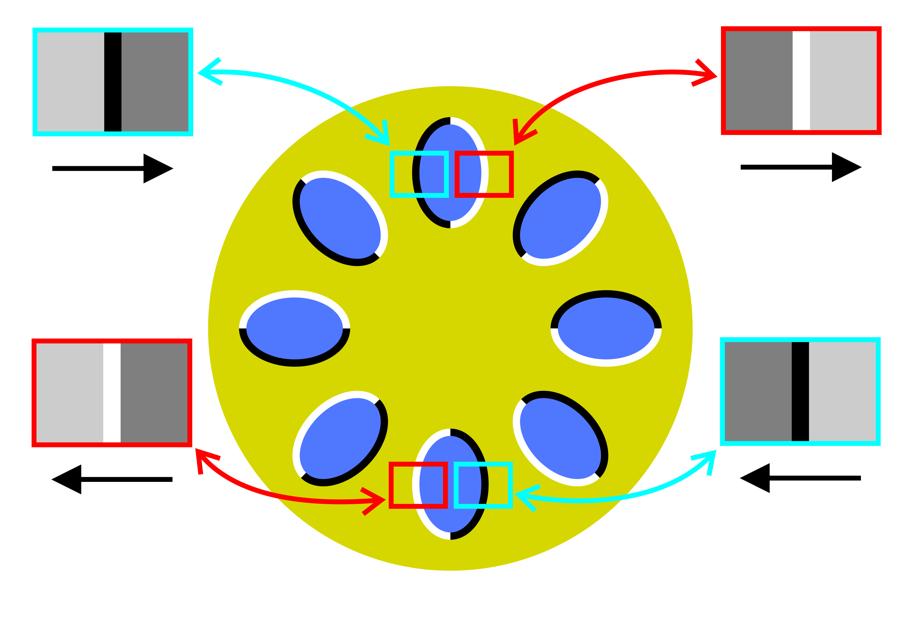
Type III


The upper row appears to move rightward while the lower one leftward.
.jpg)
The upper-left, upper-right, and lower-middle disks appear to rotate counterclockwise
while the rest clockwise.
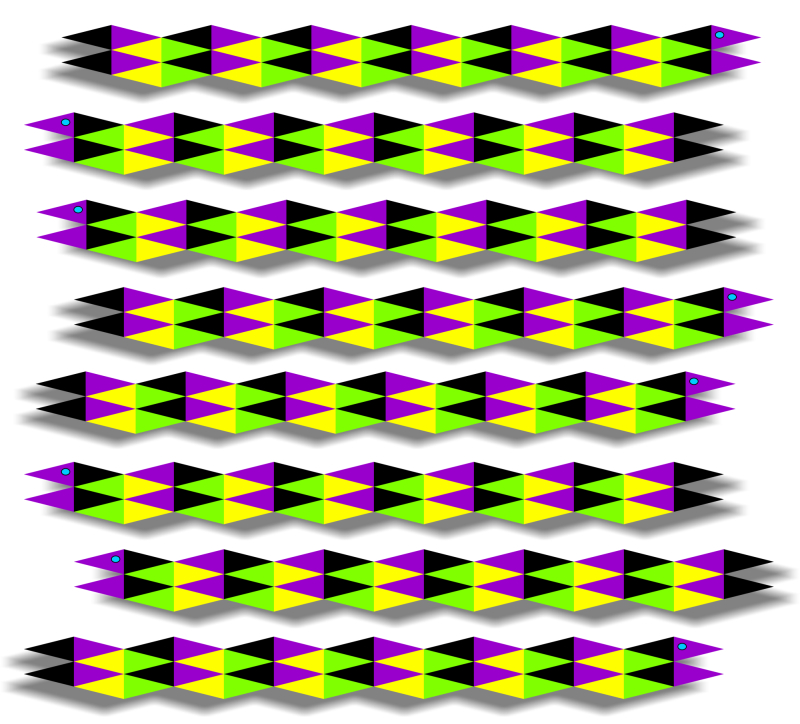
「影付きの左右に動く蛇」
蛇が左右に動いて見える。
Copyright Akiyoshi Kitaoka 2009 (June 7)
6. Kitaoka (2008a, b)
"Type IV" was added to the list.
References
Kitaoka, A. (2008a). Optimized Fraser-Wilcox illusions: a pictorial classification by Akiyoshi Kitaoka. Talk in Workshop No.005 "Experimental studies of anomalous motion illusions" in the 72nd Annual Convention of the Japanese Psychological Association, Hokkaido University, Sapporo, Japan, September 19, 2008. Talk
Kitaoka, A. (2008b). A new type of the optimized Fraser-Wilcox illusion in a 3D-like 2D image with highlight or shade. Journal of Three Dimensional Images (Japan), 22(4), 31-32. PDF PDF (manuscript) Presentation
Type IV

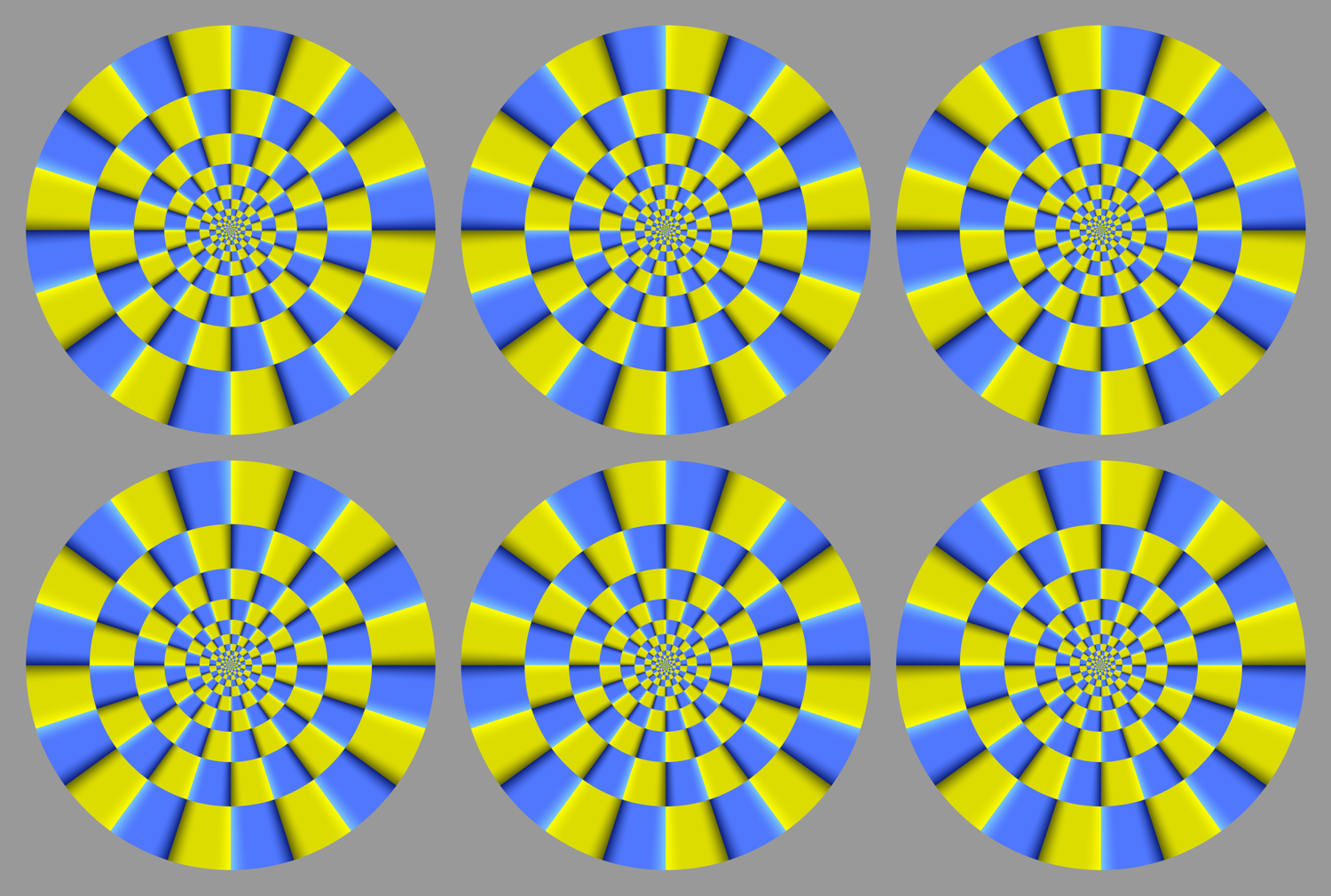
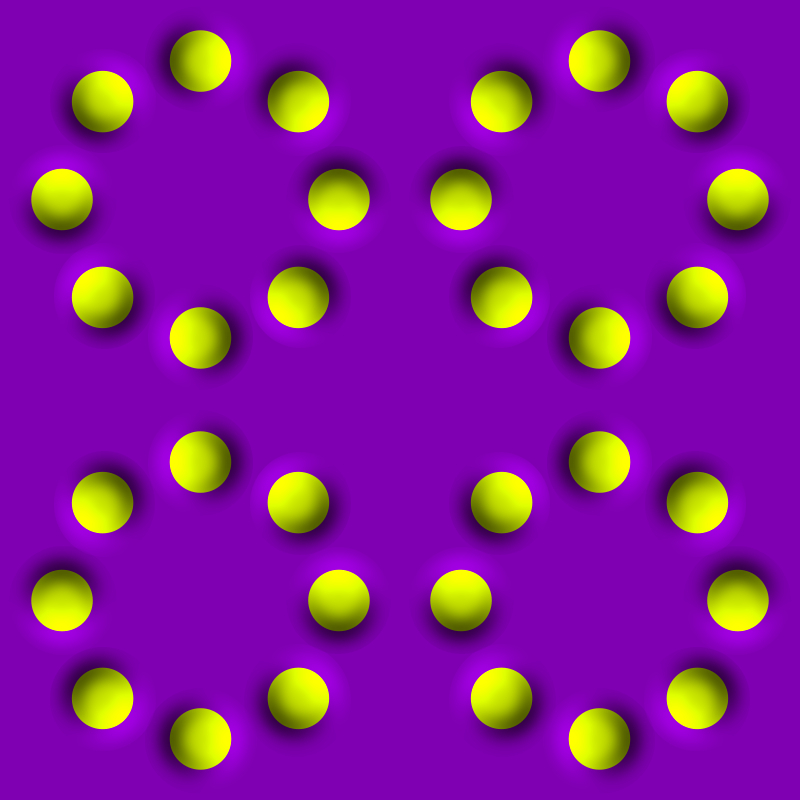
"Rotating tablets"
Rings appear to rotate.
Copyright Akiyoshi Kitaoka 2011 (July 14)
m.jpg)
The upper-left, upper-right, and lower-middle rings appear to rotate counterclockwise
while the rest clockwise.
Dark type
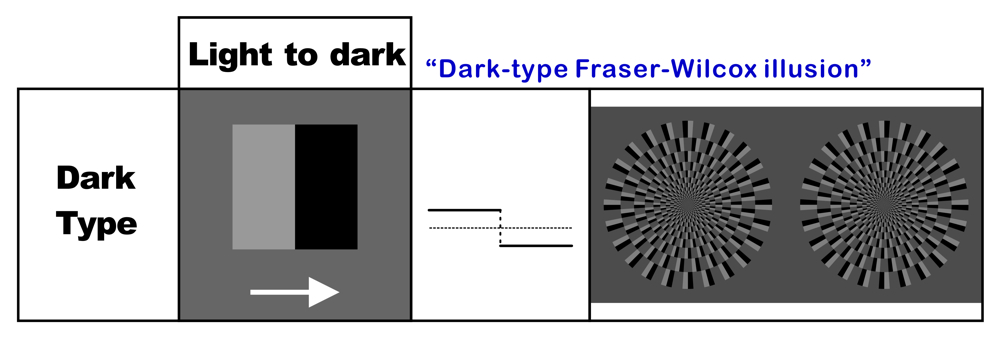
<Example> The upper-left, upper-right, and lower-middle disks appear
to rotate counterclockwise while the rest clockwise.
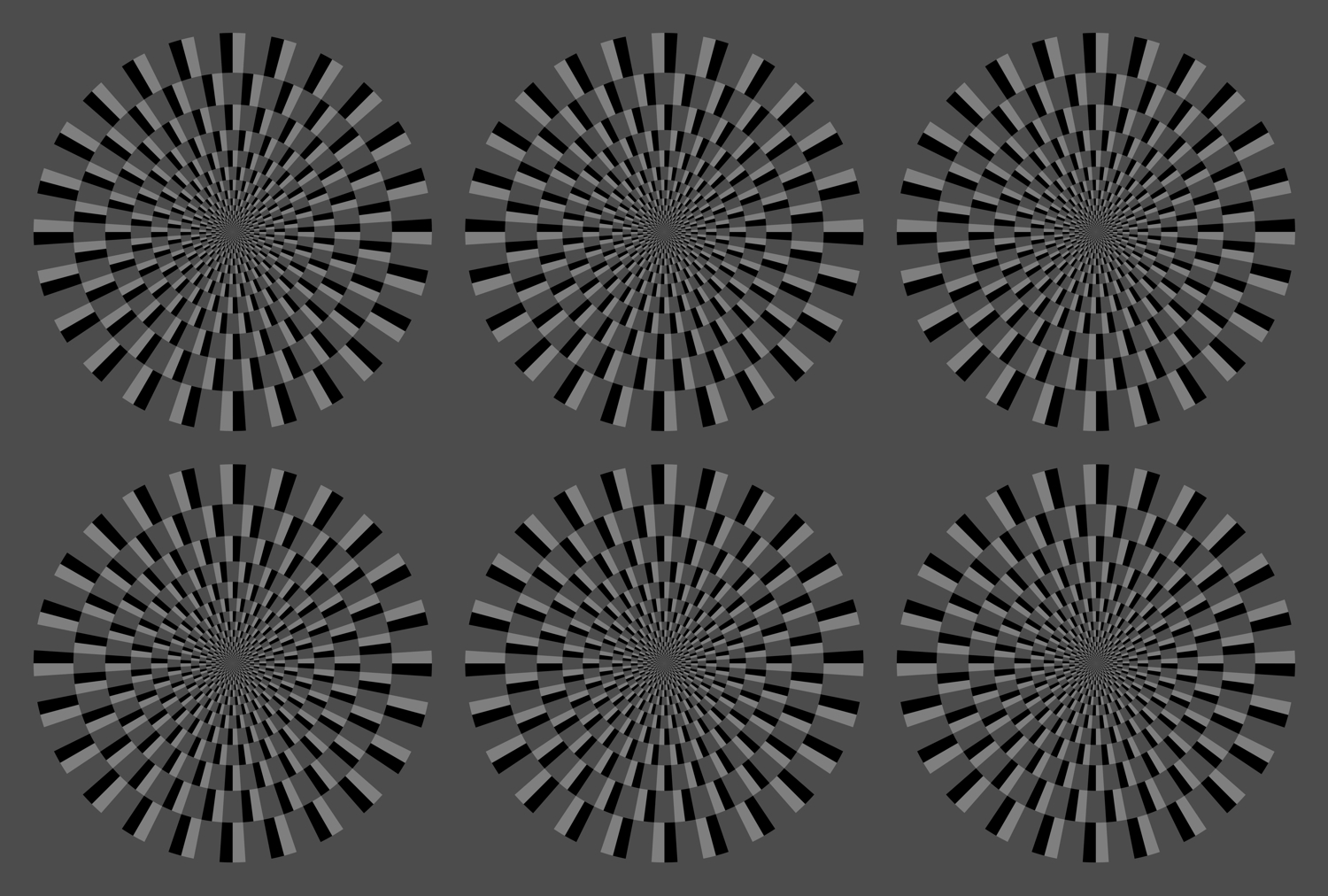
Kitaoka, A. (2012). The Fraser-Wilcox illusion and its extension. Perception 41 ECVP Abstract Supplement, page 91 (Poster September 3, 2012). Poster PDF
色依存のフレーザー・ウィルコックス錯視
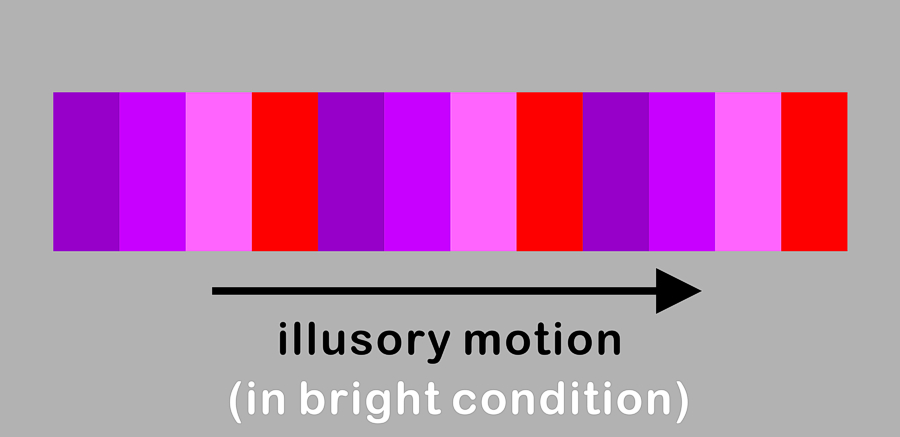
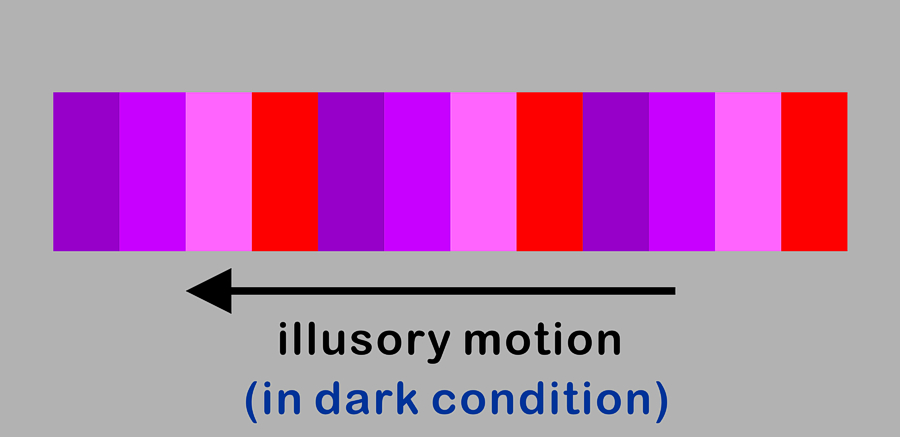
Black » dark-gray » white » light-gray » black
Purple » light purple » light red-purple » red »
purple
References
Kitaoka, A. (2010). Introduction to visual illusion. Tokyo: Asakura-shoten (in Japanese). Book
Kitaoka, A. (2012a). Designs using the red Fraser-Wilcox illusion. Journal
of the Color Science Association of Japan, 36, Supplement, 188-189. PDF (color manuscript) Talk
Kitaoka, A. (2012b) The Fraser-Wilcox illusion and its extension. Perception 41 ECVP Abstract Supplement, page 91 (Poster September 3, 2012). Poster PDF
Kitaoka, A. (2014). Color-dependent motion illusions in stationary images and their phenomenal dimorphism. Perception, 43(9), 914-925.

Kitaoka, A. (2014). Color-dependent motion illusions in stationary images and their phenomenal dimorphism. Perception, 43(9), 914-925.
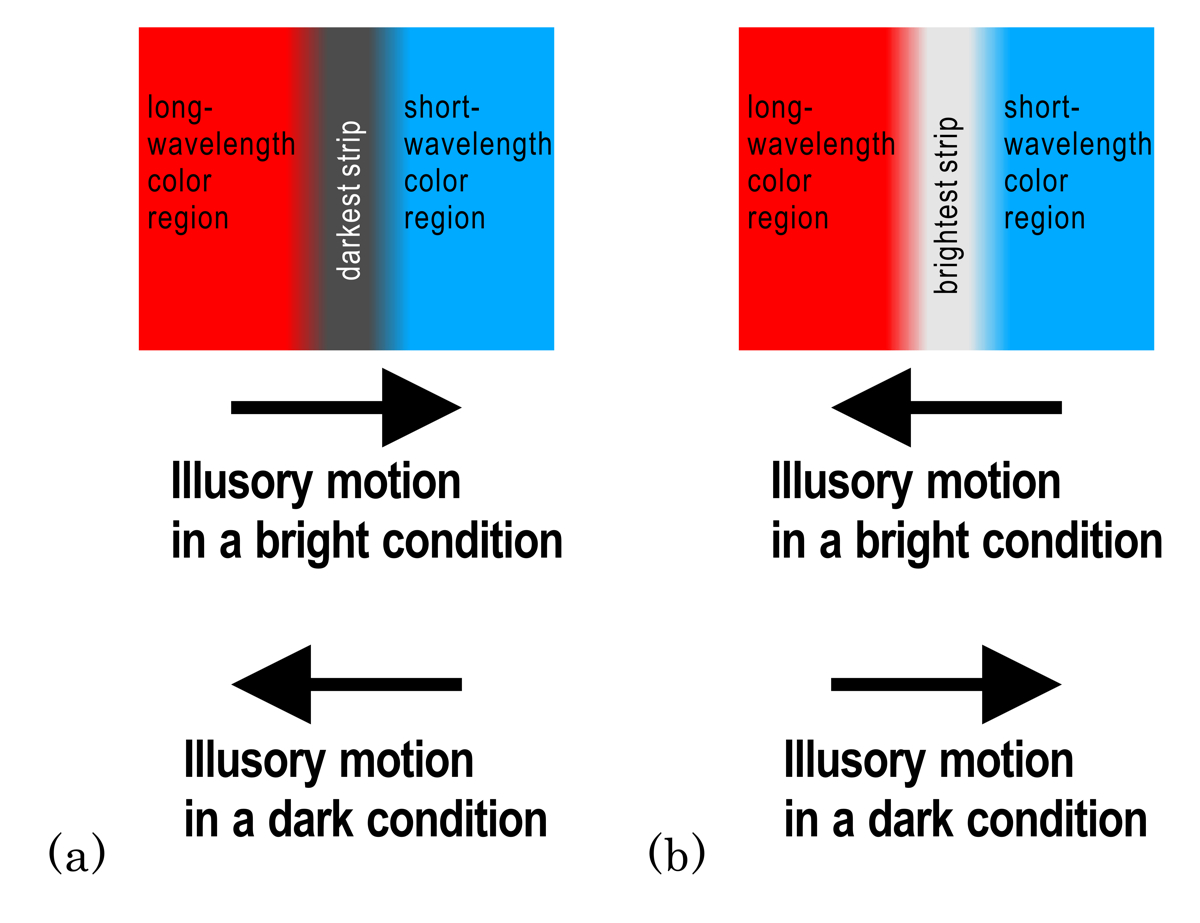
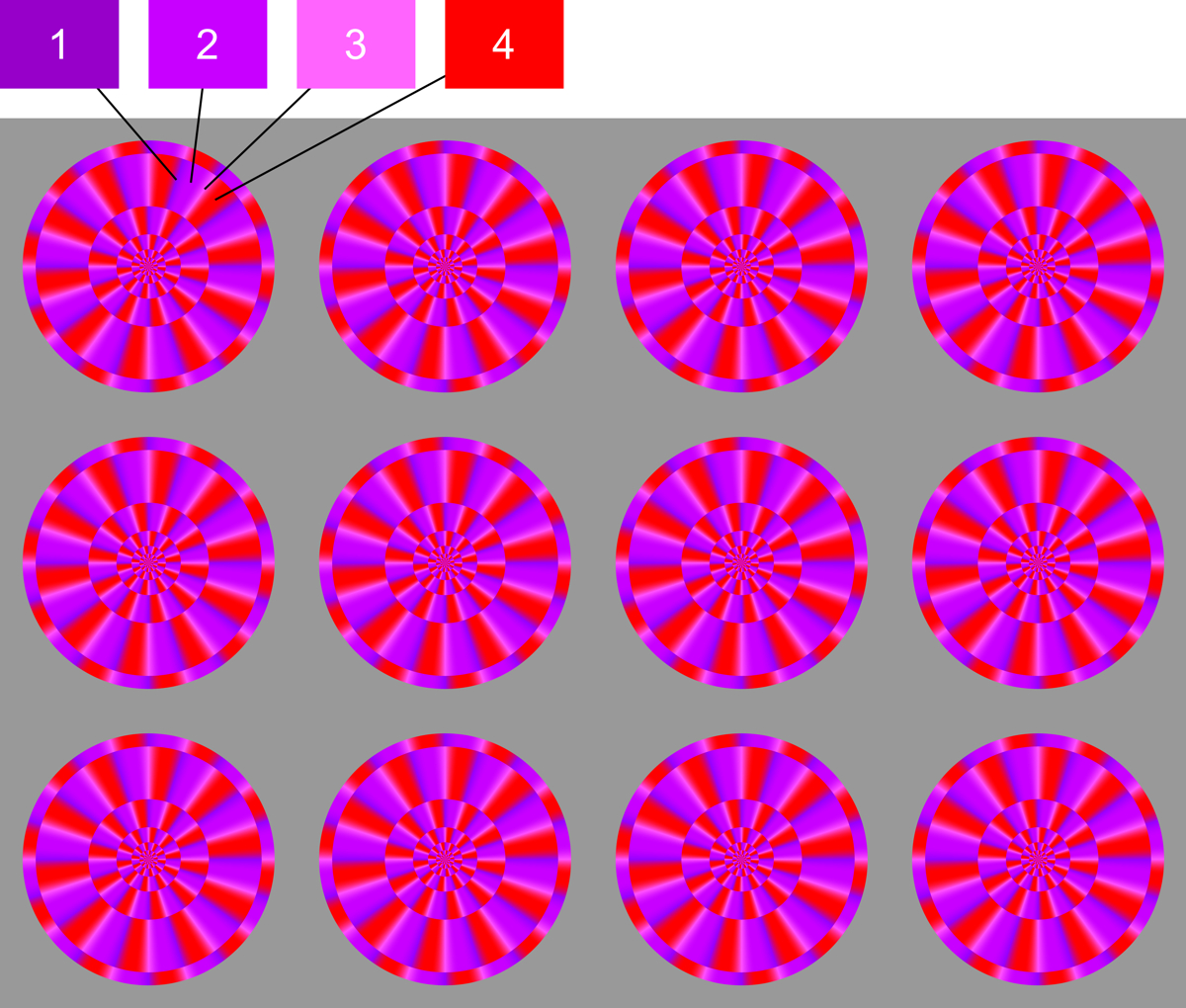
Figure 6 of Kitaoka, A. (2014). Color-dependent motion illusions in stationary
images and their phenomenal dimorphism. Perception, 43(9), 914-925.
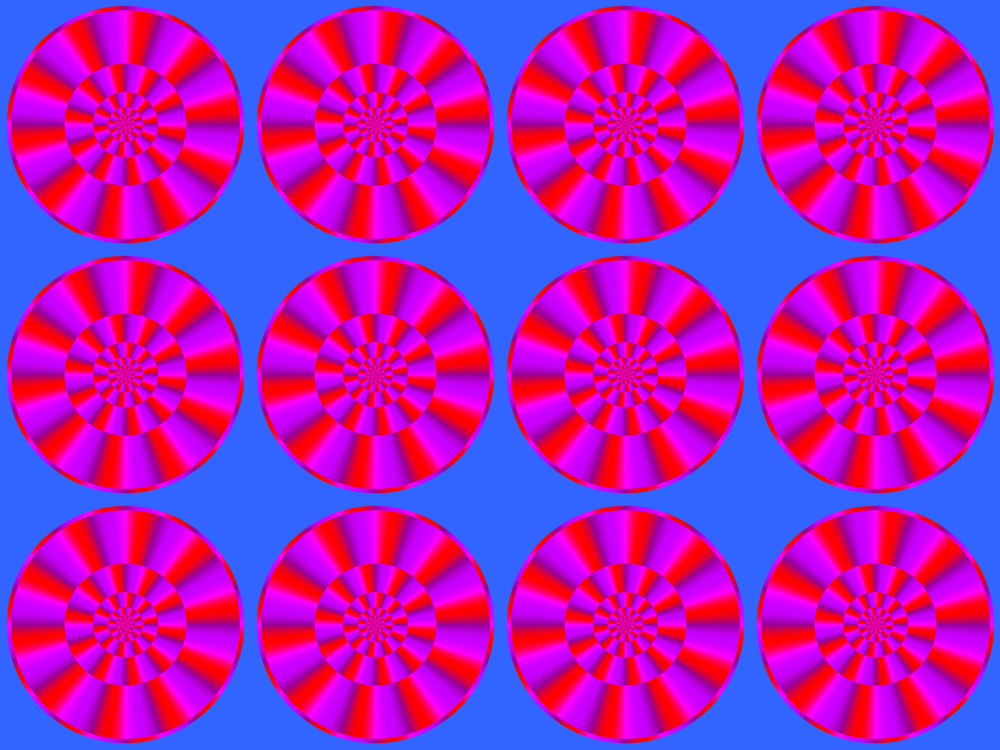
"Rotating red
disks"
Each disk appears to rotate clockwise when this image is presented on a bright PC display or on a print with a bright environment.
Copyright Akiyoshi Kitaoka 2013 (January 17)
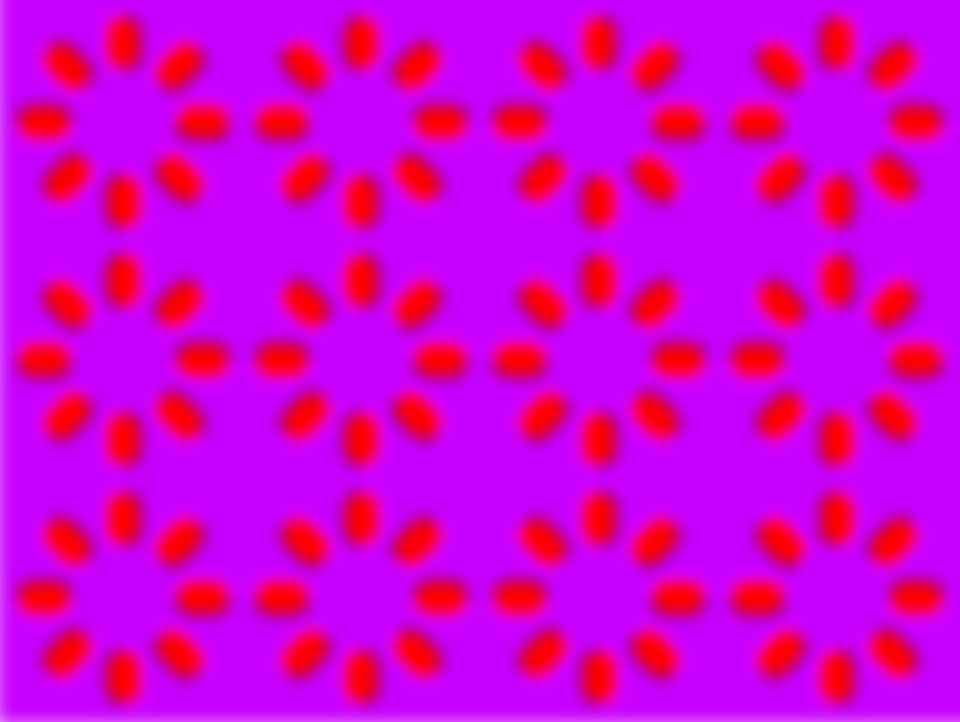
「オニシバリの実の回転」
オニシバリの実のリングが回転して見える。
Copyright Akiyoshi Kitaoka 2008 (December 19)
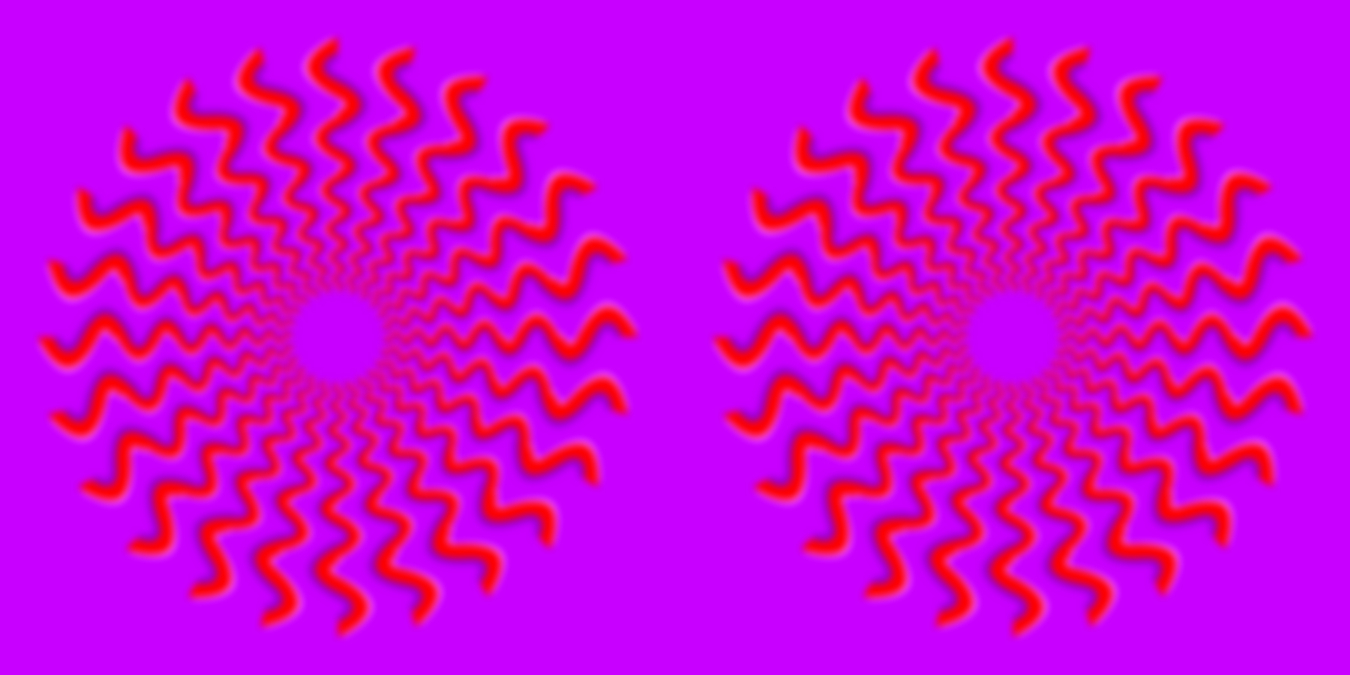
「不動明王 2012」
ディスクが時計回りに回転して見える。
Copyright Akiyoshi Kitaoka 2012 (December 3)
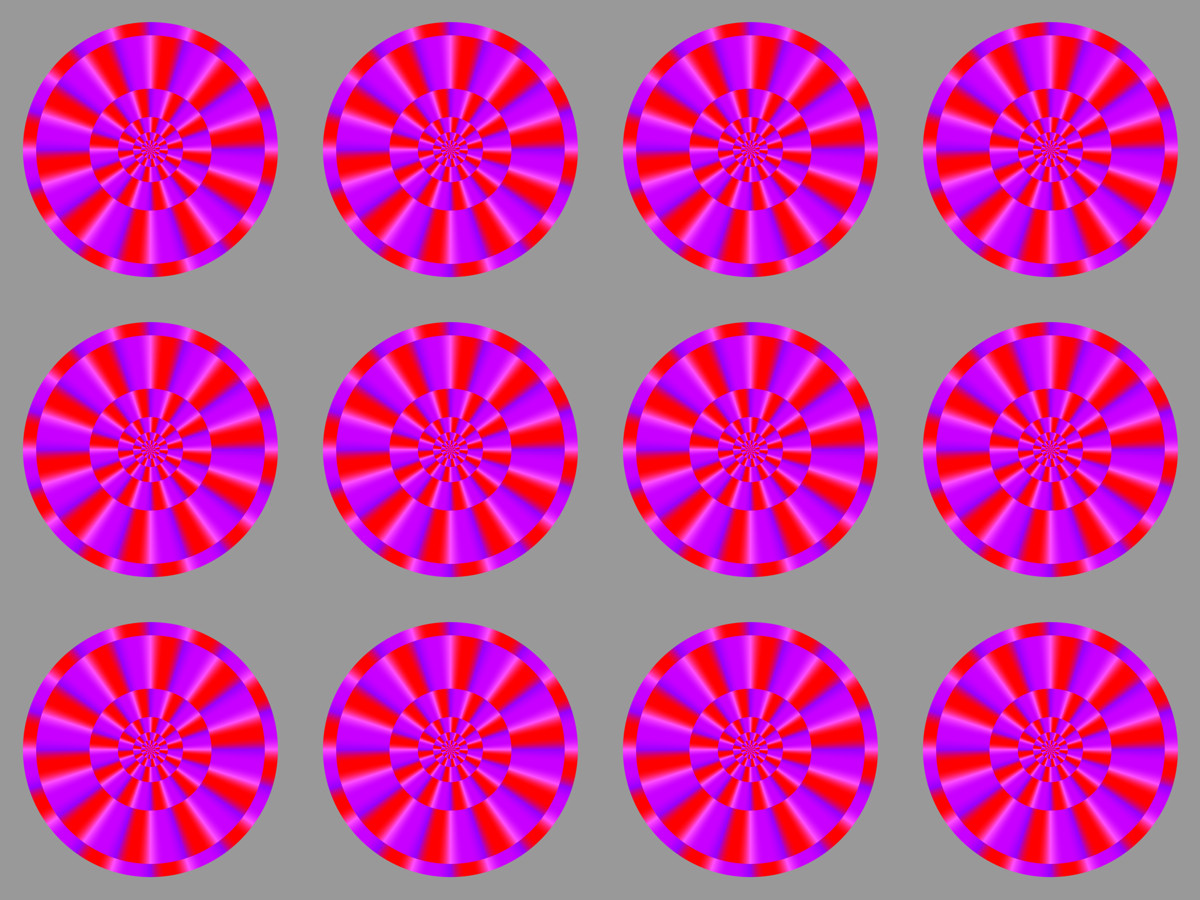
「赤と紫の円盤の回転」
明るいディスプレーでは円盤は時計回りに回転して見える。印刷物を暗いところで見ると反時計回りに回転して見える。
Copyright Akiyoshi Kitaoka 2013 (February 6)
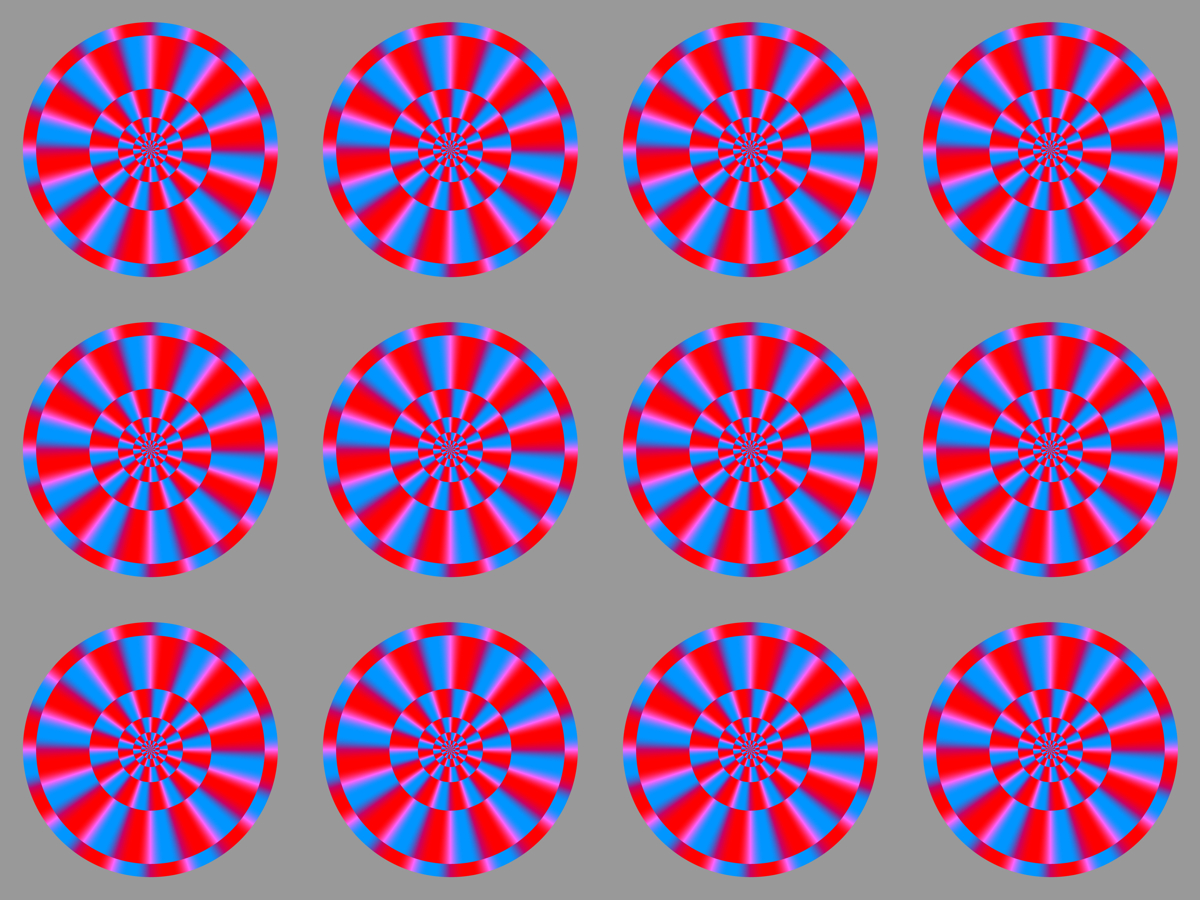
「赤とシアンの円盤の回転 3」
明るいディスプレーでは円盤は時計回りに回転して見える。印刷物を暗いところで見ると反時計回りに回転して見える。
Copyright Akiyoshi Kitaoka 2014 (January 27)
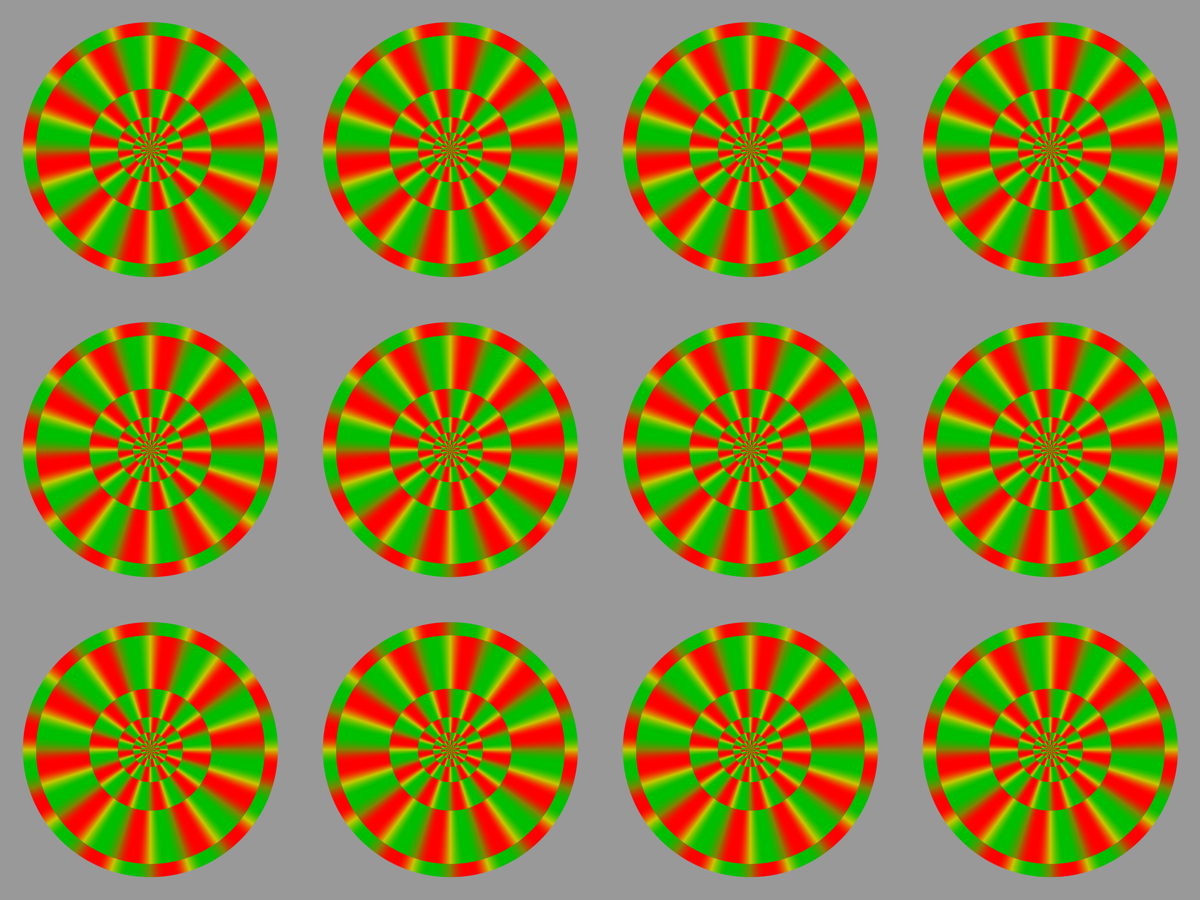
「赤と緑の円盤の回転 2」
明るいディスプレーでは円盤は時計回りに回転して見える。印刷物を暗いところで見ると反時計回りに回転して見える。
Copyright Akiyoshi Kitaoka 2014 (January 27)
最適化型フレーザー・ウィルコックス錯視・タイプVの作品いろいろ
最新の研究
Kitaoka, A. (2014). Motion illusion induced by color changes. 10th Asia-Pacific Conference on Vision (APCV), Sunport Takamatsu, Takamatsu, Japan, (Poster July 20, 2014 (P2-16)). Poster MS-Word doc file --- Movie demos
< Kitaoka, A. (2014). Motion illusion induced by color changes. Vision, APCV2014, p. 111 (P2-16). >
< 静脈錯視 >
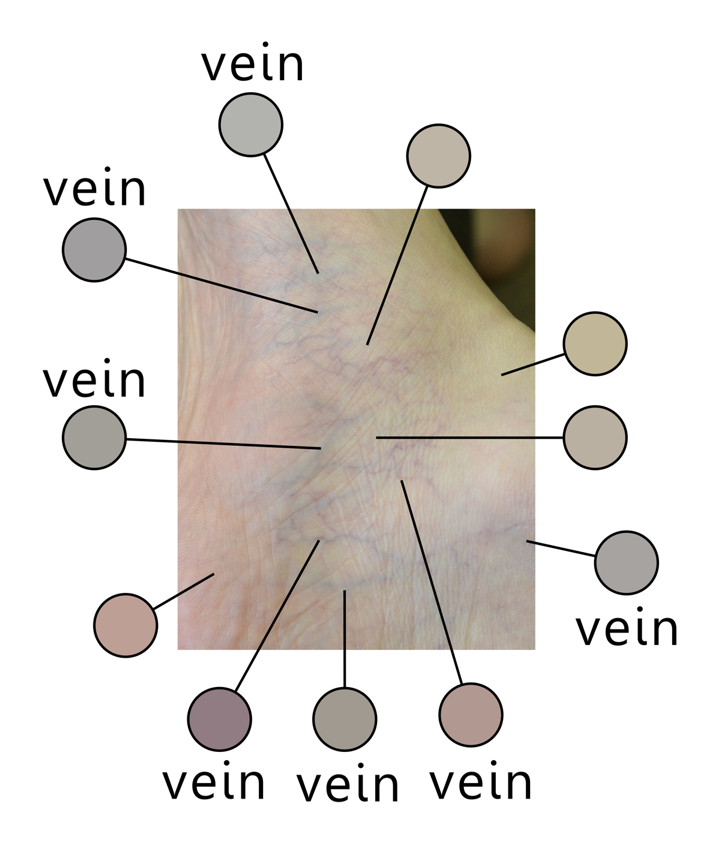
「静脈錯視」
青く浮き出て見える静脈は物理的には青くなく、せいぜい灰色であり、色の錯視(色の対比)だった!
Copyright Akiyoshi Kitaoka 2014 (April 23)
写真は北岡の右足です。
類似の錯視
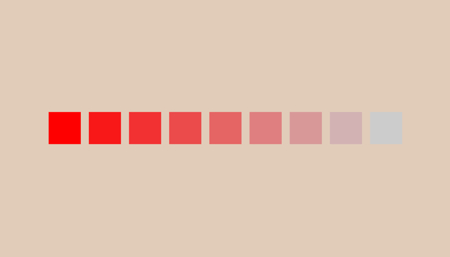
一番右の正方形は灰色であるが水色に見える。
Copyright Akiyoshi Kitaoka 2014 (April 23)
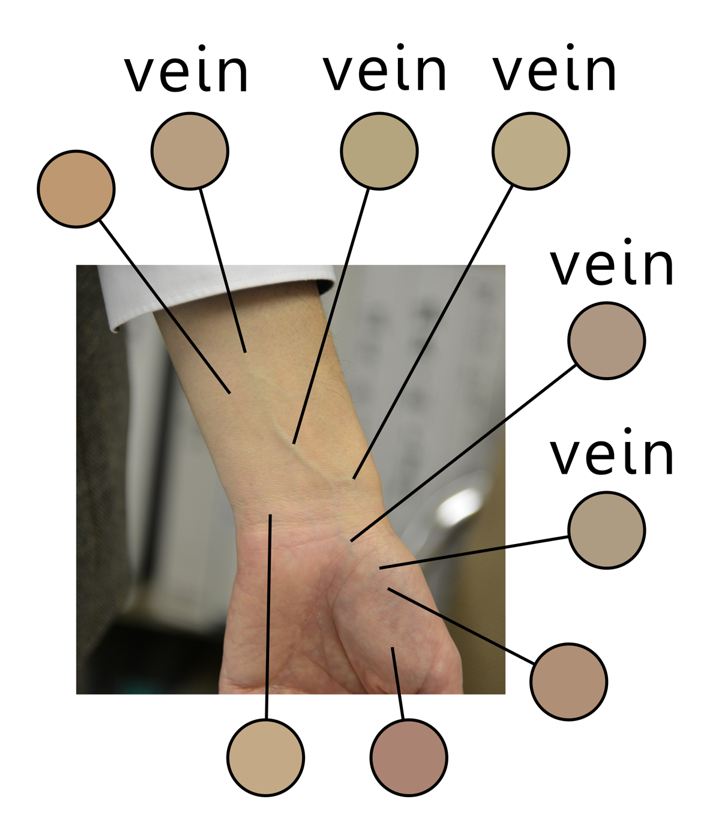
「静脈錯視:手」
この手の青く浮き出て見える静脈は物理的には青くなく、彩度の低いオレンジ色であった。
Copyright Akiyoshi Kitaoka 2014 (April 23)
写真は北岡の右手です。對梨成一氏撮影。
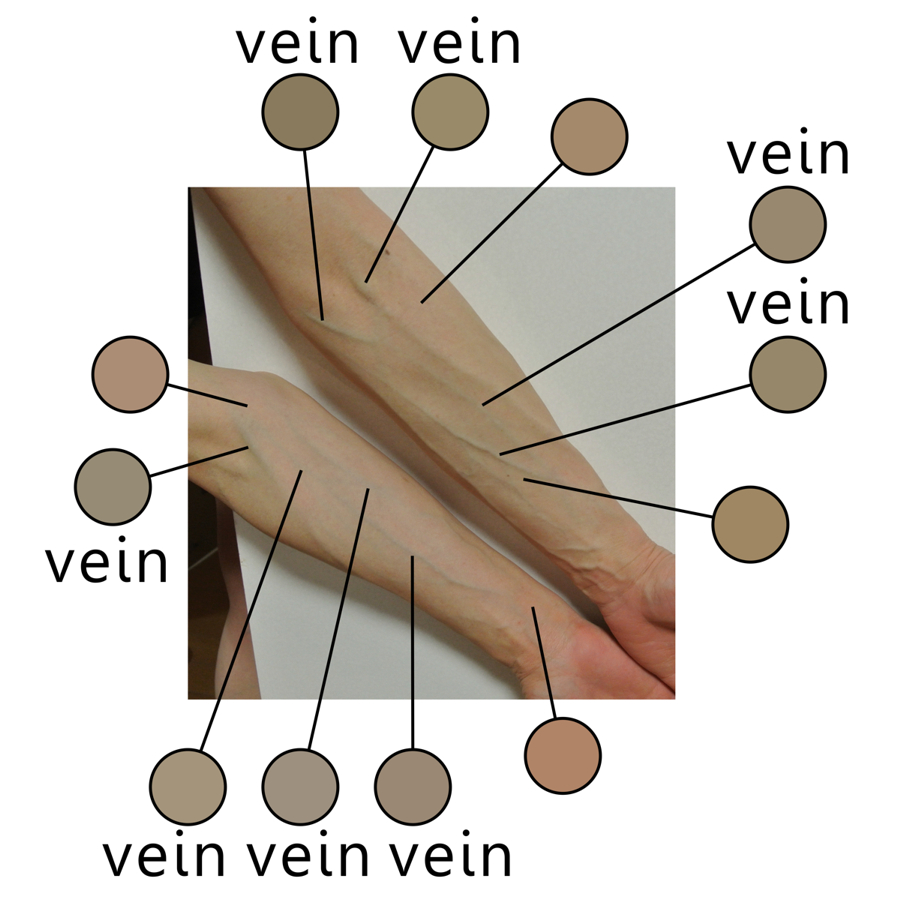
「静脈錯視:腕」
この手の青く浮き出て見える静脈は物理的には青くなく、彩度の低いオレンジ色であった。
Copyright Akiyoshi Kitaoka 2014 (April 24)
Thanks to MK for your tremendous contribution!
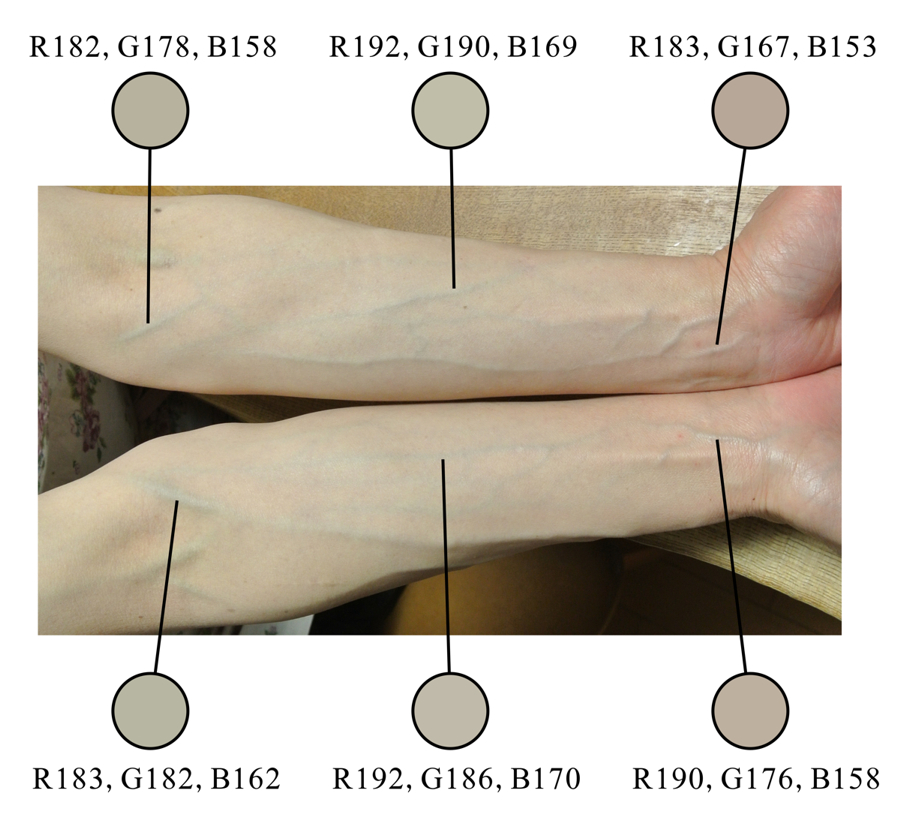
「静脈錯視:腕 2」
青白く撮れた写真の場合でも、この手の青く浮き出て見える静脈は物理的には青くなく、彩度の低い黄色かオレンジ色であった。
Copyright Akiyoshi Kitaoka 2014 (April 24)
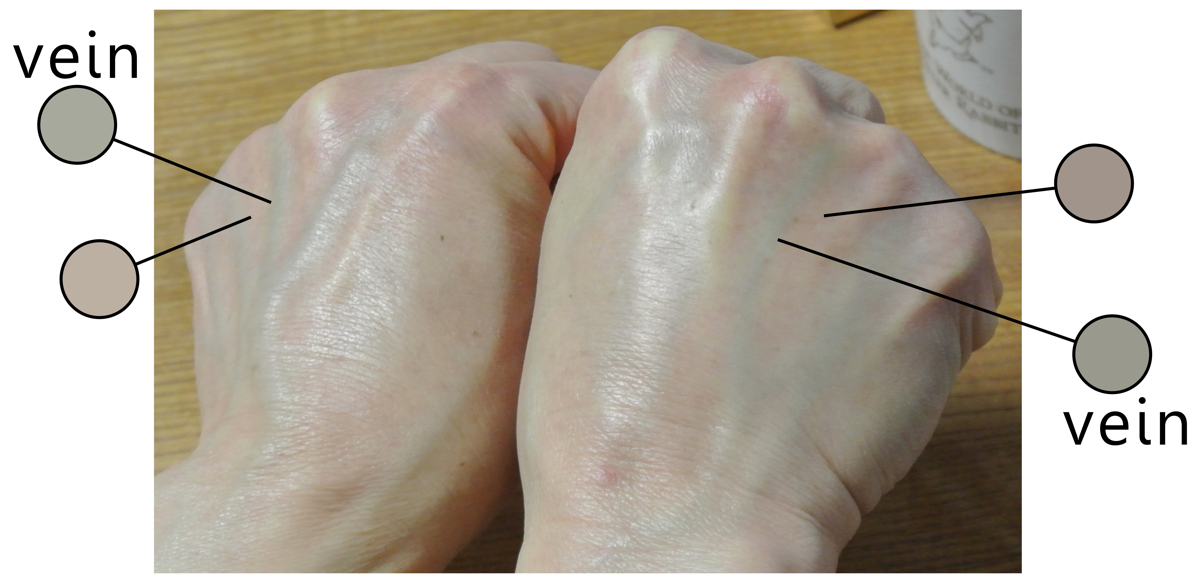
「静脈錯視:手の甲」
この手の青く浮き出て見える静脈は物理的には青くなく、ほぼ灰色あるいは彩度の低い黄色であった。
Copyright Akiyoshi Kitaoka 2014 (April 24)
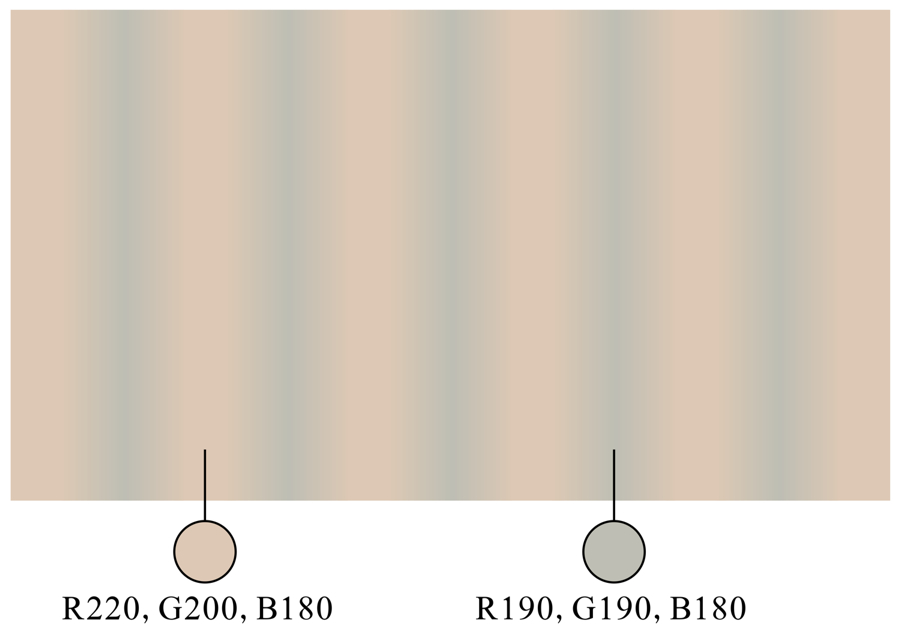
「静脈錯視:基本図形?」
ほとんど灰色の彩度の低い黄色の領域が青みがかって見える。
Copyright Akiyoshi Kitaoka 2014 (April 24)

「錯視的青のリング」
本図はすべて少し赤みの入った黄色の色相の画素でできているが、青みを帯びたリングが知覚される。
produced Akiyoshi Kitaoka 2014 (May 31)
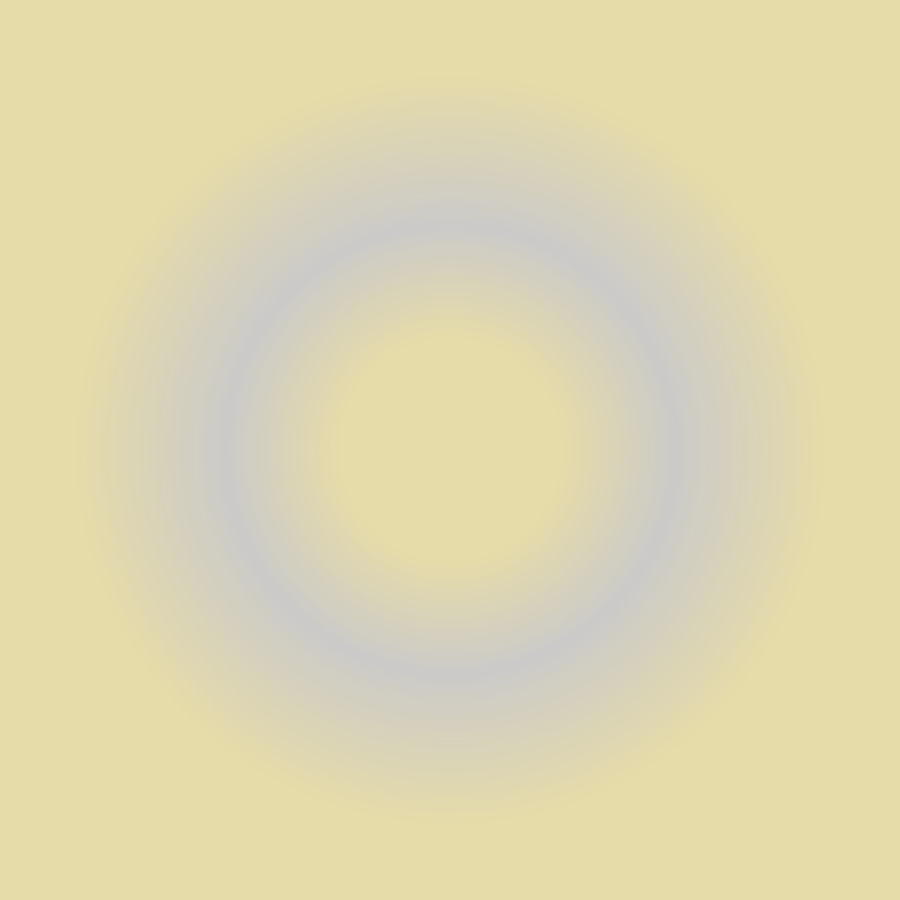
「錯視的青のリング 2」
本図はすべて少し赤みの入った黄色の色相の画素でできているが、青みを帯びたリングが知覚される。
produced Akiyoshi Kitaoka 2014 (May 31)
< 誘導色の彩度が低くても効果がある。>

「錯視的水色のリング」
本図はすべて赤の色相の画素でできているが、水色を帯びたリングが知覚される。
produced Akiyoshi Kitaoka 2014 (May 31)

「錯視的赤みのリング 2」
本図はすべて水色(シアン)色の色相の画素でできているが、赤みを帯びたリングが知覚される。
produced Akiyoshi Kitaoka 2014 (May 31)
問: 下記のような色から金色を作る方法はあるか?
Make gold color from such colors shown below.

答: ある。
You can do like this.
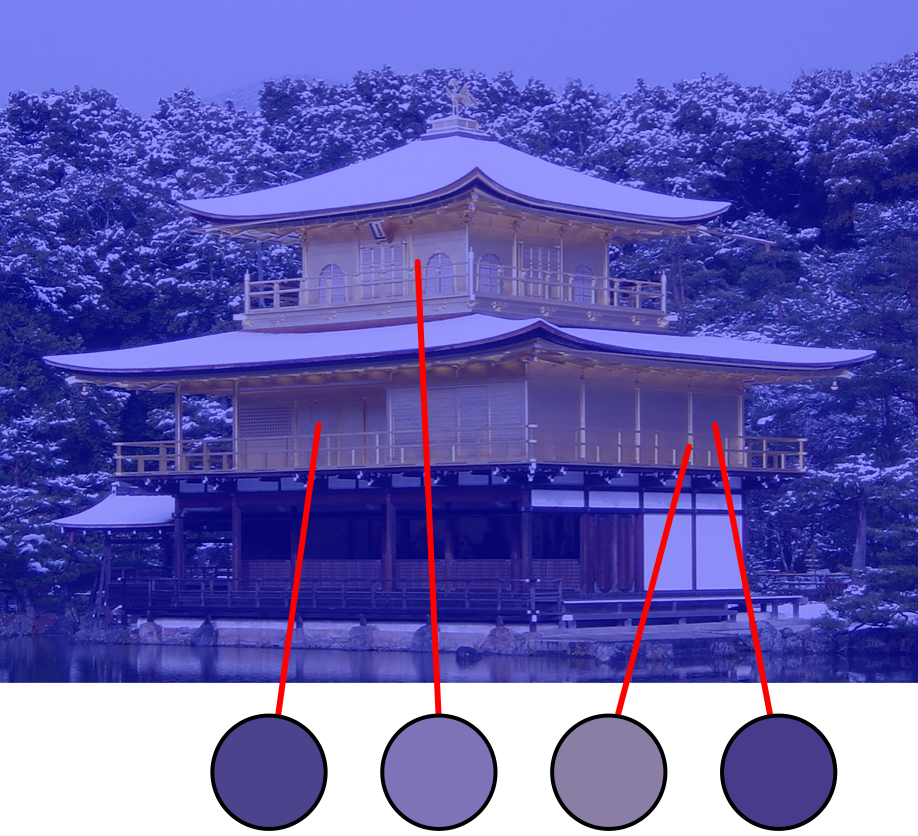
「青い金閣」
"Bluish Golden Palace"
青フィルターがかかっていやな感じではあるが金閣は金色に見える。金色は黄色系統でなければならないという前提があるなら、この合成画像で金閣が金色に見えることは錯視であり、知覚される金色は物理的には青系統の色である。
Copyright Akiyoshi Kitaoka 2011 (July 14)
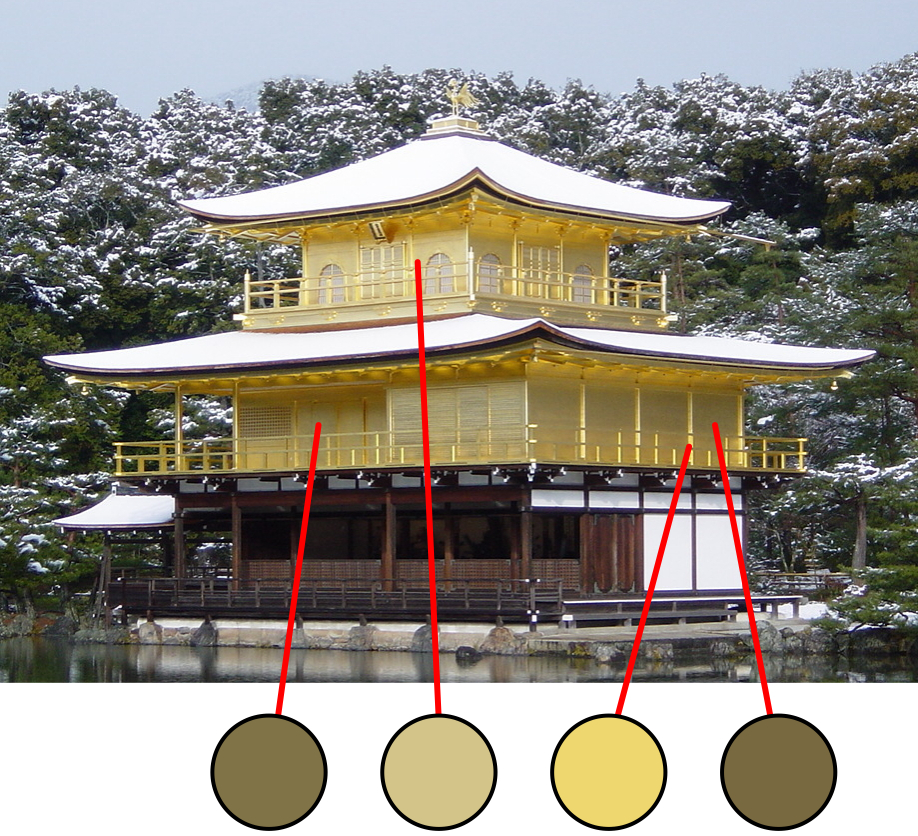
Golden Palace
黄色系統でなくても金色に見える。
Gold color can be made from bluish colors.

「本当は赤くないイチゴ」
この画像はシアンの色相でできているが、イチゴは赤く見える。 (sRGBに準拠した加法的色変換による)
Copyright Akiyoshi Kitaoka 2015 (March 23)
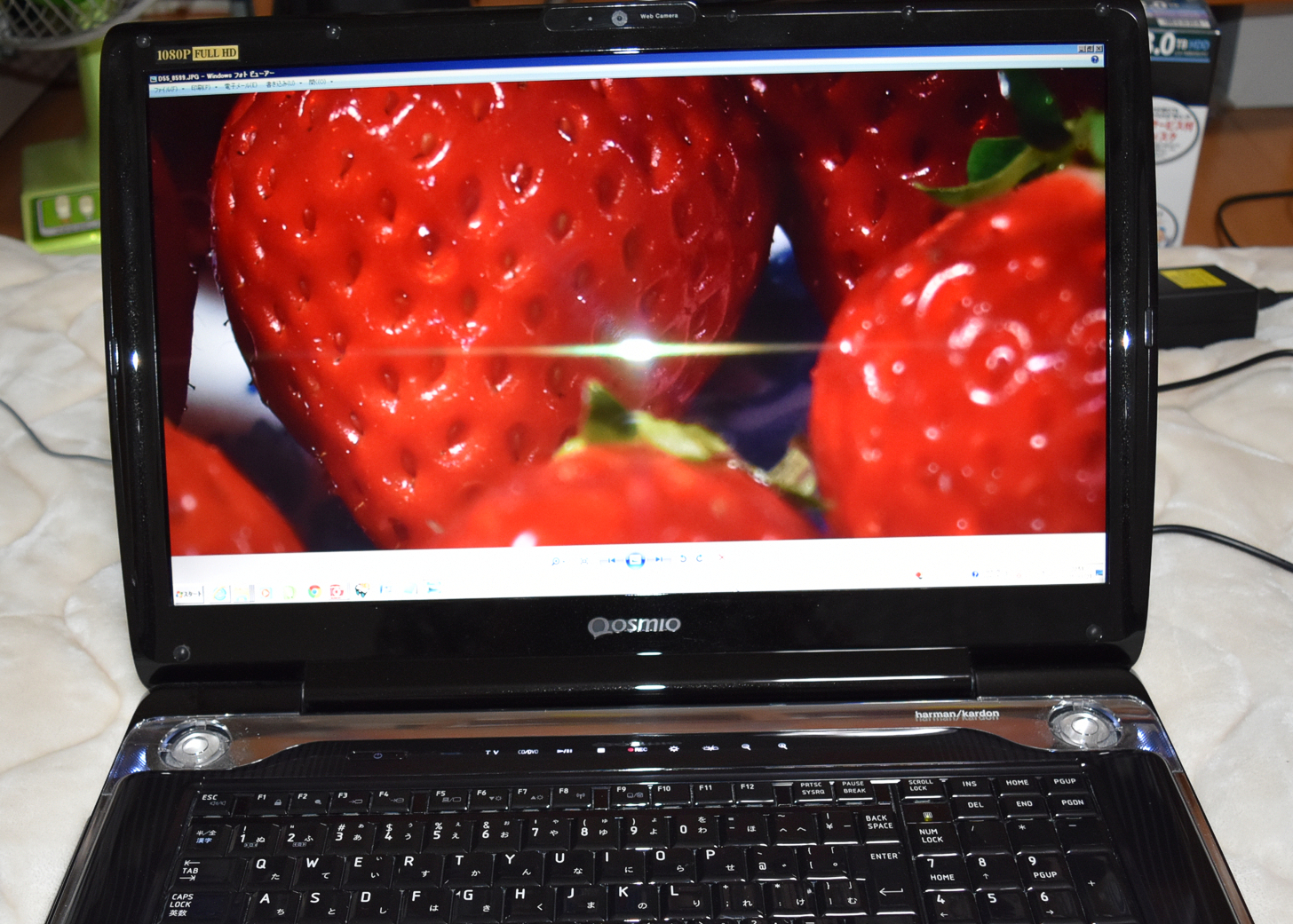
元画像
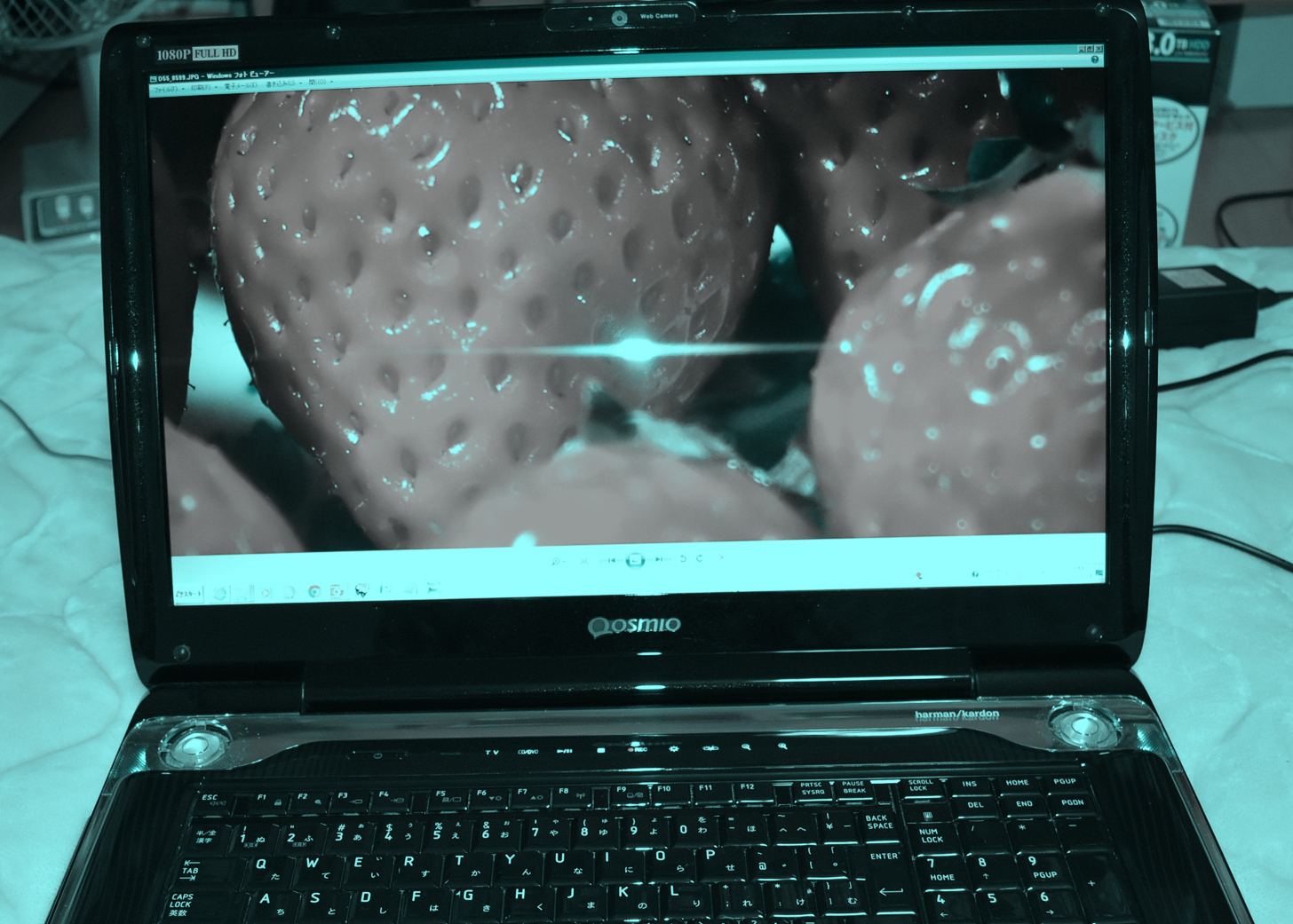
「本当は赤くないイチゴ(2色法)」
この画像はシアンの色相でできているが、イチゴは赤く見える。 (sRGBに準拠した2色法色変換による)
Copyright Akiyoshi Kitaoka 2015 (March 24)
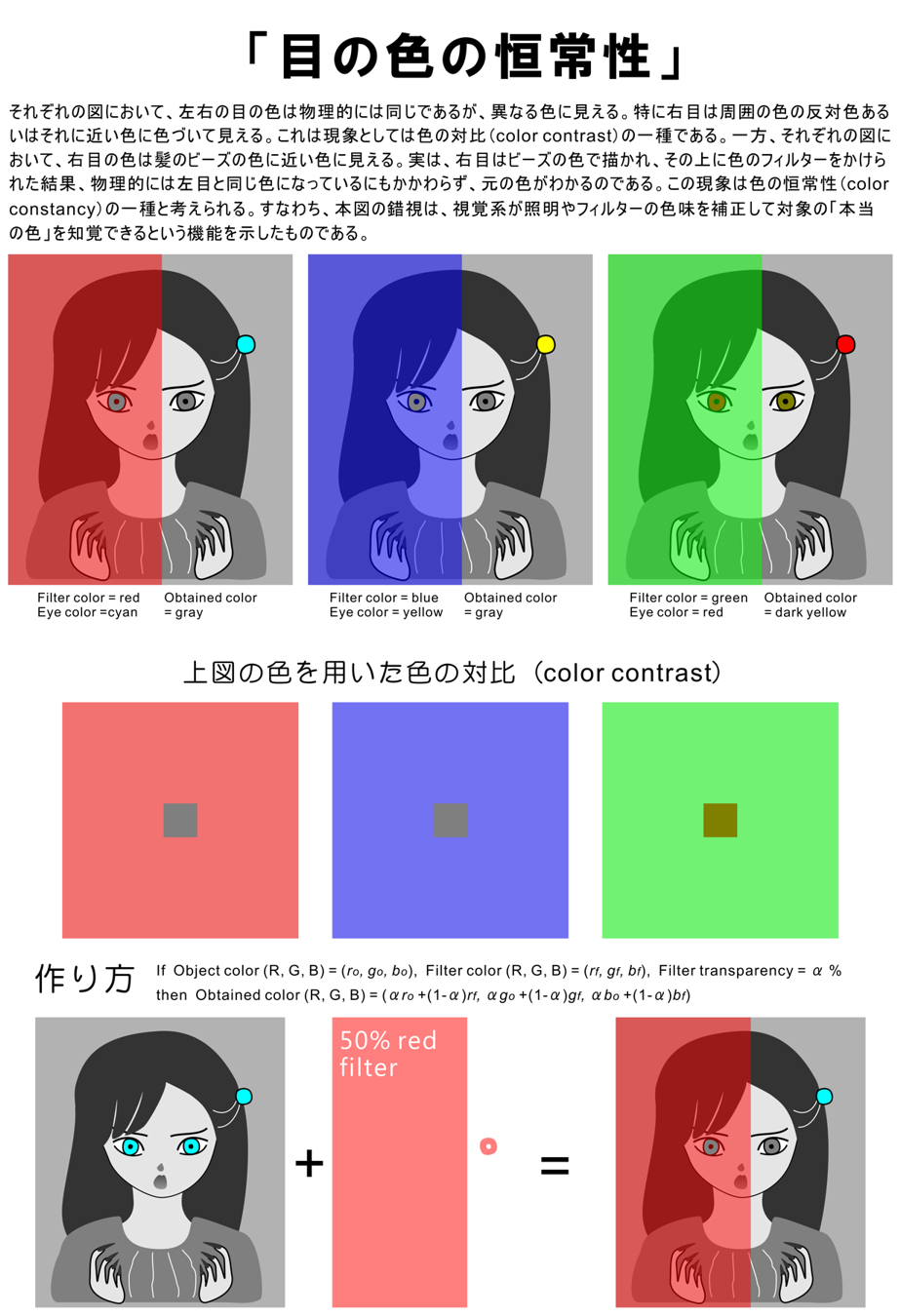
References
北岡明佳 (2011) 色の錯視いろいろ (2)色の恒常性と2つの色フィルタ 日本色彩学会誌, 35(3), 234-236. PDF(スキャンコピー), PDF(高解像度スキャンコピー)
北岡明佳 (2011) 色の錯視いろいろ (1)「目の色の恒常性」という錯視の絵 日本色彩学会誌, 35(2), 118-119. PDF(スキャンコピー)
加法的色変換
Additive color changes
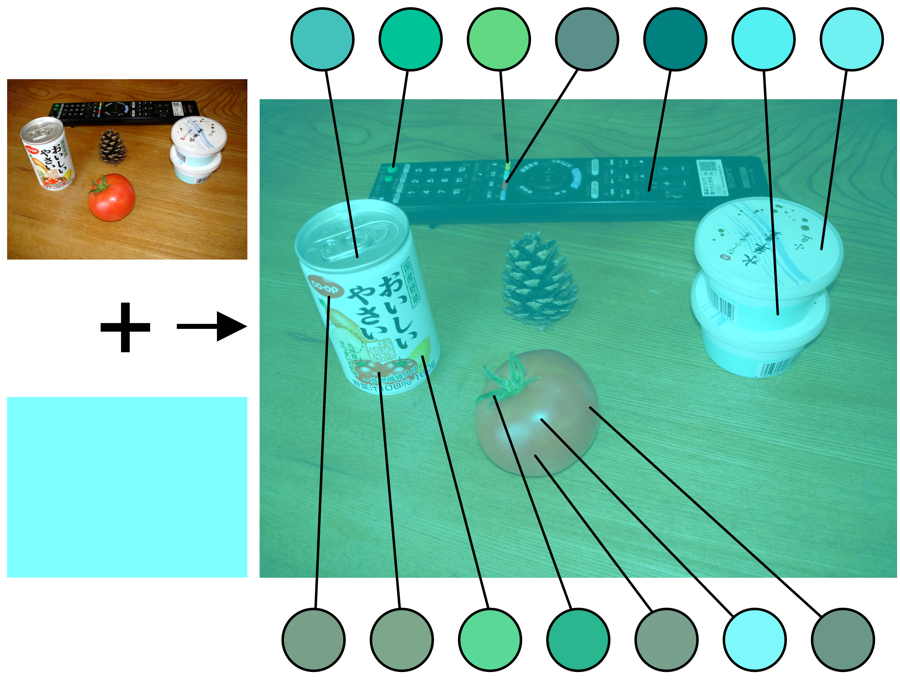
北岡明佳 (2011) 色の錯視いろいろ (2)色の恒常性と2つの色フィルタ 日本色彩学会誌, 35(3), 234-236. <図2>

乗法的色変換
Multiplicative color change
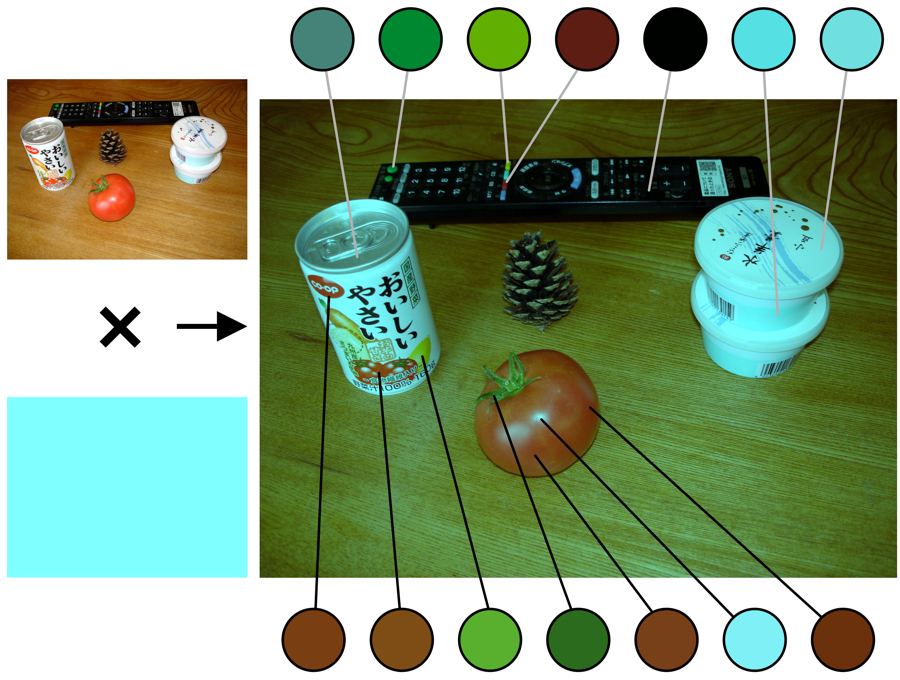
北岡明佳 (2011) 色の錯視いろいろ (2)色の恒常性と2つの色フィルタ 日本色彩学会誌, 35(3), 234-236. <図4>
北岡明佳 (2011) 色の錯視いろいろ (2)色の恒常性と2つの色フィルタ 日本色彩学会誌, 35(3), 234-236. PDF(スキャンコピー), PDF(高解像度スキャンコピー)
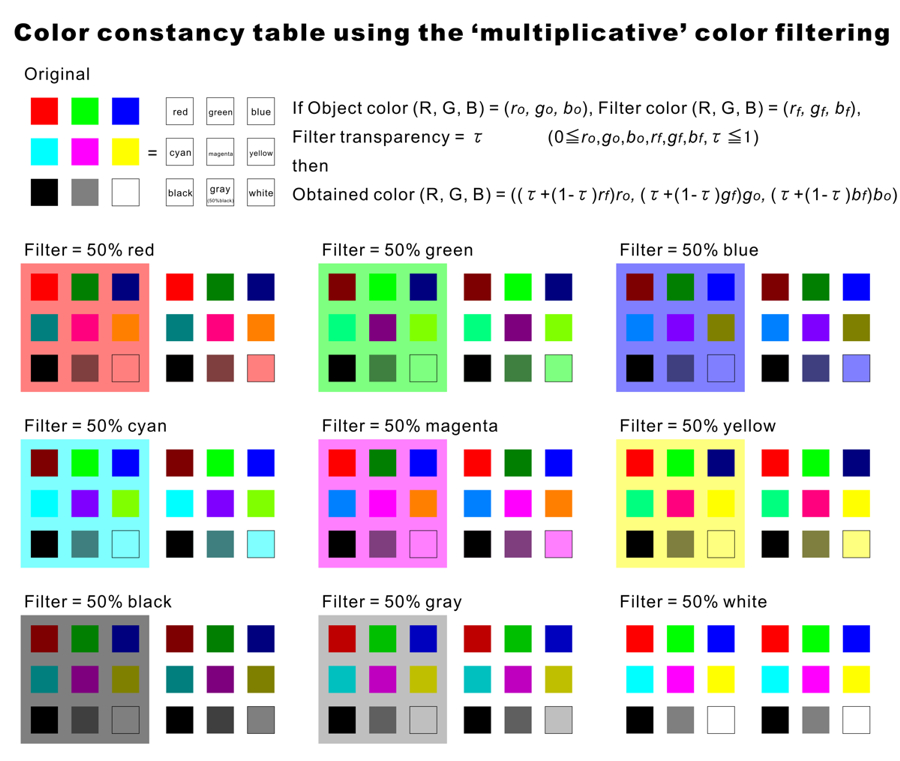
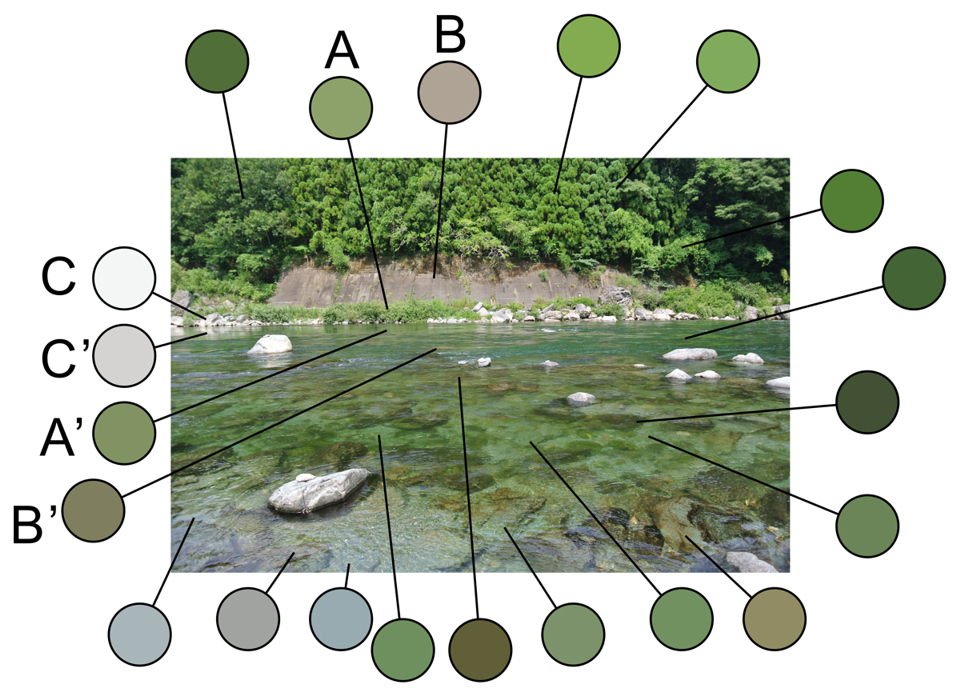
加法的色変換の例・・・「清流」の緑は山の緑
Example of additive color changes
Copyright Akiyoshi Kitaoka 2013 (August 3)

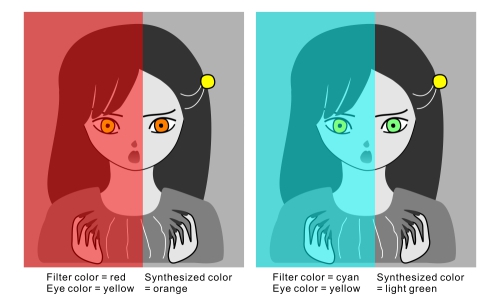
「色の恒常性による両眼闘争の抑制」
"No binocular rivalry in the color constancy eye"
2つの図を両眼融合して見ると、左目はオレンジ色と緑色の間の両眼闘争を起こすが、右目は黄色に見えたままである。しかし、右目は左目と同じく、物理的にはオレンジ色と緑色なのである。
Try to fuse them binocularly. Then, the left eye shows binocular rivalry
between orange and green, while the right eye does not. This observation
is remarkable since the right eye is the same color as the left eye in
each image.
Copyright Akiyoshi Kitaoka 2009 (June 29)
色の恒常性は高次な知覚という先入観が私にはあったが、本図は低次処理の証拠となるかもしれない。
This phenomenon might suggest that color constancy should reflect a rather
low-level visual process.
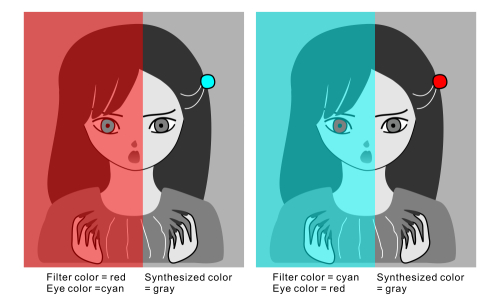
「色の恒常性による両眼闘争」
"Binocular rivalry in the color constancy eye"
2つの図を両眼融合して見ると、右目はシアン色(水色)と赤色の間の両眼闘争を起こすことがあるが、左目は灰色に見えたままである。しかし、どちらの右目も左目と同じく、物理的には灰色なのである。
Try to fuse them binocularly. Then, the right eye sometimes shows binocular
rivalry between cyan and red, while the left eye does not. This observation
is remarkable since the right eye is the same gray for each image.
Copyright Akiyoshi Kitaoka 2009 (June 29)
両眼の情報が統合される前に色の恒常性が成立していないと両眼闘争はしないよね・・・その論理でいいのか??
This phenomenon might also support the idea that color constancy should
reflect a rather low-level visual process.

Kitaoka, A. (2015). Color constancy and the vein color illusion. 38th European Conference on Visual Perception (ECVP) (Liverpool), Poster 2P1M060, August 25, 2015. Presentation (html) --- Poster (doc)
< 静脈錯視の応用 >
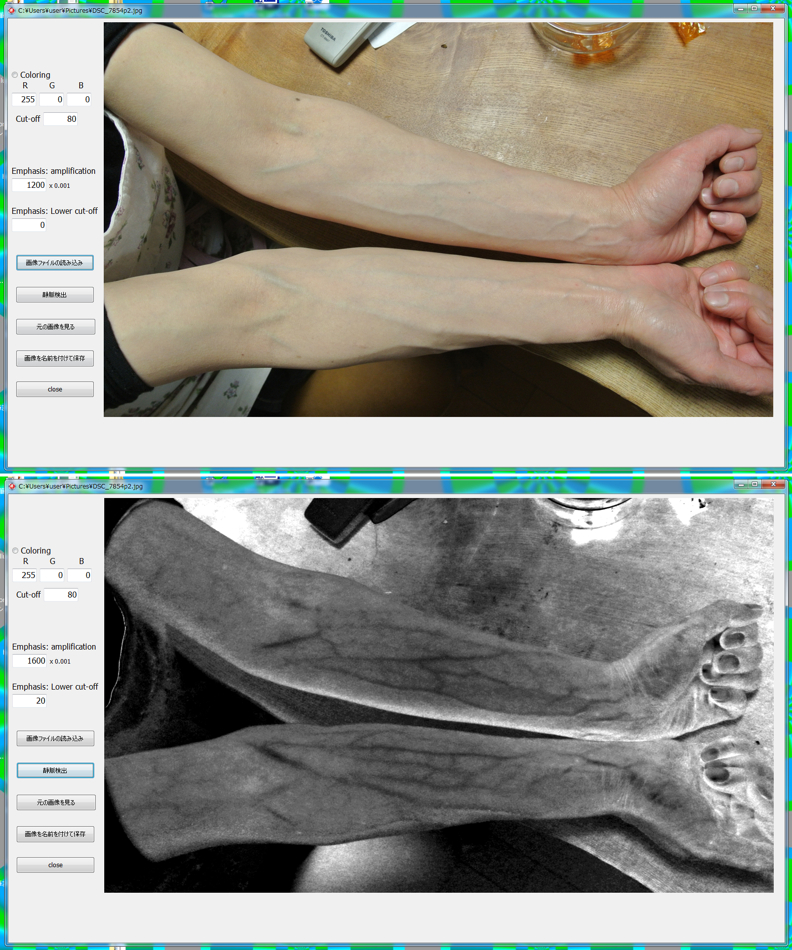
「静脈錯視を応用した静脈可視化ツール」
vein_visualization02JPEG.exe
Before (上) After (下)
Copyright Akiyoshi Kitaoka 2014 (April 27)
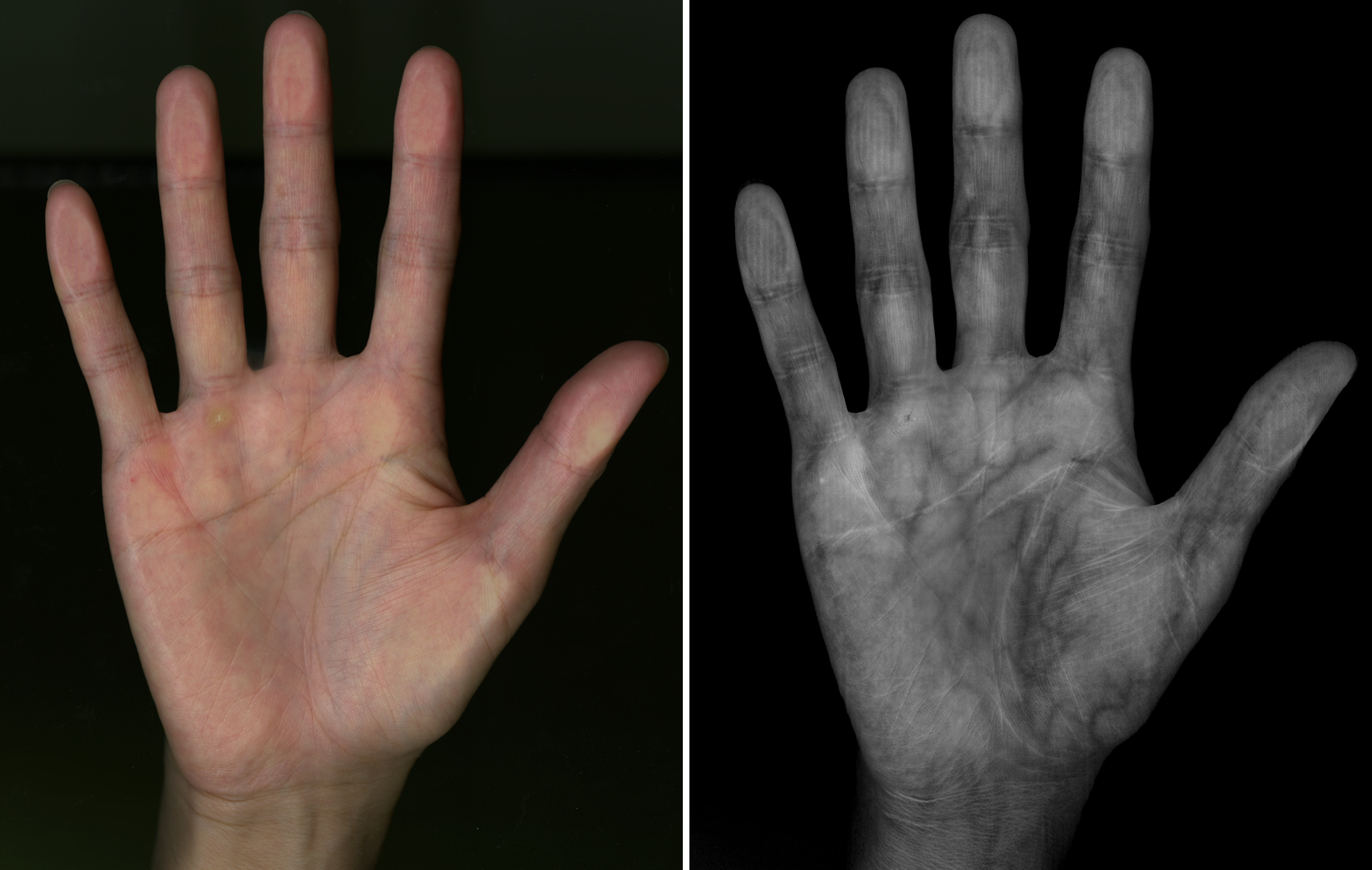
「北岡明佳の右手の掌の皮下静脈」
vein_visualization02JPEG.exe
Before (左) After (右)
Copyright Akiyoshi Kitaoka 2014 (April 27)
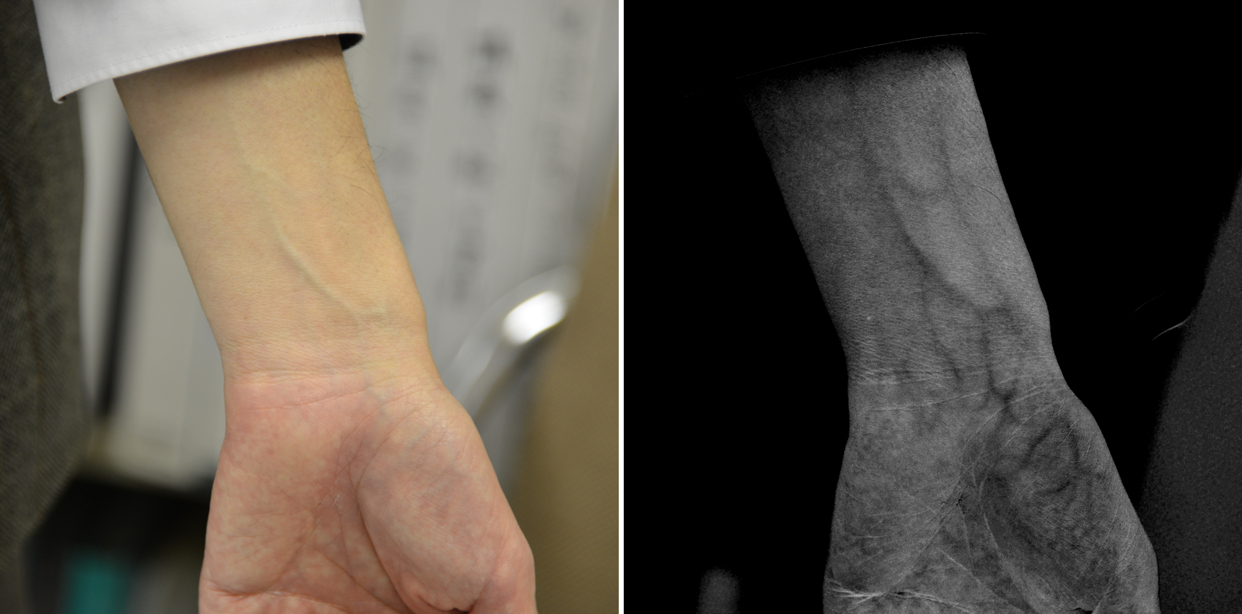
「北岡明佳の左手首付近の皮下静脈」
vein_visualization02JPEG.exe
Before (左) After (右)
Copyright Akiyoshi Kitaoka 2014 (April 27)
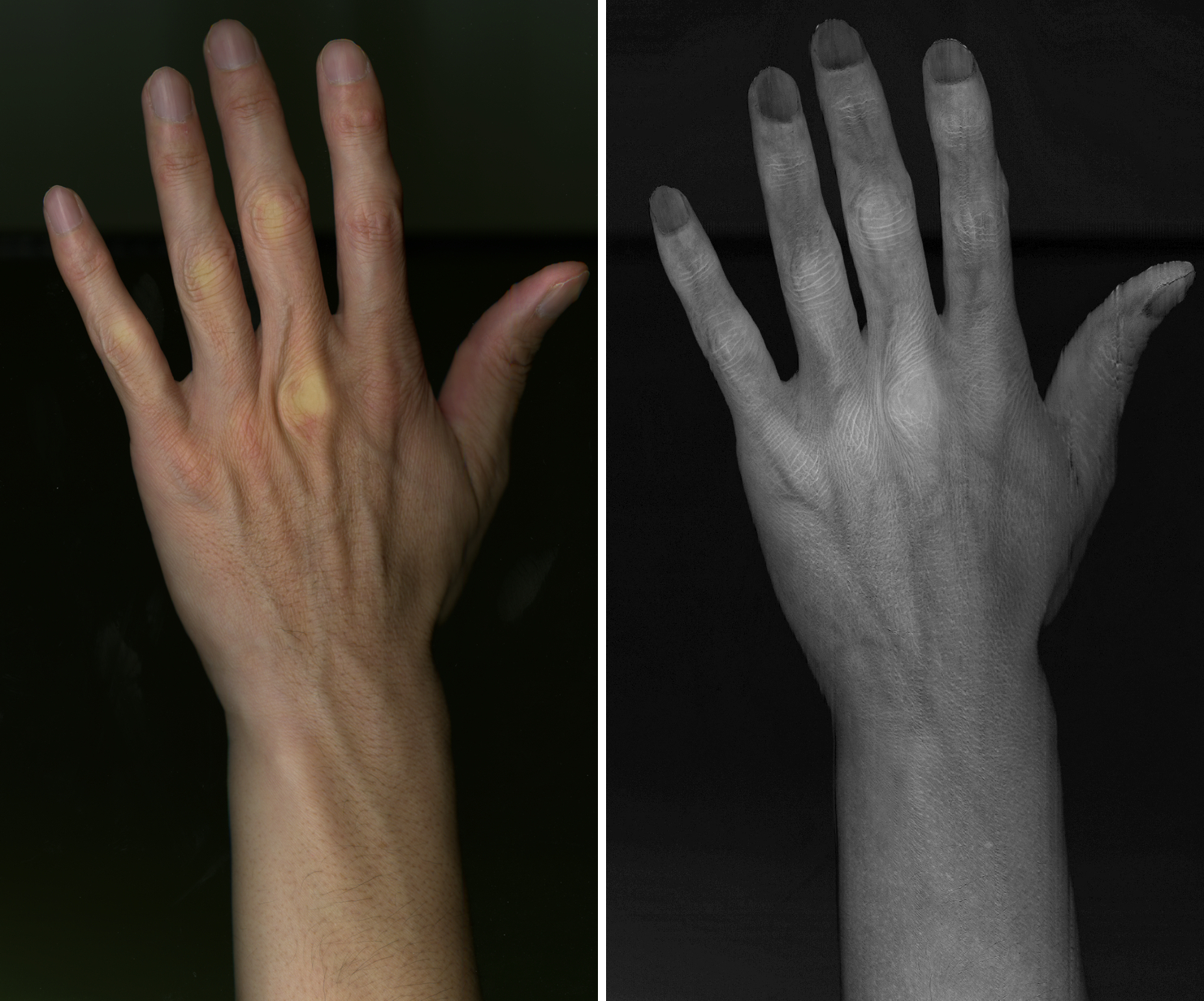
「北岡明佳の左手甲の皮下静脈」
vein_visualization02JPEG.exe
Before (左) After (右)
Copyright Akiyoshi Kitaoka 2014 (April 30)
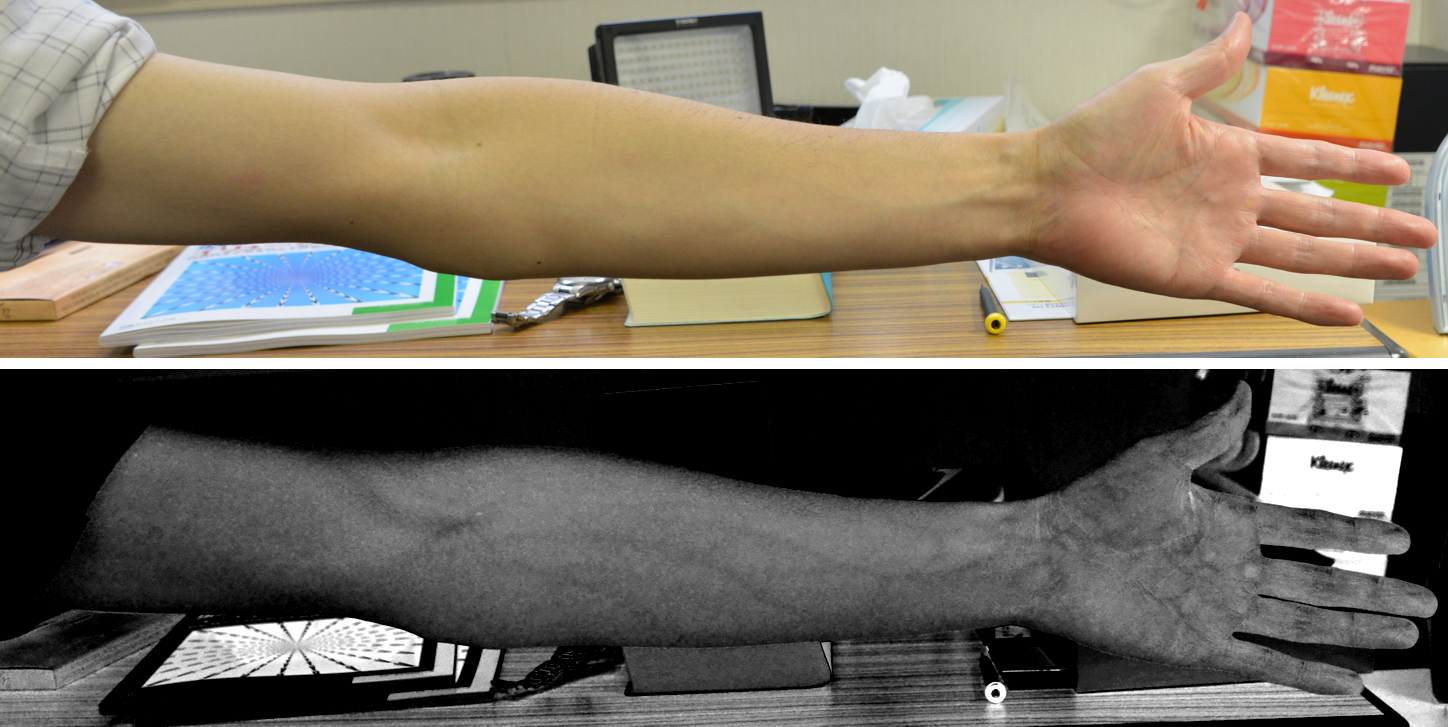
「北岡明佳の注射のやりやすい方の左腕」
vein_visualization02JPEG.exe
Before (上) After (下)
Copyright Akiyoshi Kitaoka 2014 (April 27)
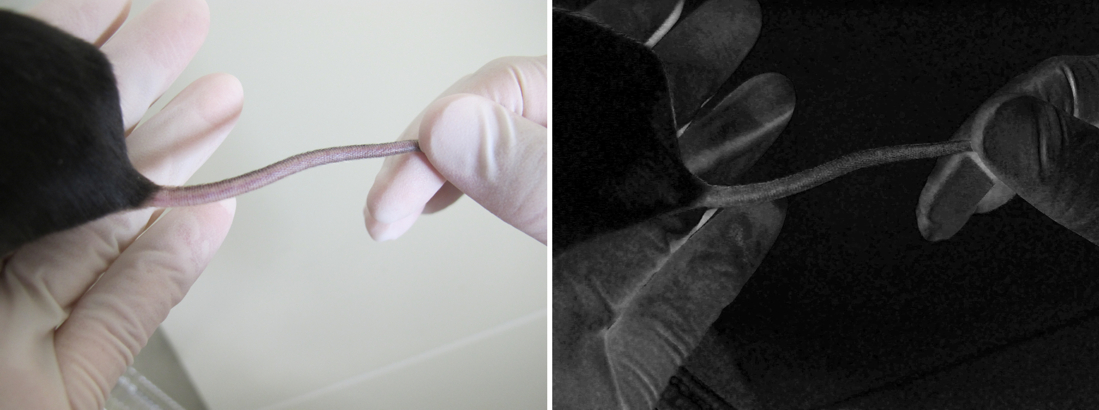
「マウスのしつぽ」
vein_visualization02JPEG.exe
Before (左) After (中)
produced Akiyoshi Kitaoka 2014 (May 1)
Thanks to Chieko
Copyright Akiyoshi Kitaoka 2014 (May 5)
< 眼振が一人で測定できる錯視図 >
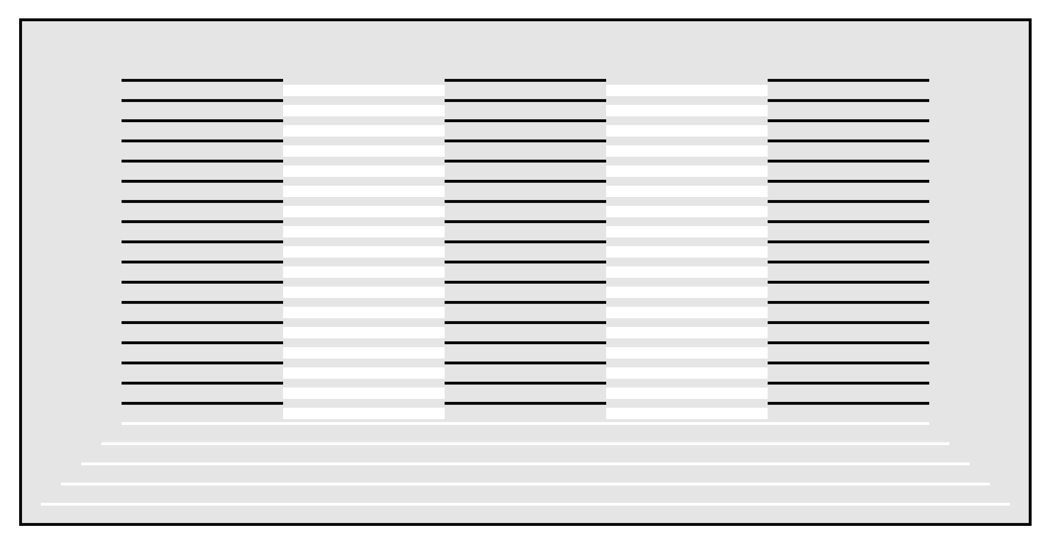
「21世紀の滝の錯視 2・改良版」
ぼんやり眺めていると、白線の縞模様が下がっていくように見える。
Copyright Akiyoshi Kitaoka 2012 (February 25)
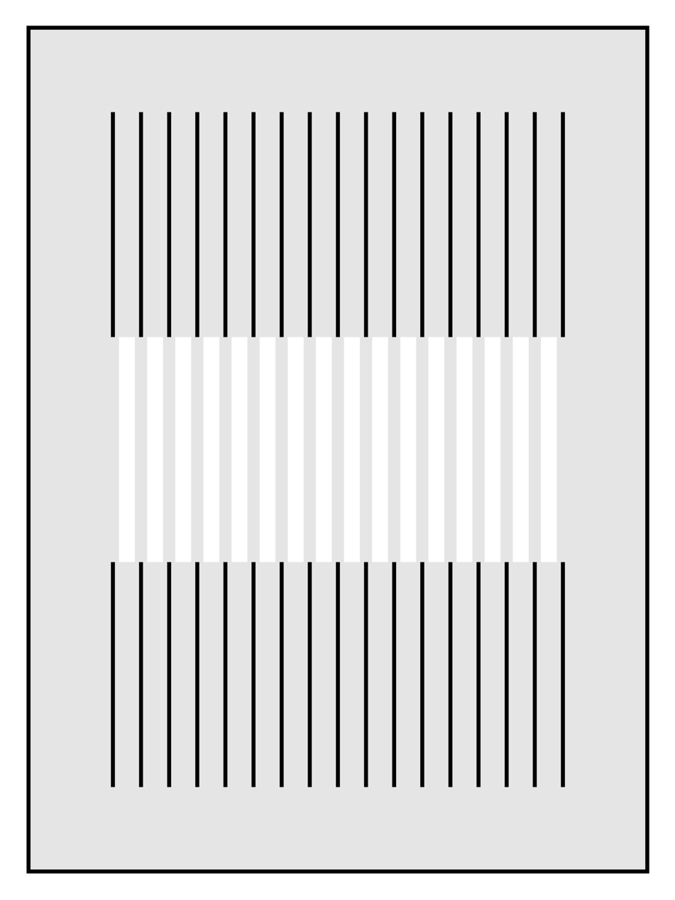
Copyright Akiyoshi Kitaoka 2012 (February 29)
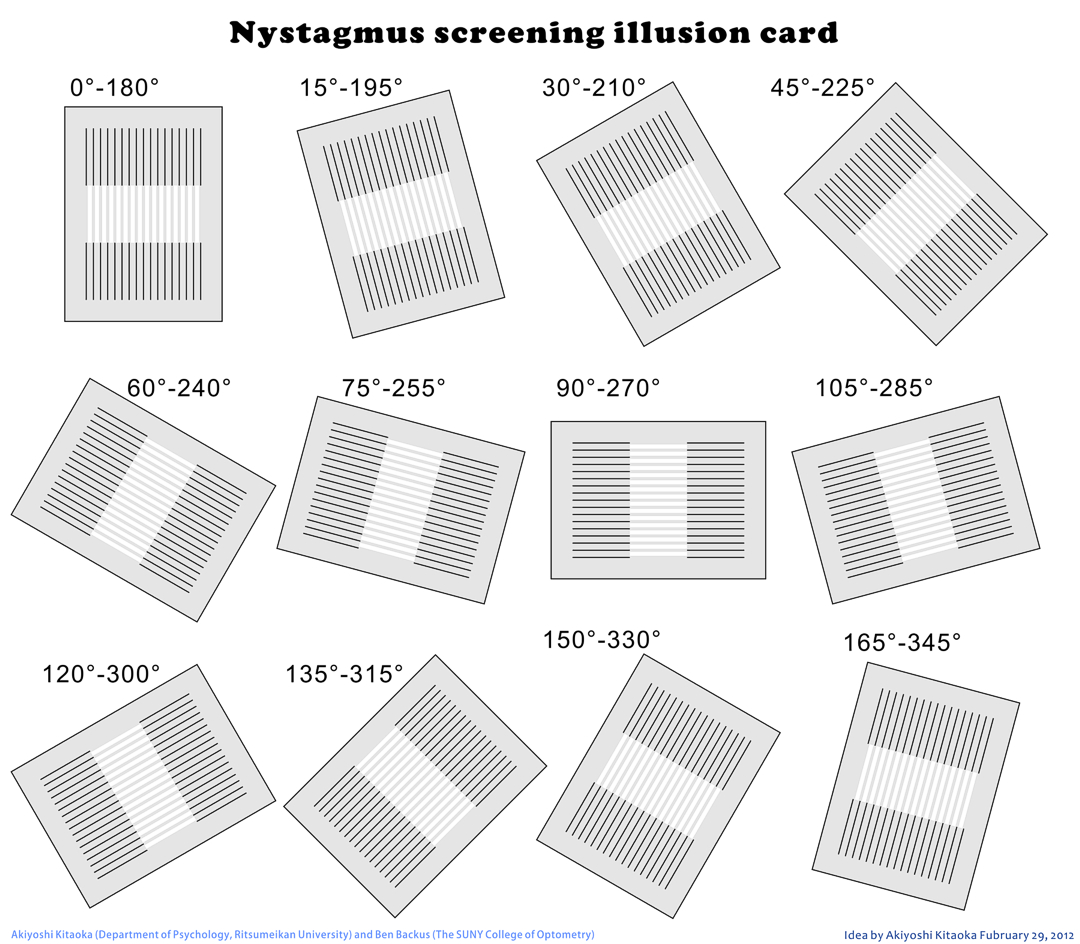
「眼振測定用の錯視図」
眼振があれば、その方位に合った白い縞模様が最も大きく動いて見える。
Copyright Akiyoshi Kitaoka 2012 (February 29)
北岡明佳 (2012) 「錯視の心理学」 シンポジウム「目と脳」(平山和美先生と。司会は鈴木匡子先生) (第36回日本神経心理学会総会 「神経心理学はこのままでいいのか いけないのか」 学術総合センター・A会場・2012年9月15日(土)15:00-16:00) 発表に使用したウェブページ
北岡明佳 (2013) 錯視の心理学 神経心理学, 29(2), 106-112. 
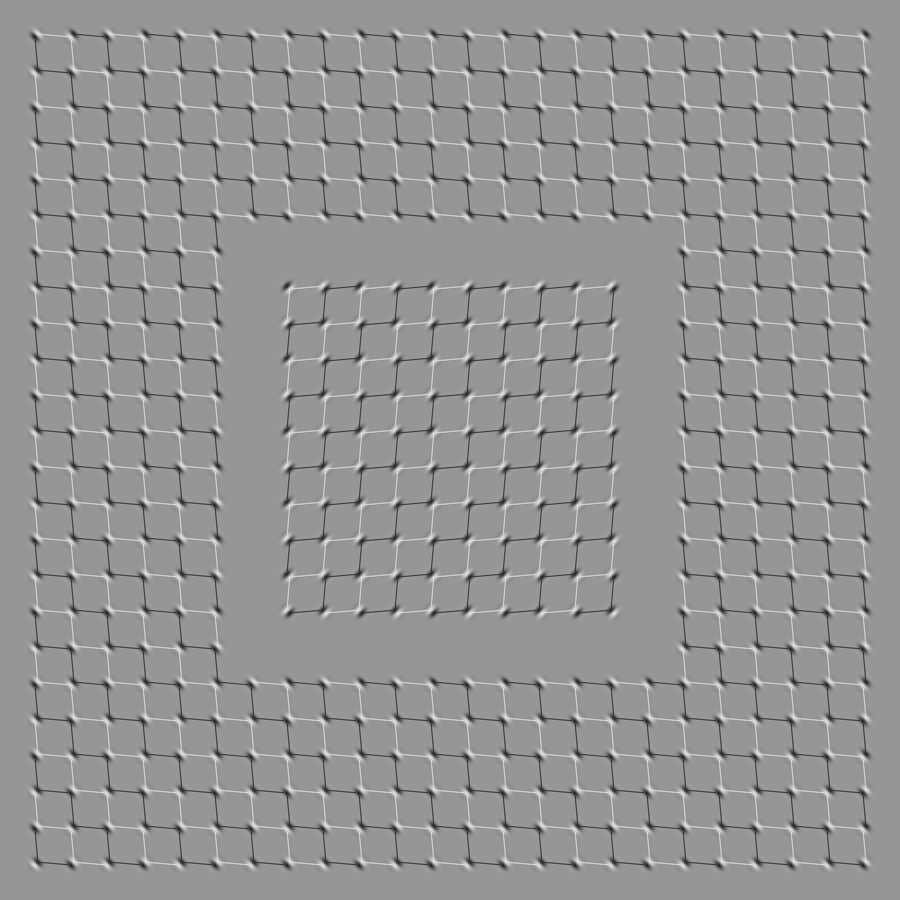
「エンボスドリフト錯視」
(サイン波型)
内側の正方形領域が動いて見える。
"Drifting Emboss illusion"
(sine type)
The inset appears to move.
Copyright Akiyoshi Kitaoka 2016 (February 15)
眼振測定用検査刺激としての応用可能性
●緩徐相が右方向なら、内側の領域は上に動いて見える。
●緩徐相が左方向なら、内側の領域は下に動いて見える。
●緩徐相が上方向なら、内側の領域は右に動いて見える。
●緩徐相が下方向なら、内側の領域は左に動いて見える。
Copyright Akiyoshi Kitaoka 2012 (August 23)
なぜ動いて見えるかの説明
Kitaoka, A. (2010) The Fraser illusion family and the corresponding motion illusions. 33rd European Conference on Visual Perception (ECVP 2010), EPFL, Lausanne, Switzerland, 2010/8/22-26, 8/26 poster publication. Poster (Kitaoka, A. (2010) The Fraser illusion family and the corresponding motion illusions. Perception, 39, Supplement, #61, p. 178)
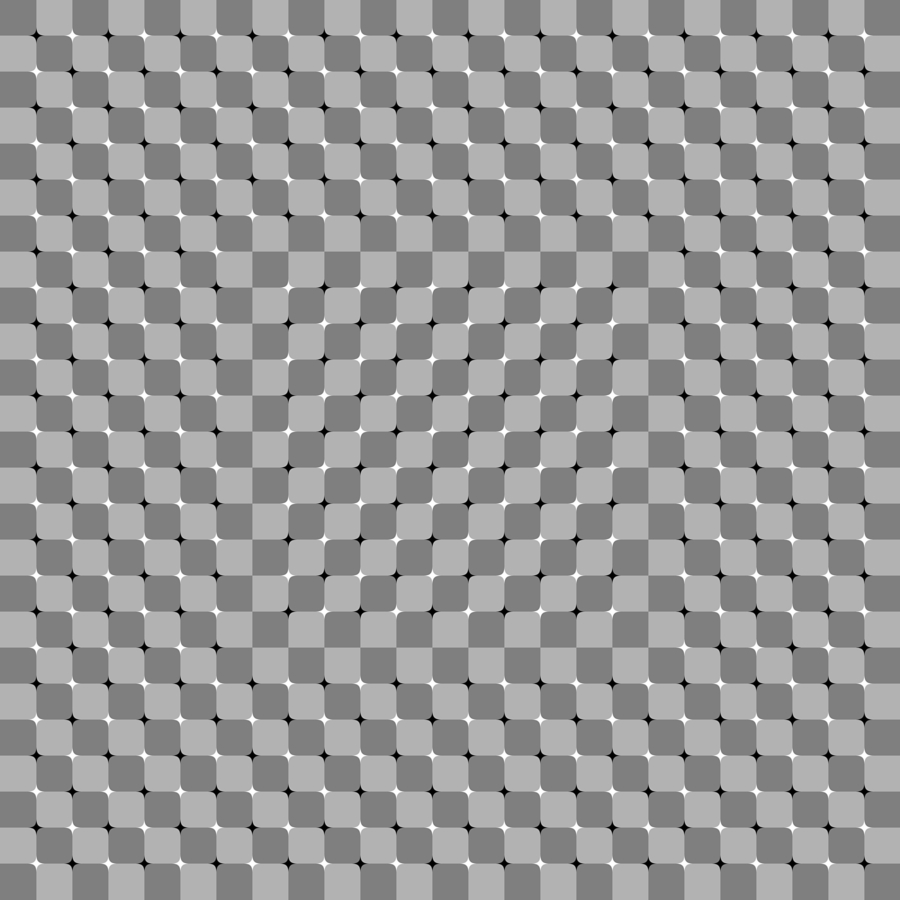
Y接合部の錯視
Kitaoka, A., Pinna, B., and Brelstaff, G. (2001). New variations of spiral illusions. Perception, 30, 637-646.
< 色と明るさの錯視 >
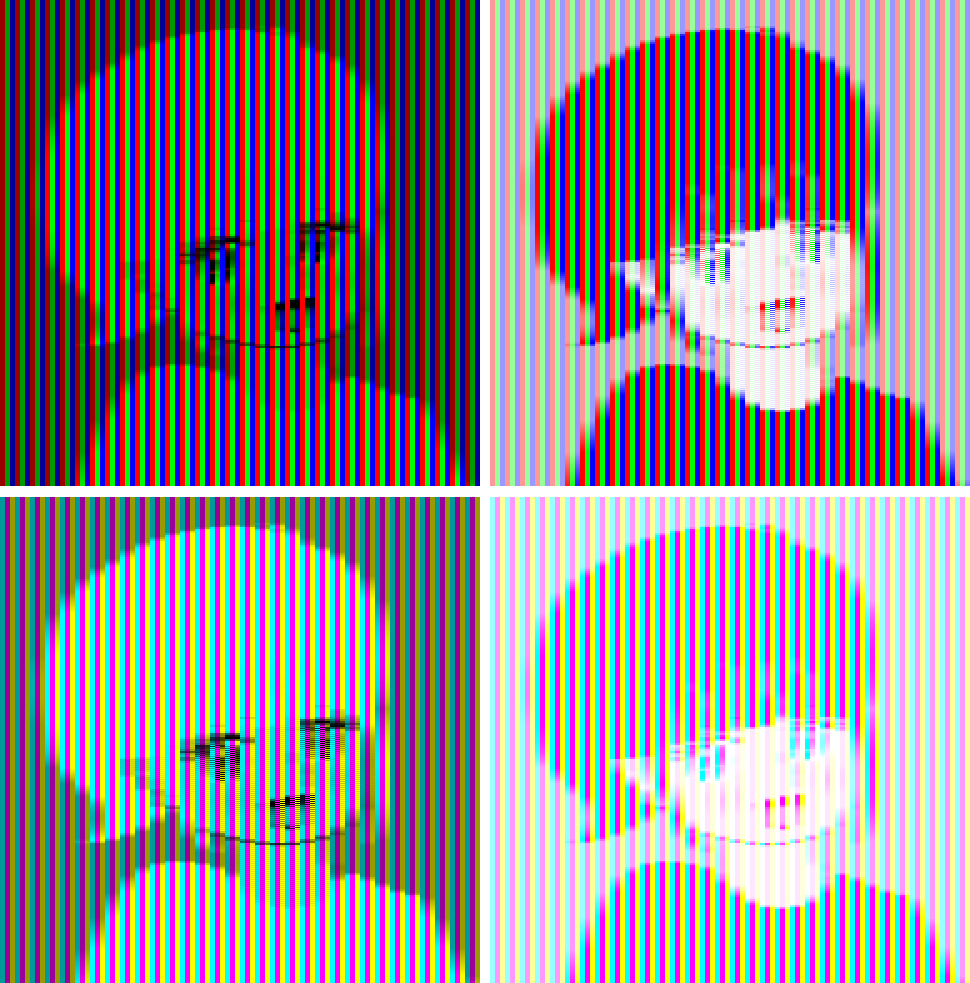
「白い髪と服のおねえさんと黒い髪と服のおねえさん RGBとCMY」
髪と服はどちらも赤・緑・青(上段)あるいはシアン・マゼンタ・イエロー(下段)の縞模様でできていて同じであるが、加法混色(左)か減法混色(右)かの違いによってそれぞれ白と黒に見える。
Copyright Akiyoshi Kitaoka 2016 (March 13)
-black-RC(CMY)s.jpg)
「RCで白と黒」
上の絵の髪は白く見え、下の絵の髪は黒く見えるが、同じ赤(red)と水色(cyan)の縞模様である。
Copyright Akiyoshi Kitaoka 2016 (August 21)
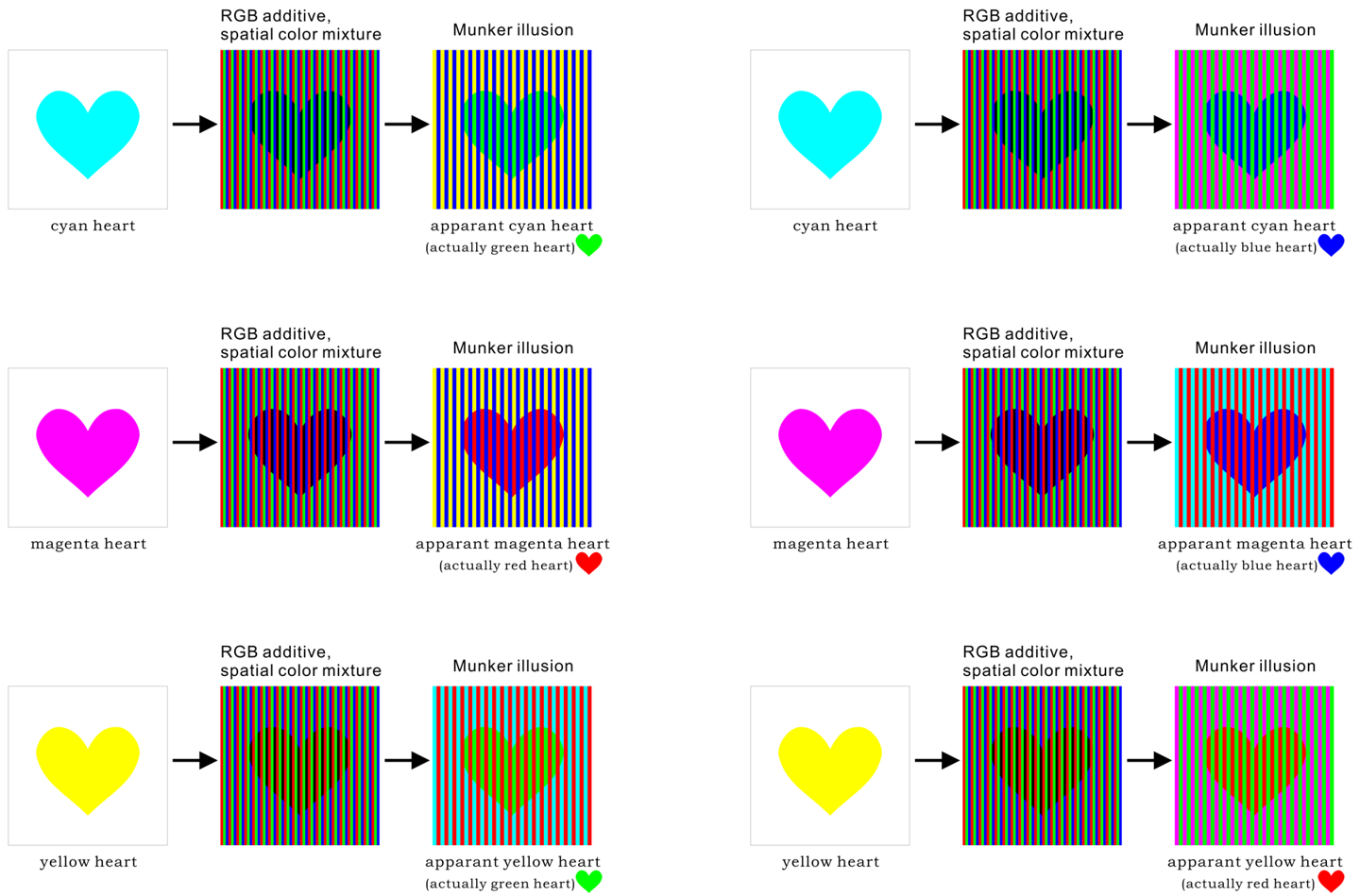
「加法混色の並置混色によるムンカー錯視の説明図」
Copyright Akiyoshi Kitaoka 2016 (March 22)
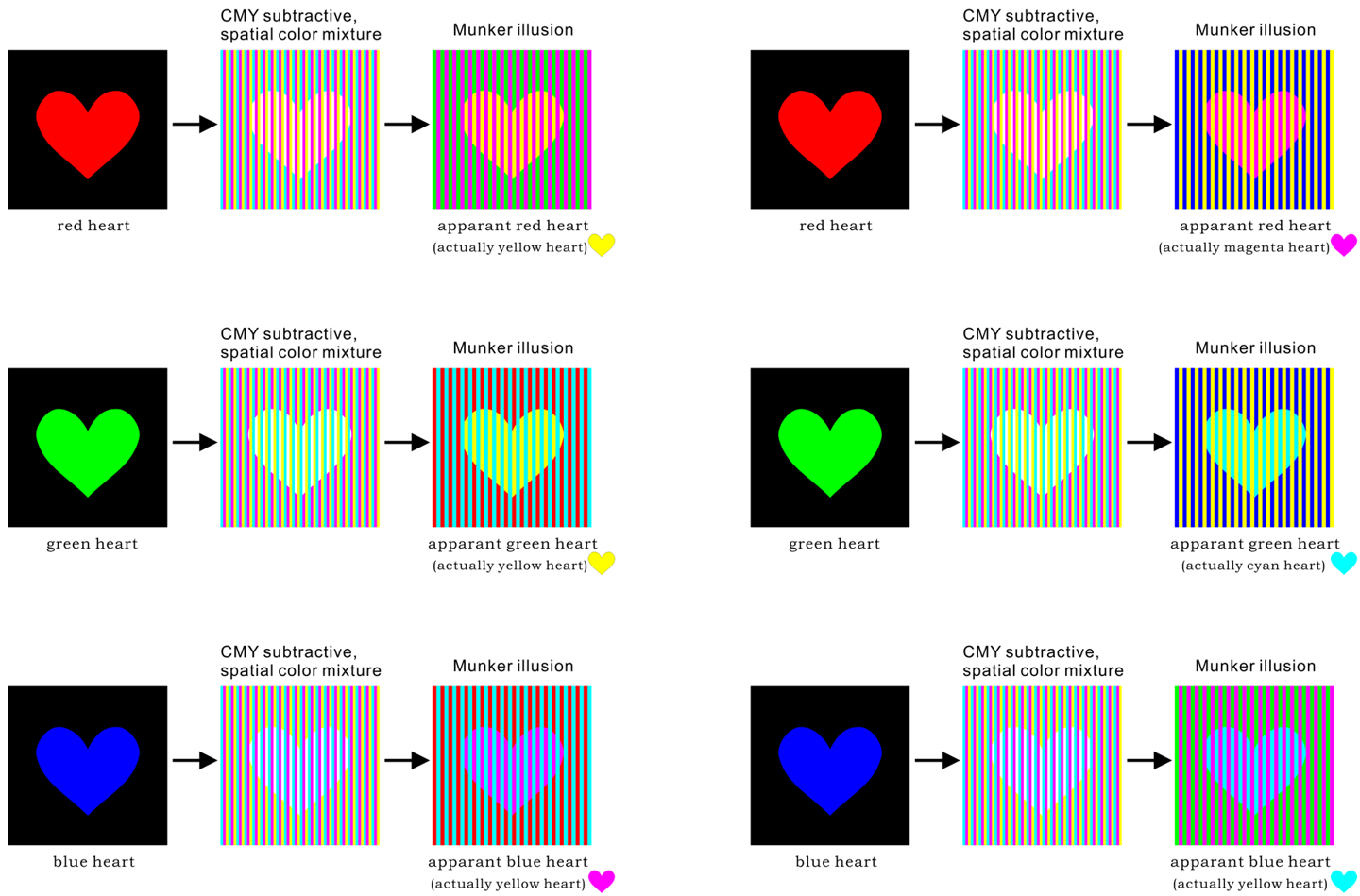
「減法混色の並置混色によるムンカー錯視の説明図」
Copyright Akiyoshi Kitaoka 2016 (March 22)
左のハートと物理的に同じ色は(1)(2)(3)のうちどれでしょう。
問1
問2
問3
問4 
2012/8/17
ムンカー錯視を用いた作品「赤の渦巻き」↓
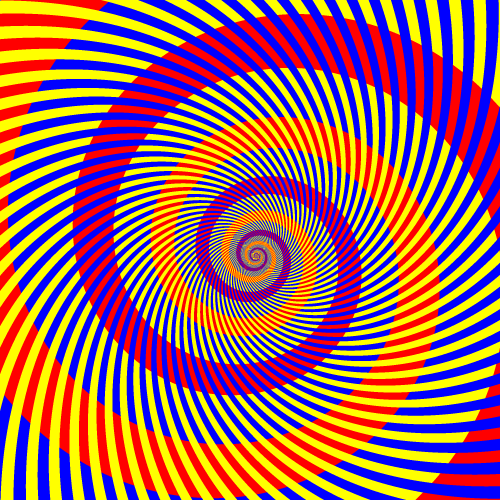
赤紫がかった赤い螺旋とオレンジ色がっかった赤い螺旋があるように見えるが、どちらも同じ赤である。
Copyright A.Kitaoka 2002
ムンカー錯視を用いた作品「緑の渦巻き」↓
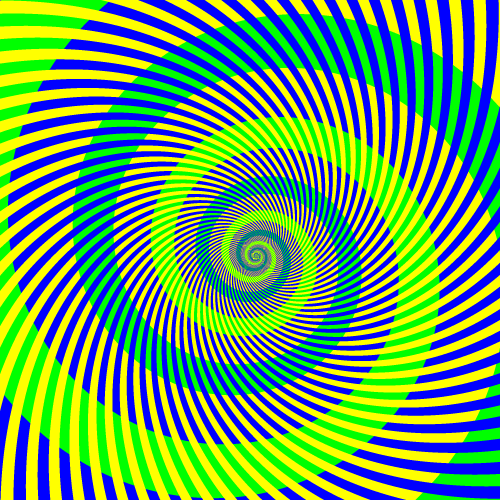
黄緑の螺旋と青緑の螺旋があるように見えるが、どちらも同じ緑である。
Copyright A.Kitaoka 2002
ムンカー錯視を用いた作品「水色と黄緑の渦巻き」↓
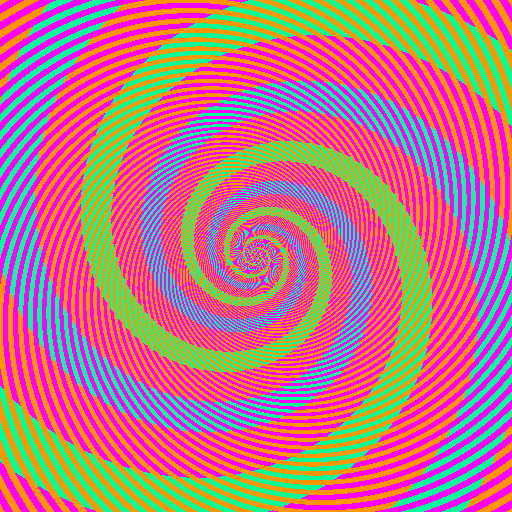
水色の螺旋と黄緑の螺旋があるように見えるが、どちらも同じ色(r = 0, g = 255, b = 150)である。この色の錯視はモニエ・シェベル錯視に近いと思うが、彼らの理論には合わないのかもしれない。
Copyright A.Kitaoka 2003
ムンカー錯視(Munker illusion)
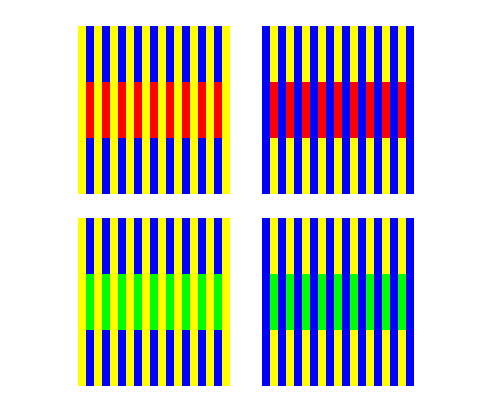
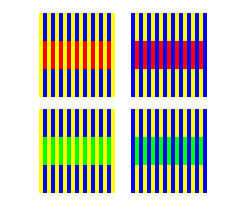
黄と青の縞の青部分に赤を乗せるとオレンジ色に見え、黄部分に赤を乗せると赤紫がかって見える。緑を乗せるとそれぞれ黄緑と青緑に見える。高空間周波数図形で錯視量が多い。
Munker, H. (1970) Farbige Gitter, Abbildung auf der Netzhaut und übertragungstheoretische Beschreibung der Farbwahrnehmung. München: Habilitationsschrift.
ムンカー錯視の作り方
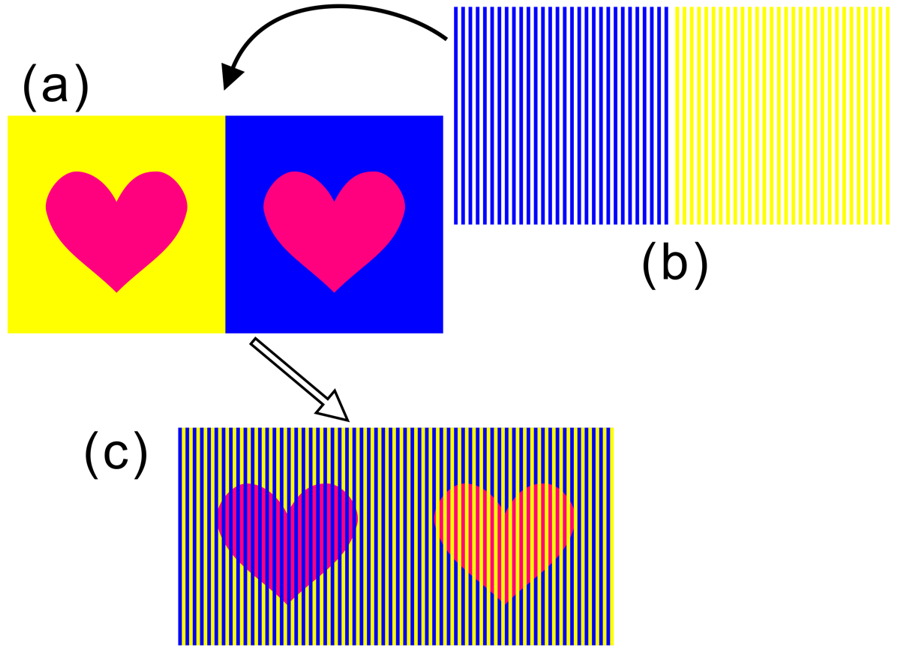
< シマシマガクガク錯視 >
Kitaoka, A. (2014). Visual illusion in ARTPOP and pop art. Japanese Journal of Psychonomic Science, 32(2), 232-234. PDF, PDF (scanned copy)
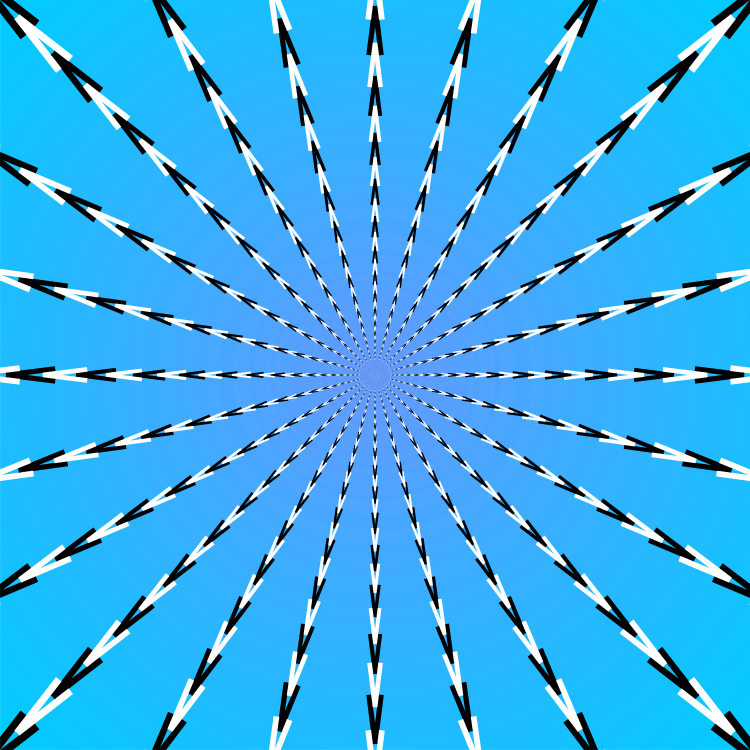
「ガンガゼ」
ガクガクして見える。
Copyright Akiyoshi Kitaoka 2008 (March 11)
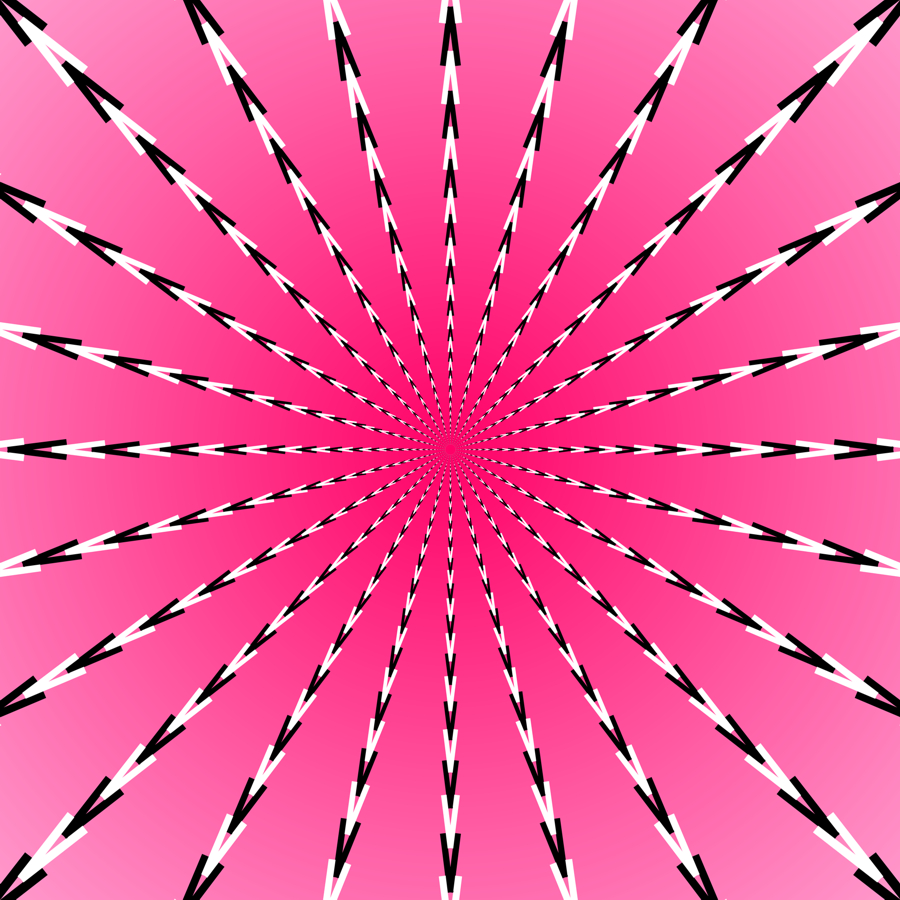
「ピンクのガンガゼ」
ガクガクして見える。
Copyright Akiyoshi Kitaoka 2013 (February 5)
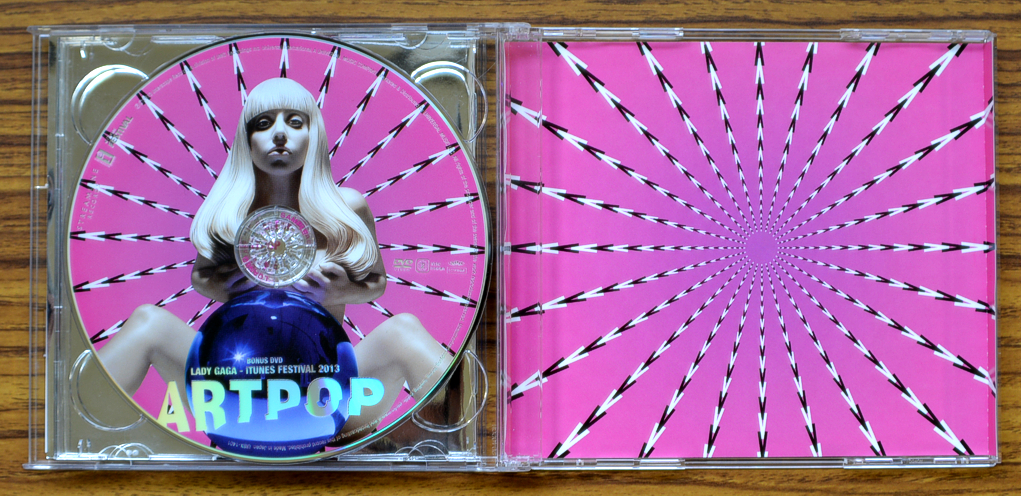
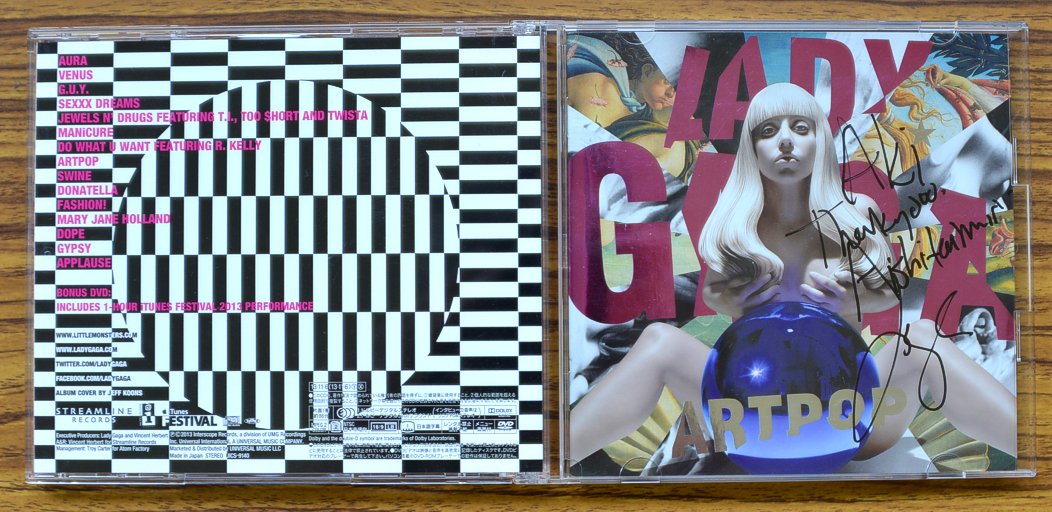
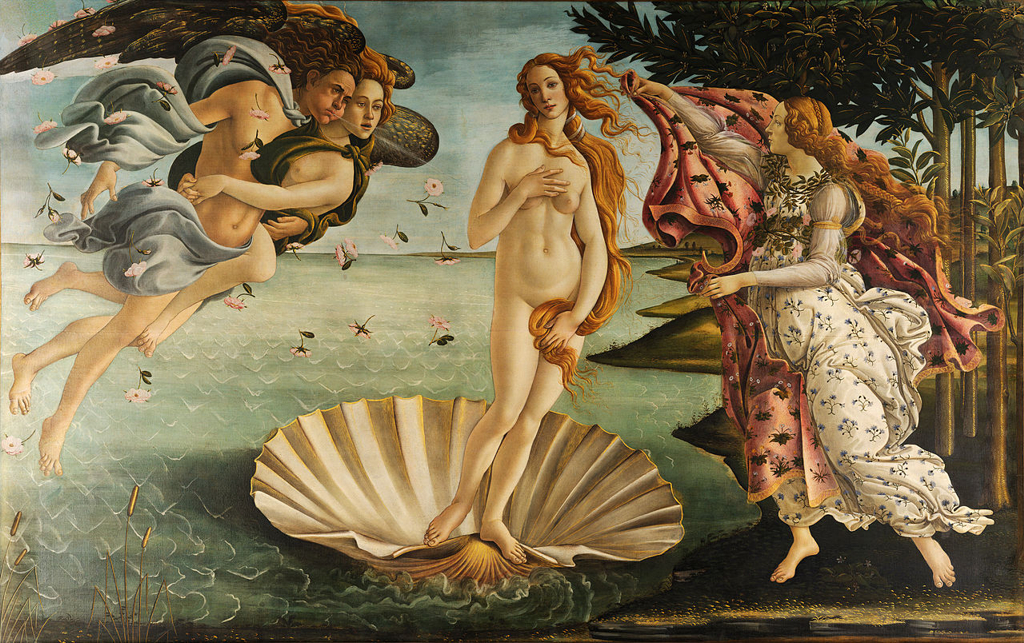
『ヴィーナスの誕生』 サンドロ・ボッティチェリ作 1483年頃
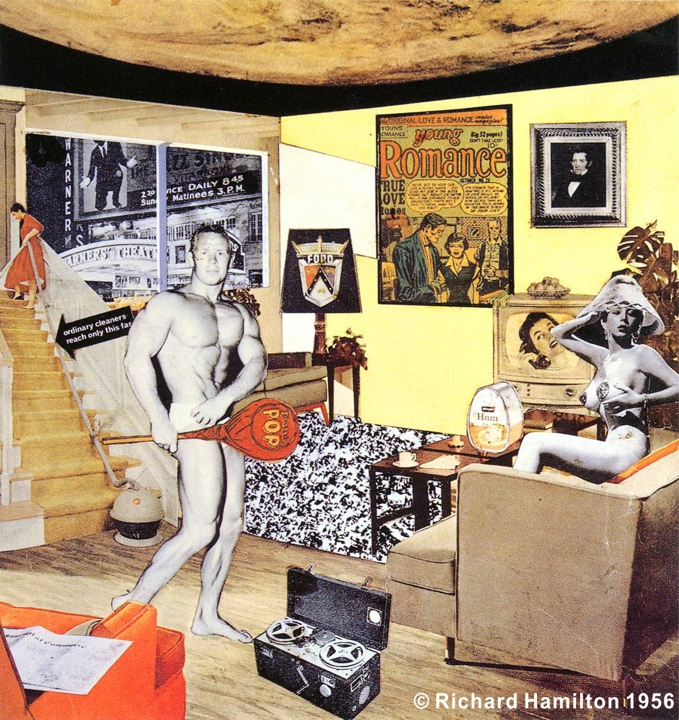
Richard Hamilton: Just what is it that makes today's homes so different, so appealing? (1956)
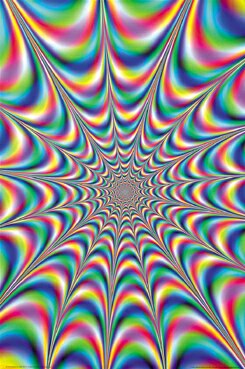
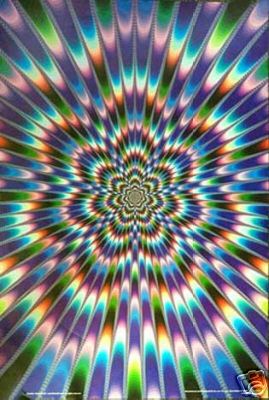
"Fractal Illusion" and "Fractal Zap"
Copyright Jeff Berkeley 1993 (Fractal Illusion), 1994 (Fractal Zap)
((c) 2000 Lifesmith Classic Fractals, Palmdale, CA, USA; 16-045 Published by AQUAIUS; Printed in the UK. www.aquariusimages.com; 福井県こども歴史文化館による情報)
"These are two of my fractal posters still sold at stores like Spencer's Gifts... "
シマシマドリフト錯視・シマシマガクガク錯視

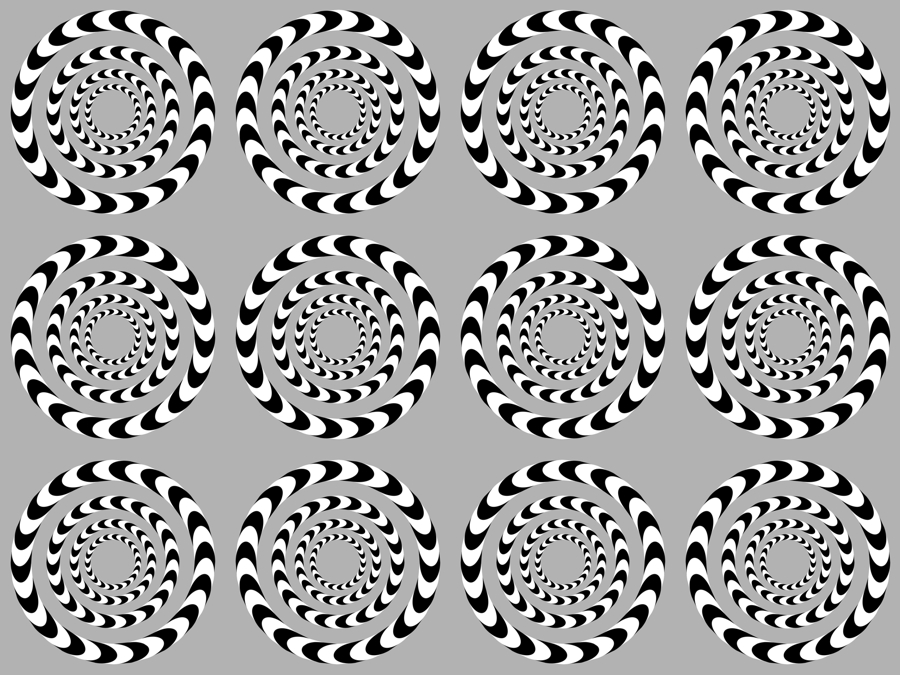
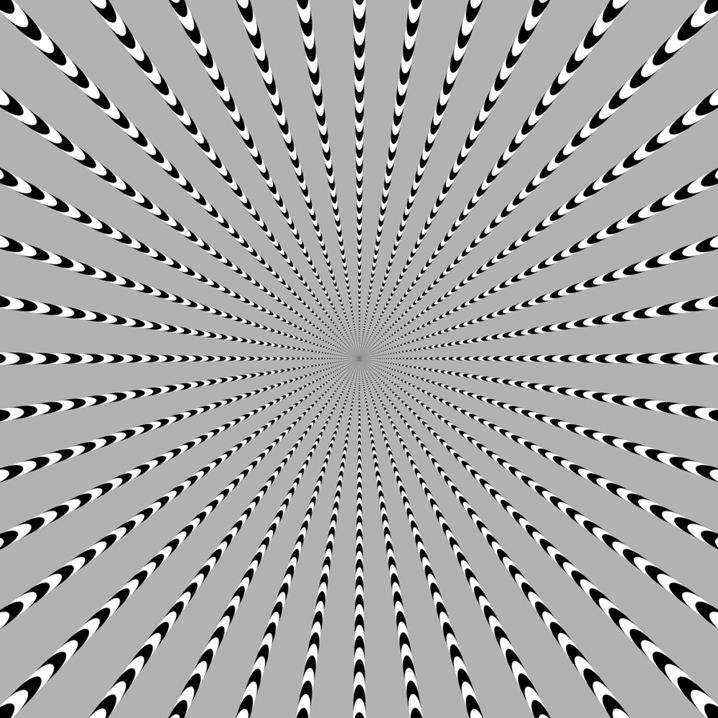
オオウチ錯視(シュピルマン錯視)
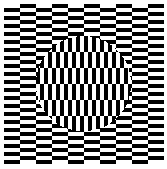
標準型
Spillmann, L., Heitger, F., and Schuller, S. (1986) Apparent displacement and phase unlocking in checkerboard patterns. Paper presented at the 9th European Conference on Visual Perception, Bad Nauheim.
Spillmann, L. (2013). The Ōuchi–Spillmann illusion revisited. Perception,
42, 413–429.
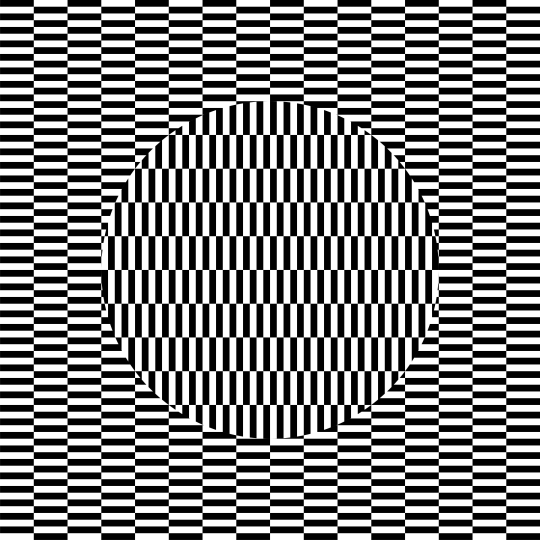
蘆田強化型
Ashida, H. (2002) Spatial frequency tuning of the Ouchi illusion and its dependence on stimulus size. Vision Research, 42, 1413-1420.
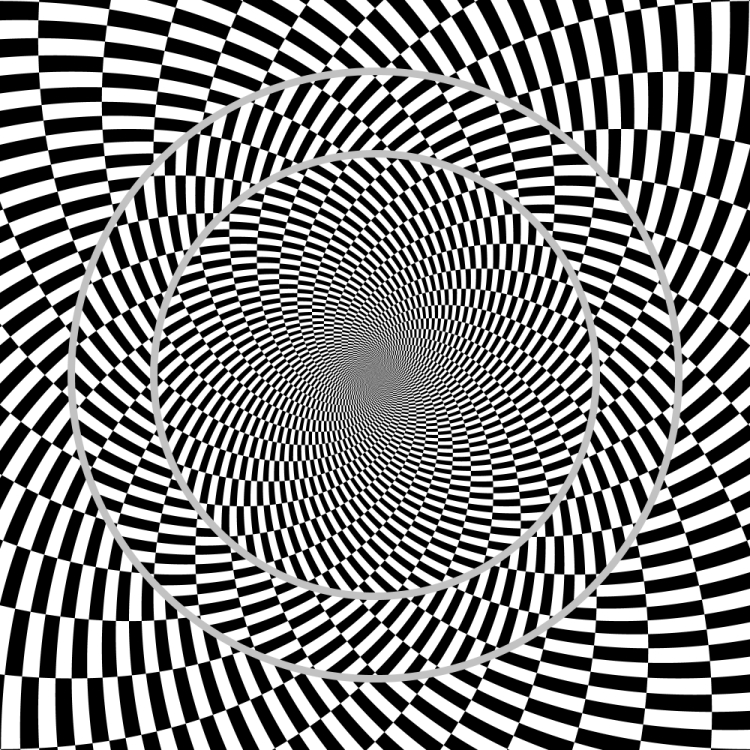
オオウチ錯視:回転錯視表現・拡大縮小錯視表現
Kitaoka, A. and Murakami, I. (2007) Rotating Ouchi illusion. Poster presentation in VSS2007, Sarasota, Florida, USA, May 15, 2007. Abstract (MS-Word) VSS2007 Abstract (including all) (PDF)
(Kitaoka, A., & Murakami, I. (2007). Rotating Ouchi illusion [Abstract]. Journal of Vision, 7(9):984, 984a, http://journalofvision.org/7/9/984/,doi:10.1167/7.9.984.)
オオウチ錯視とシマシマガクガク錯視
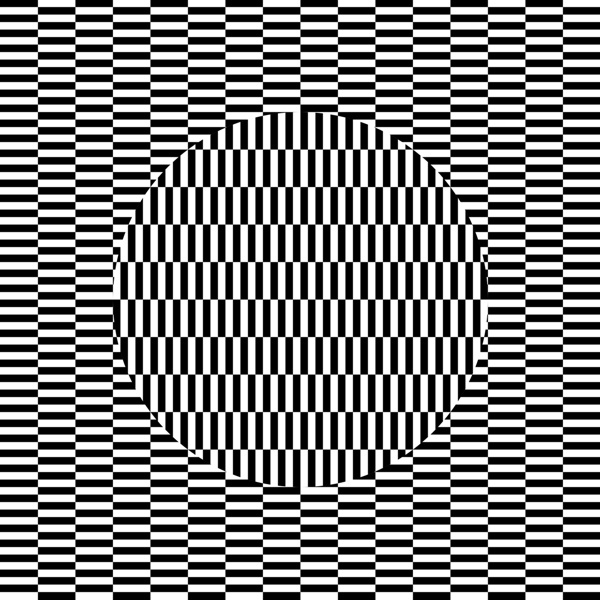
オオウチ錯視・蘆田最適化版の短辺のところを灰色にすると
↓
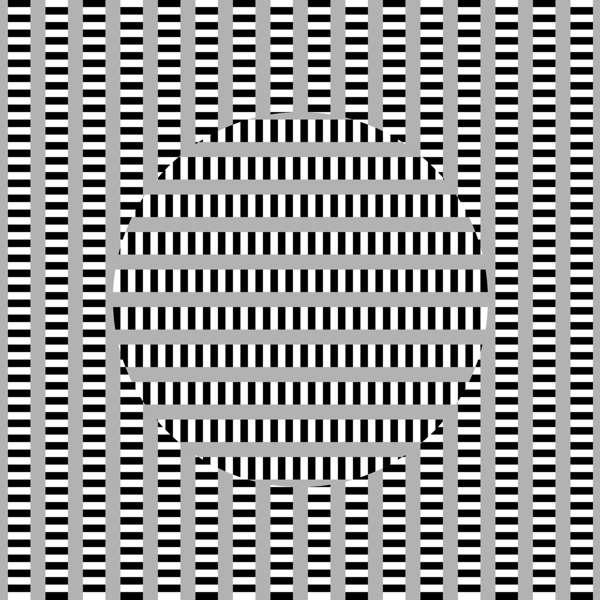
円形領域はやはり動いて見える。あるいは錯視量増大。
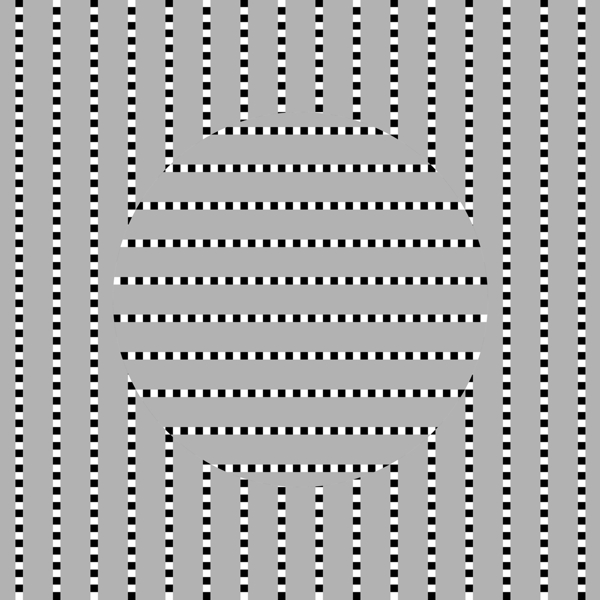
円形領域が動いて見える。
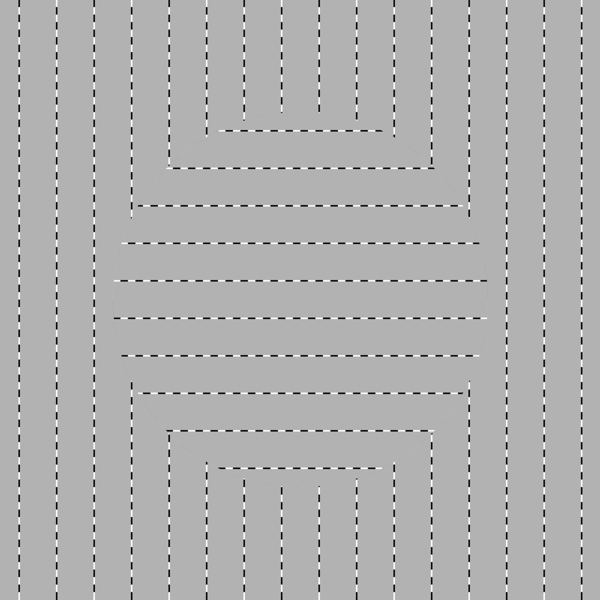
円形領域が動いて見える。
振ると動いて見える錯視
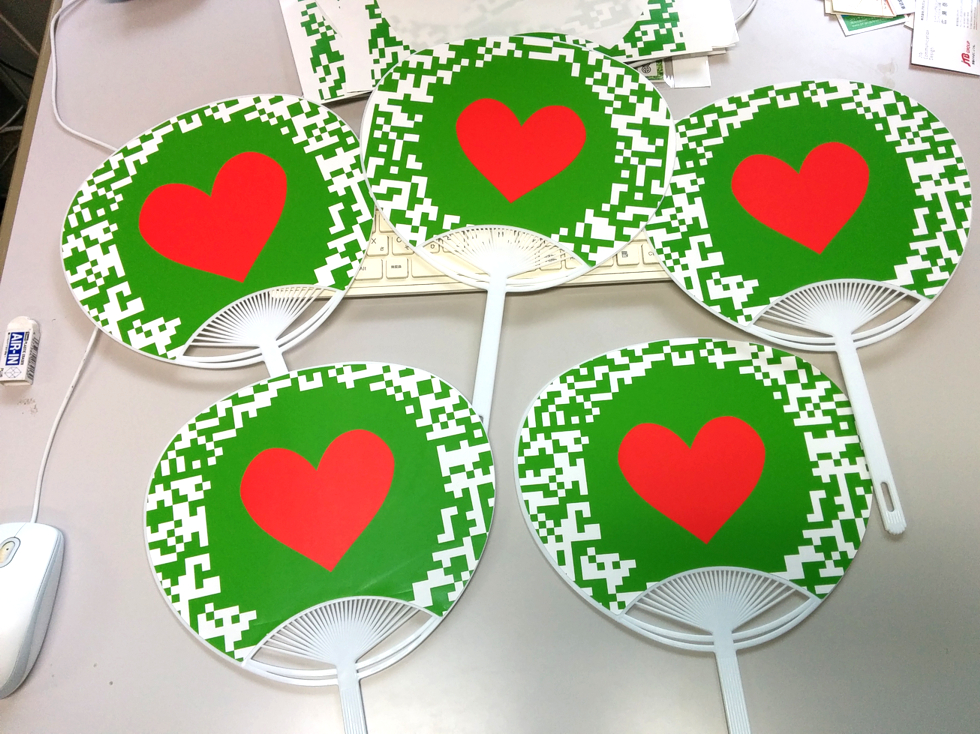
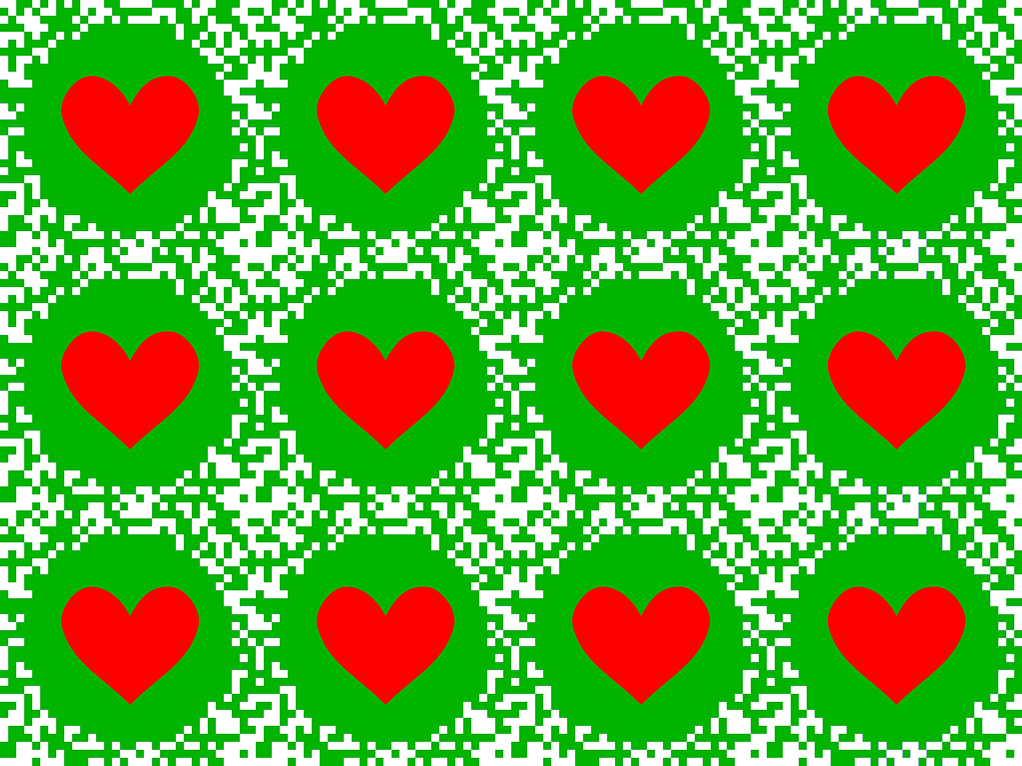
「緑背景に赤の踊るハート」
印刷して暗いところで動かすとハートがよく動いて見える(明るくても見えるが)。パソコン画面でもメガネをかけている人はメガネを上下させれば見ることができる。
Copyright Akiyoshi Kitaoka 2013 (January 21)
この色の組み合わせが錯視量最大に見えるなあ・・・
「踊るハート達」
ハートが動いて見える。めがねをかけている人は、めがねを動かすとよく見えるかもしれない。離れたところから見ると、明るくなった時のハートは白のランダムドットより手前に見え、暗くなった時のハートは奥に見える人が過半数と予想される。
Copyright Akiyoshi Kitaoka 2006 (December 20)
<配布プリント>
モノクロでOK
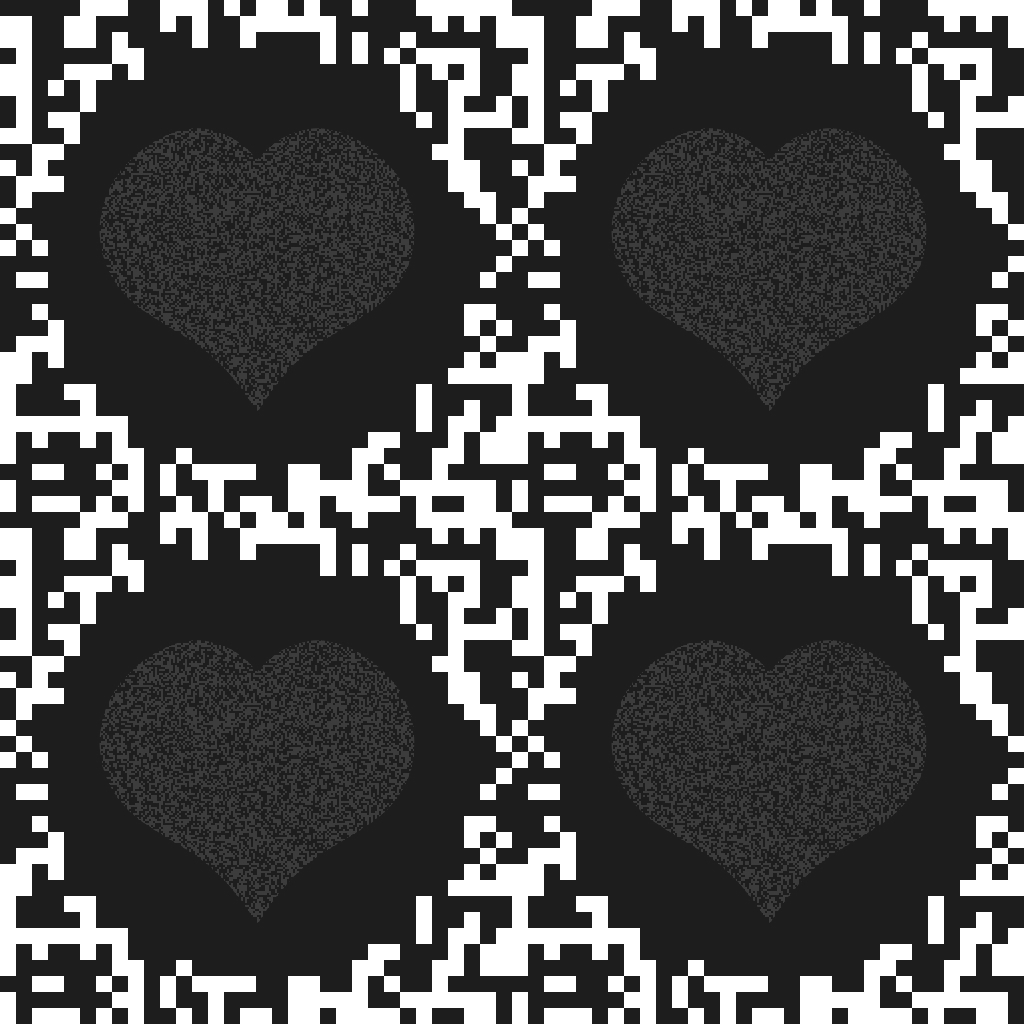
配布物
「踊るハート達」 (MS-Word ファイル)
北岡明佳 (2006) 色が強くなる錯視 A・F・Tジャーナル, 31 (Summer), pp. 01.
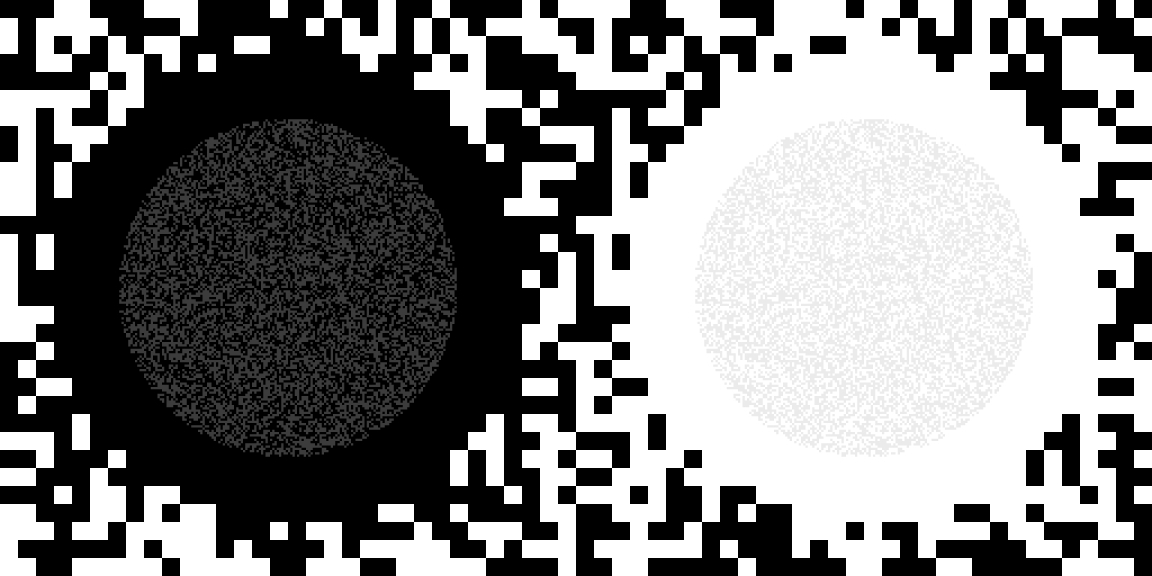
低輝度→脳内処理時間が長い
cf. プルフリッヒ効果
低輝度コントラスト→脳内処理時間が長い <our finding!>
1. High-luminance parts show shorter latency than low-luminance part.
2. High-contrast parts show shorter latency than low-contrast part. <our finding!>
Kitaoka, A. and Ashida, H. (2007) A variant of the anomalous motion illusion based upon contrast and visual latency. Perception, 36, 1019-1035. PDF
cf.
踊るハート(fluttering-heart illusion)

(Helmholtz, 1867; Nguyen-Tri and Faubert 2003; von Grünau 1975a, 1975b, 1976; von Kries 1896)
中山(2008)によると、踊るハートは赤が重要。青不要。ピンクはダメ。
中山明子 (2008) 「踊るハート」錯視(1844)と「踊るハート達」錯視(2006)の比較検証 2008年度立命館大学文学部(人文学科心理学専攻)卒業論文
フレーザー錯視の渦巻き錯視
Fraser, J. (1908) A new visual illusion of direction. British Journal of Psychology, 2, 307-320.
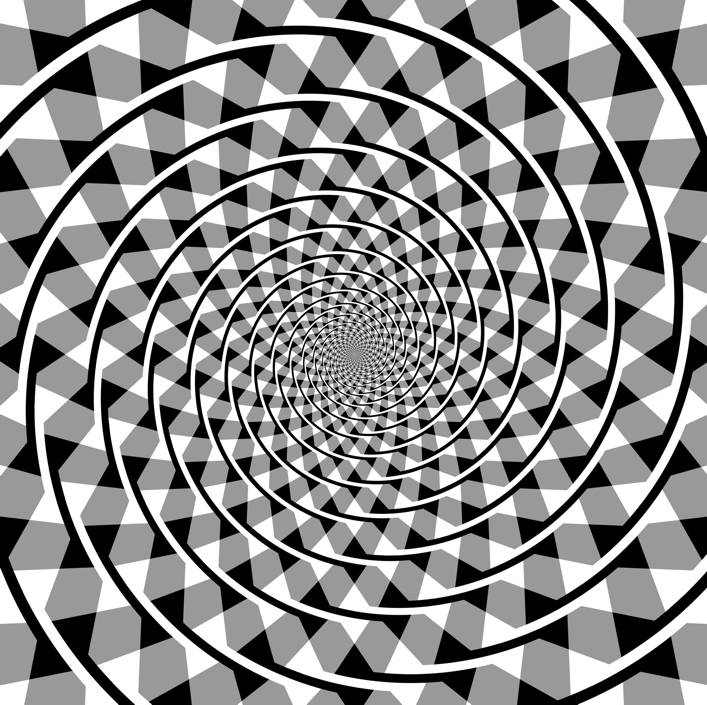
同心円が渦巻きに見える。
First presented by Fraser (1908); Reproduced by Akiyoshi Kitaoka (2009)
フレーザー錯視 平行に配置した「ねじれ紐」が上から左・右・左・右に傾いて見える。
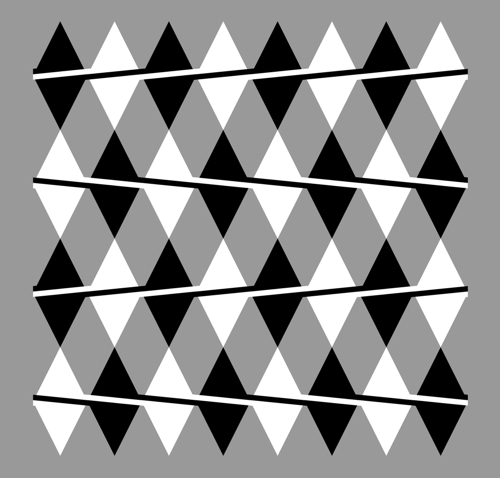
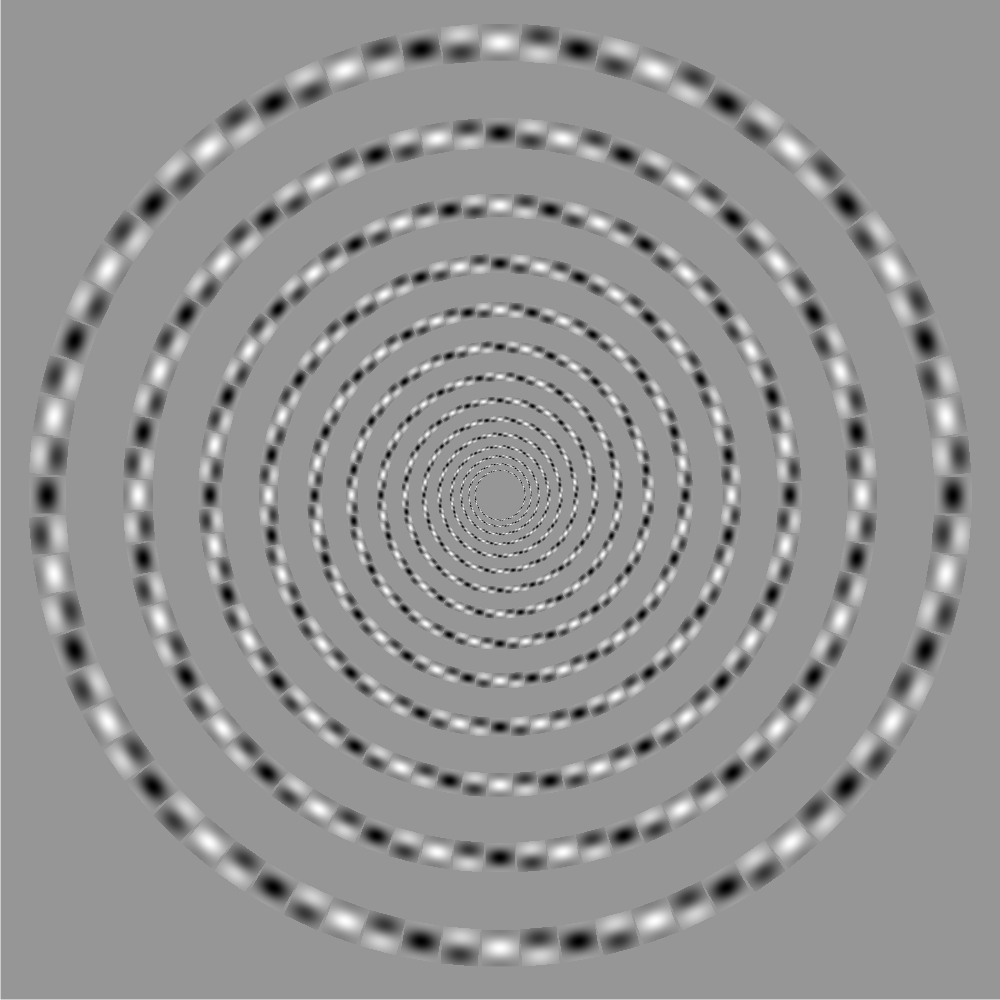
「藍藻スパイラル」
同心円が右に回転して中心に向かう渦巻きに見える。
Copyright Akiyoshi Kitaoka 2007 (August 29)
位相シフト錯視(ポップル錯視) 平行に配置した「細胞列」が交互に傾いて見える。
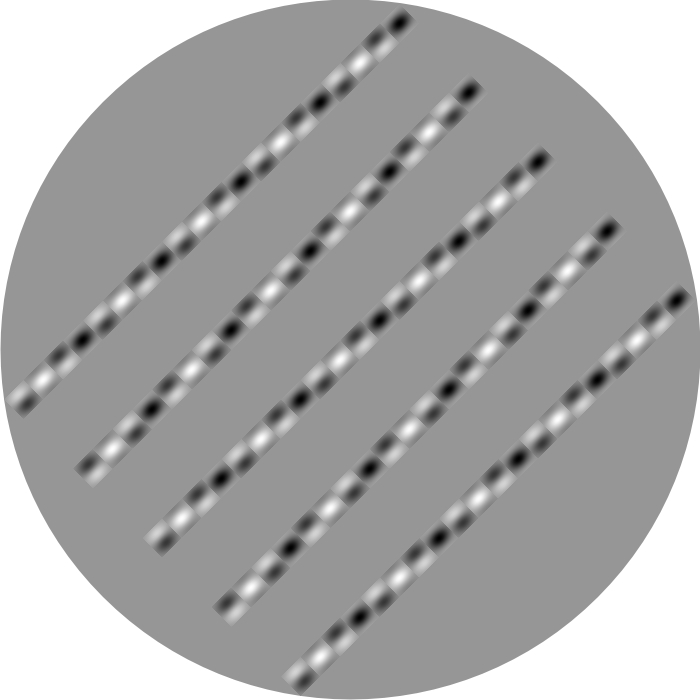
(作品「藍藻」 2007年制作)
Popple, A. V. and Levi, D. M. (2000) A new illusion demonstrates long-range
processing. Vision Research, 40, 2545-2549.
Popple, A. V. and
Sagi, D. (2000) A Fraser illusion without local cues? Vision Research,
40, 873-878.
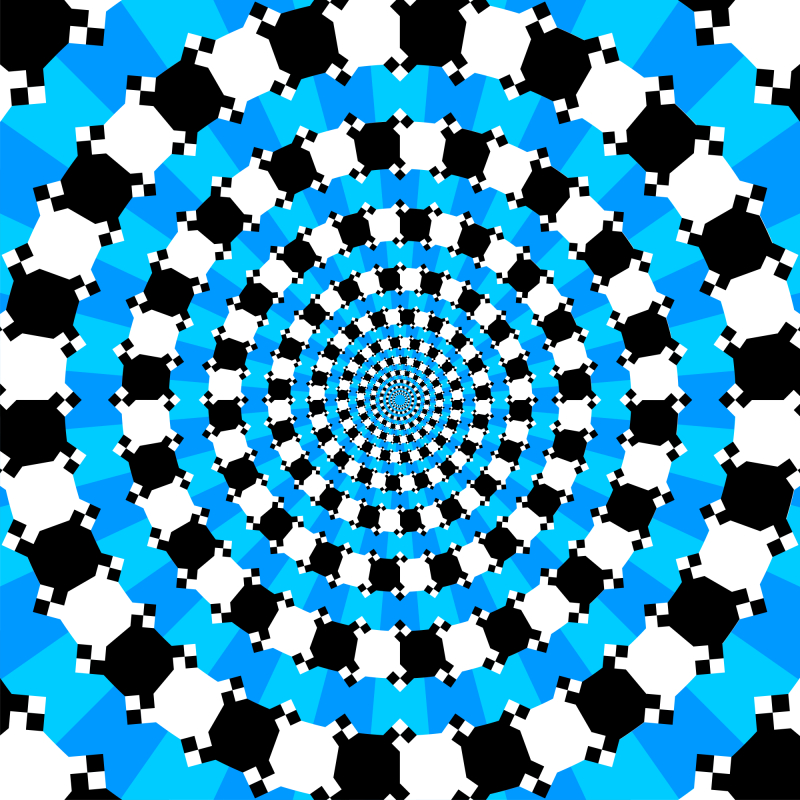
「水の渦」
同心円が渦巻きに見える。
Copyright Akiyoshi Kitaoka 2009 (March 3)
縁飾りエッジの錯視 平行に配置した「水路」が上から左・右・左・右に傾いて見える。
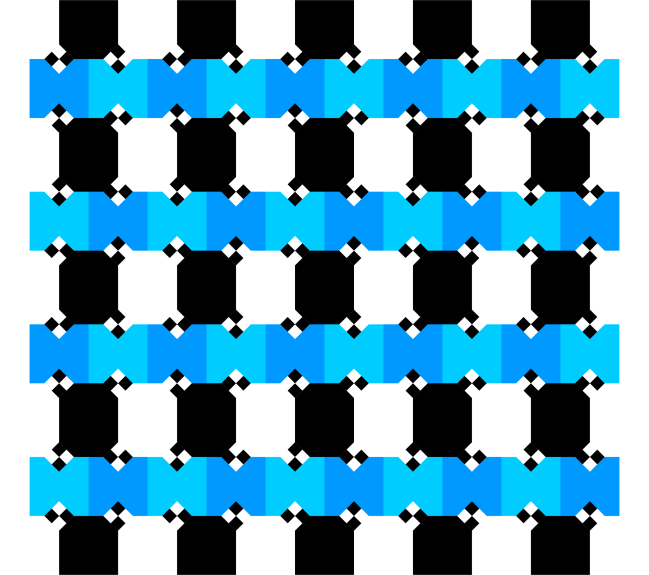
(作品「水路」 2007年制作)
Kitaoka, A. (2007) Tilt illusions after Oyama (1960): A review. Japanese Psychological Research, 49, 7-19. PDF
Kitaoka, A., Pinna, B., and Brelstaff, G. (2004). Contrast polarities determine the direction of Café Wall tilts. Perception, 33, 11-20. PDF.
渦巻き錯視の説明 (Kitaoka et al., 2001)
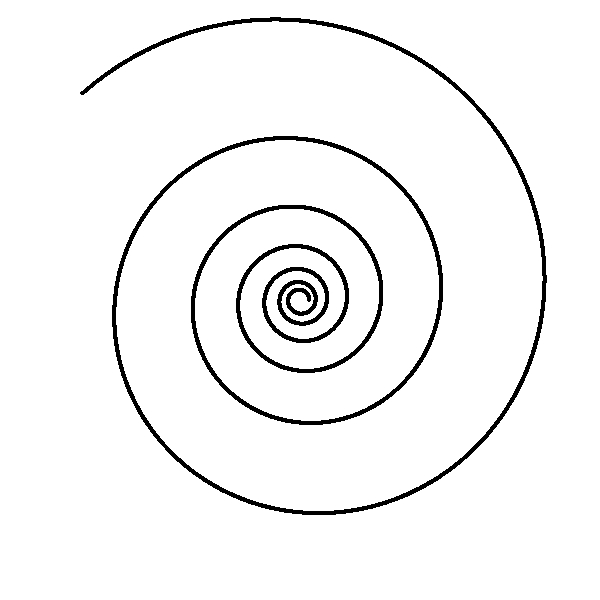
Bernoulli's spiral
r = a exp (k θ)
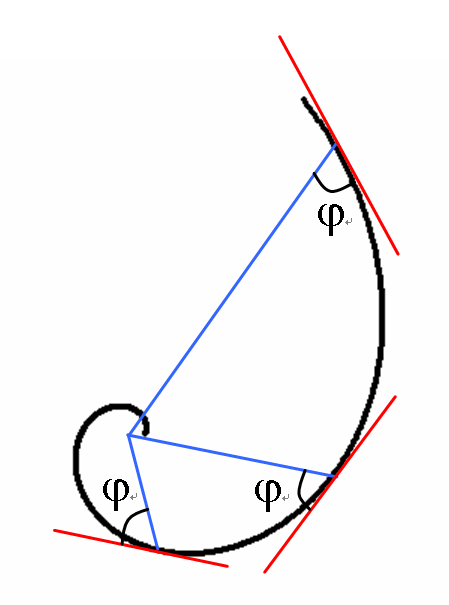
= equiangular spiral
k = 1 / tan (φ)
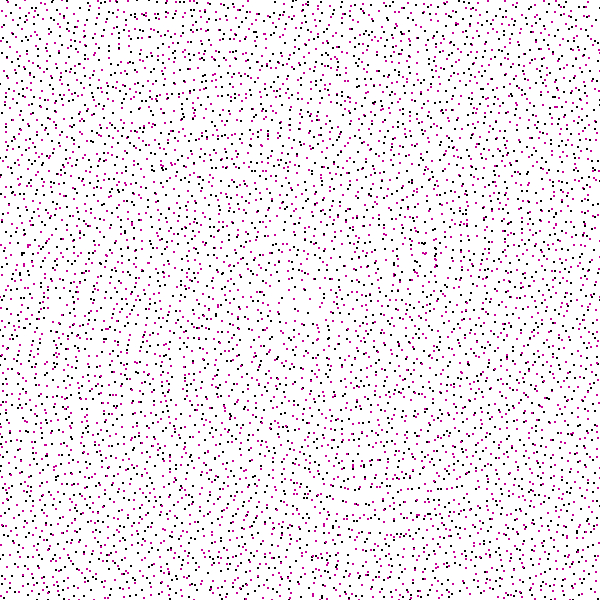
Spiral Glass pattern
φ = 70º
Kitaoka, A., Pinna, B., and Brelstaff, G. (2001). New variations of spiral illusions. Perception, 30, 637-646. PDF
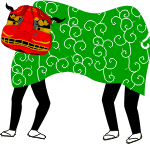 おしまい
おしまい

